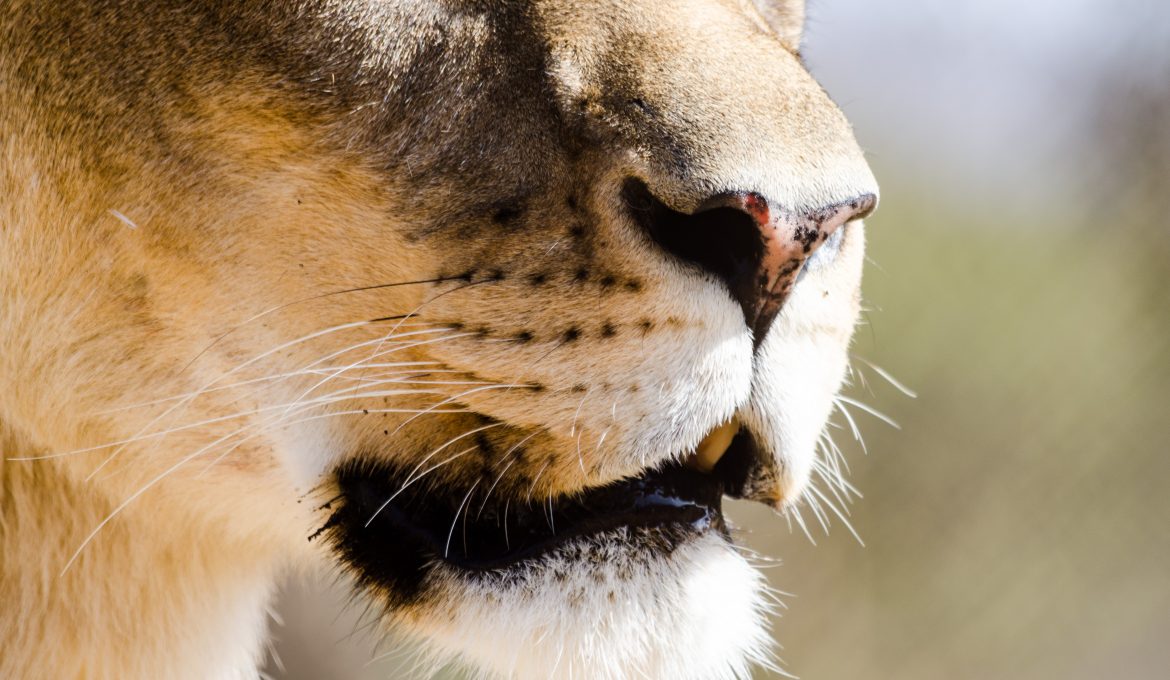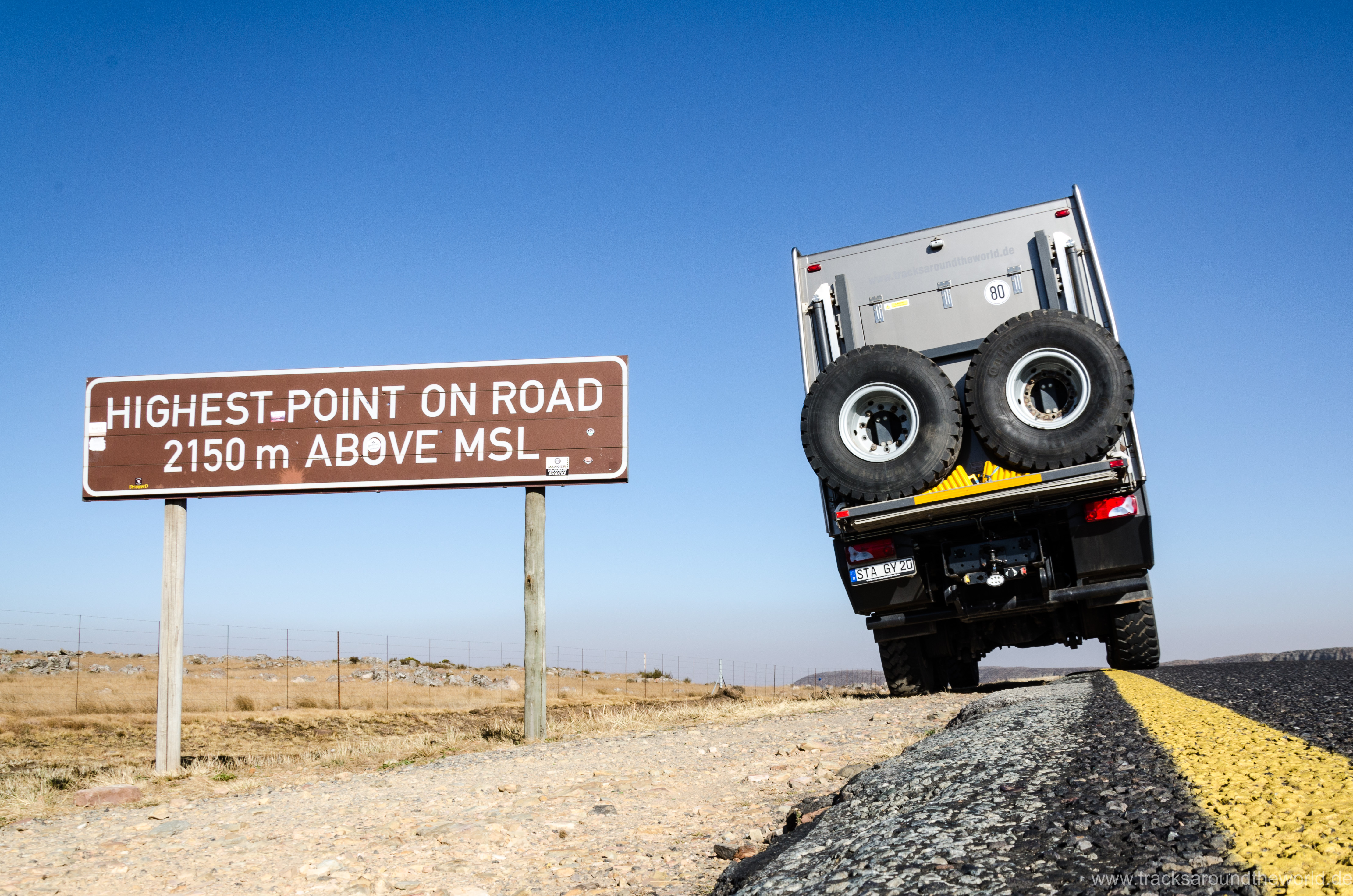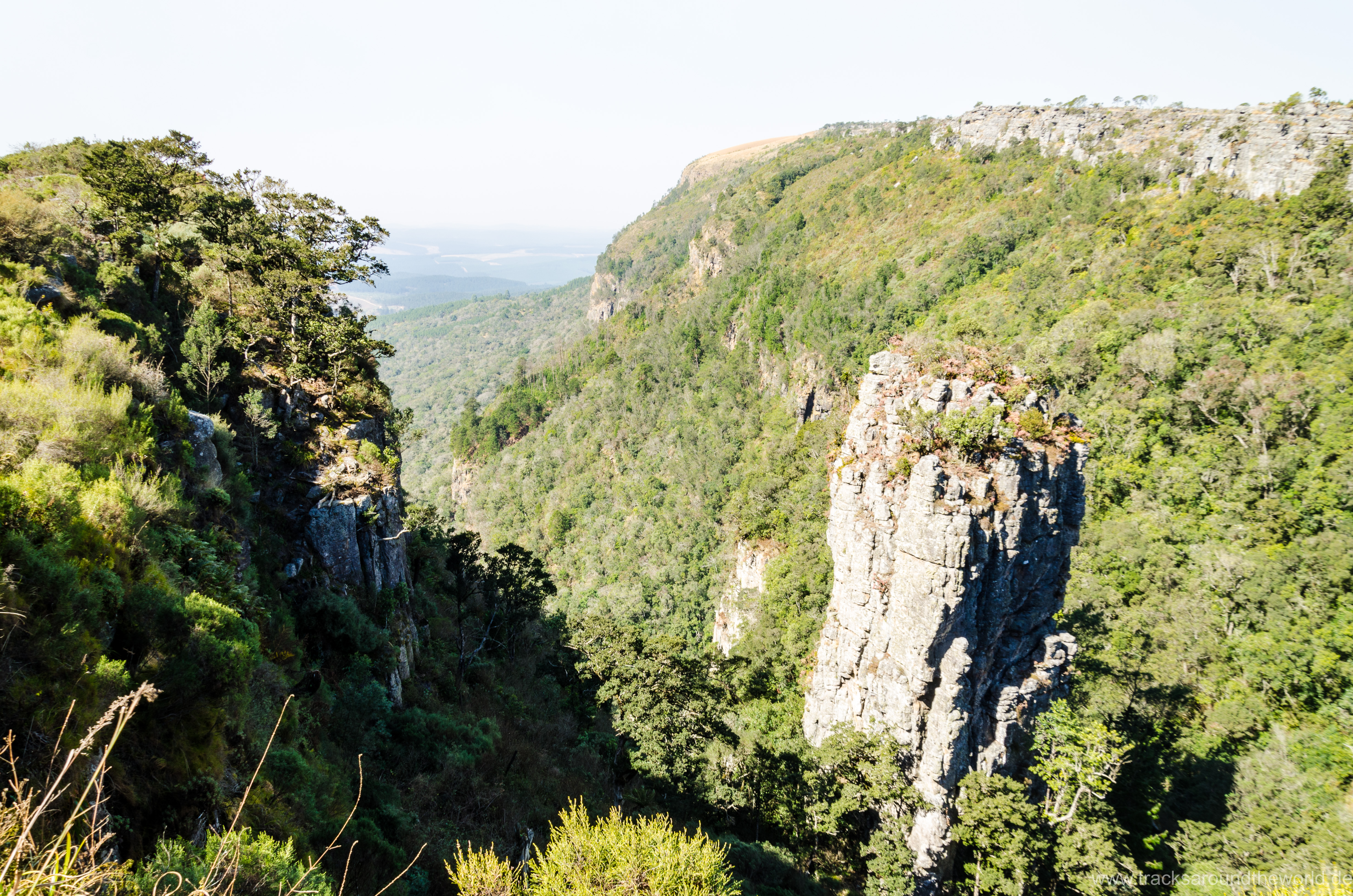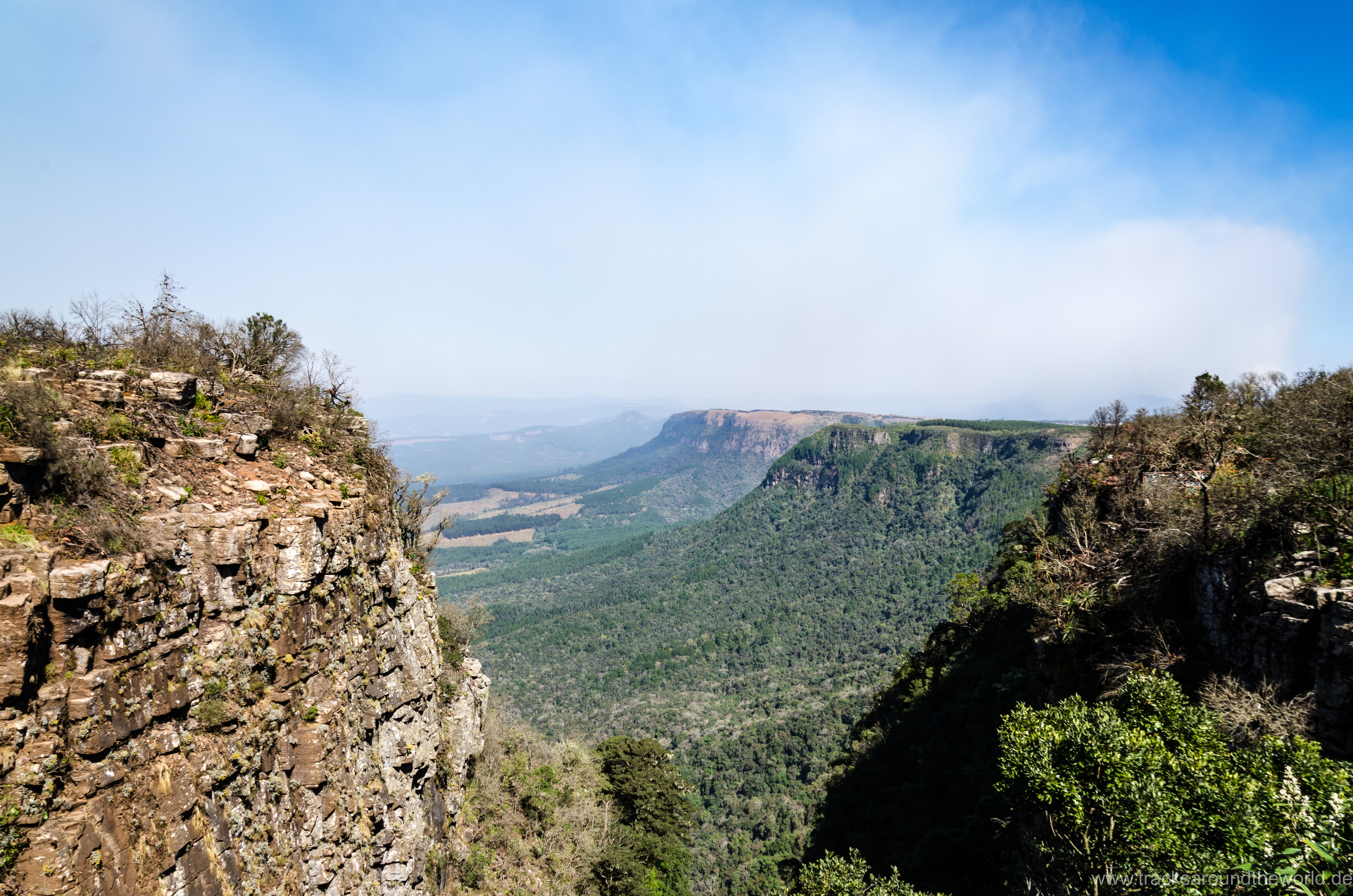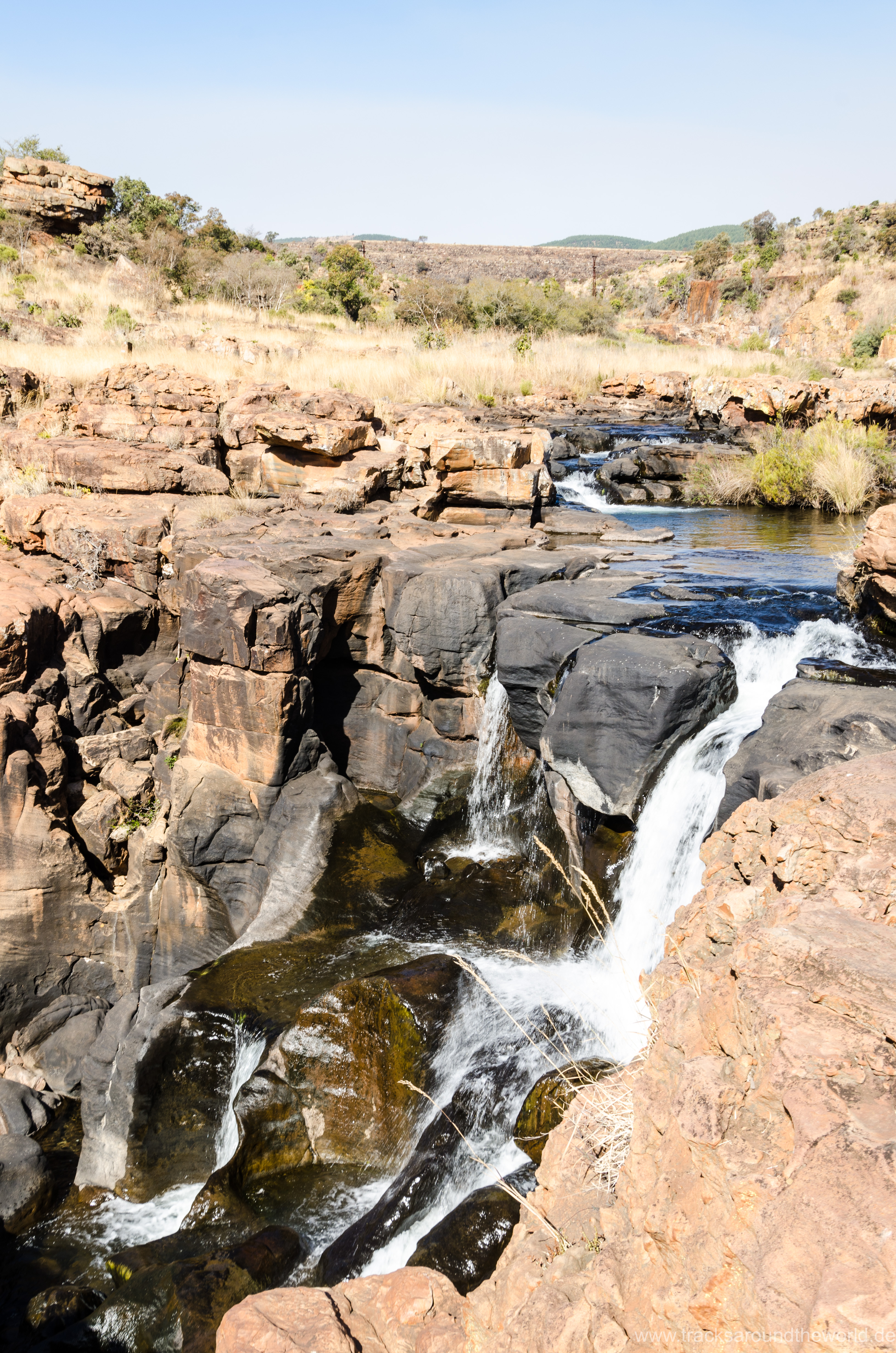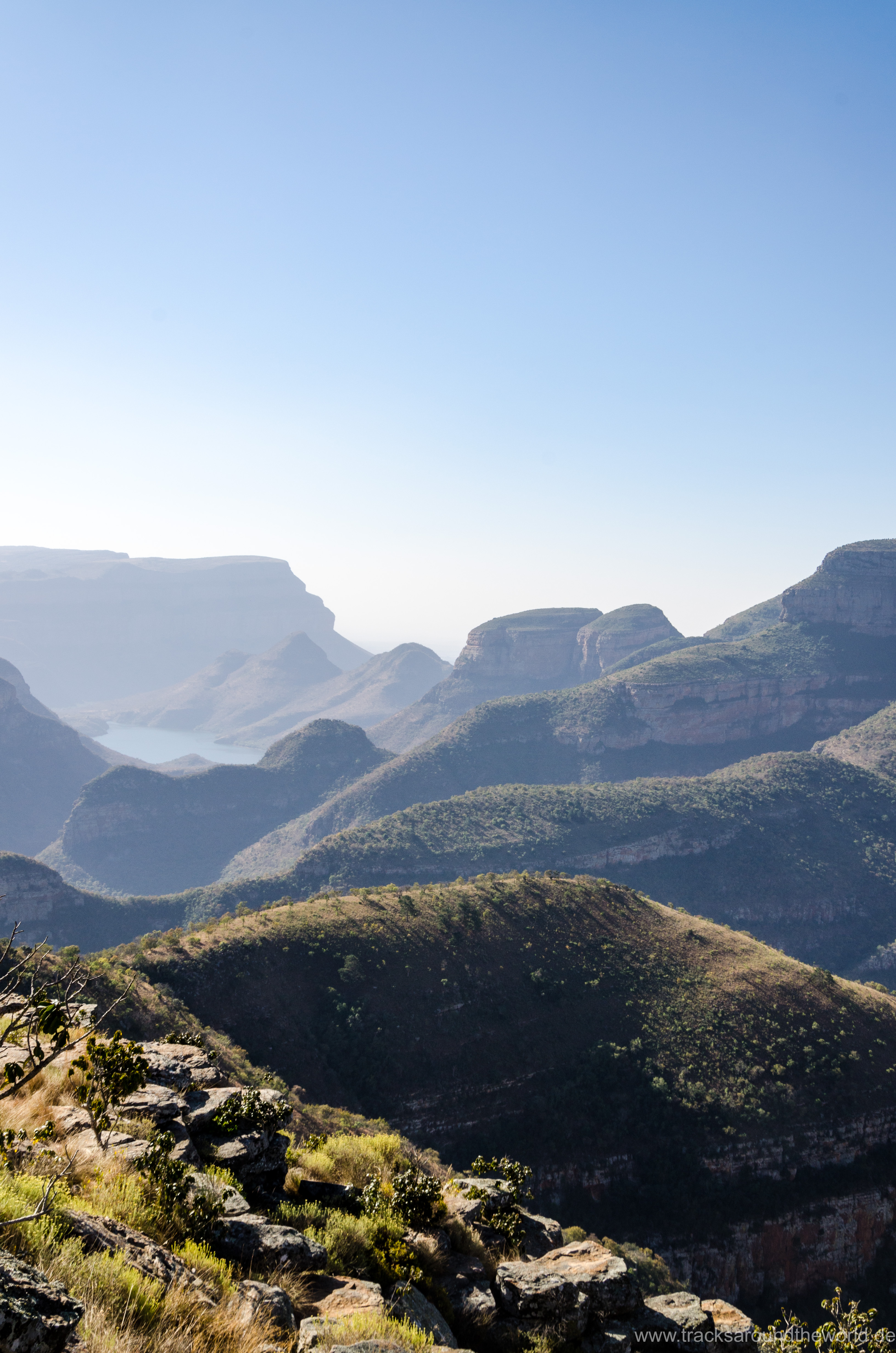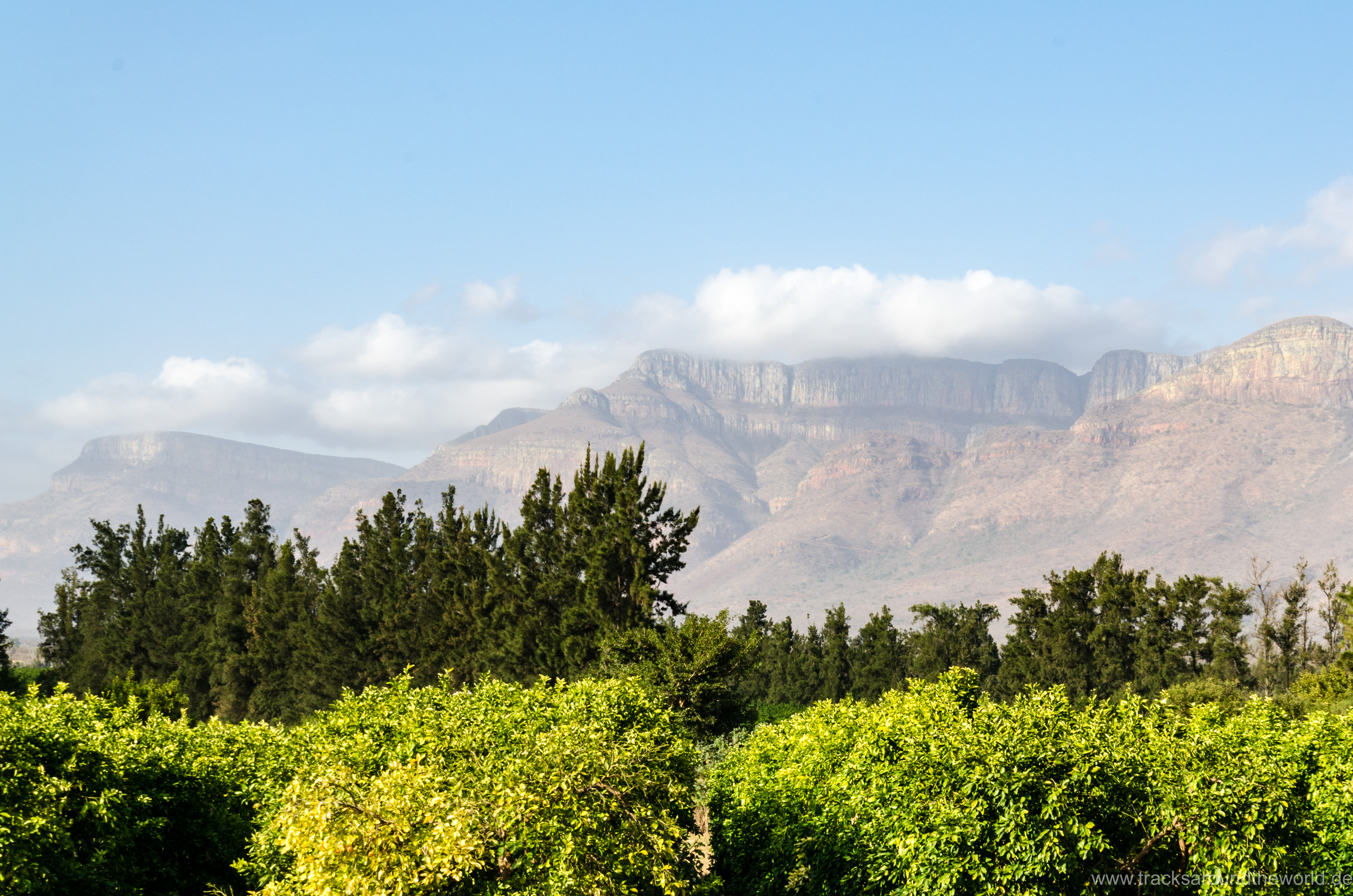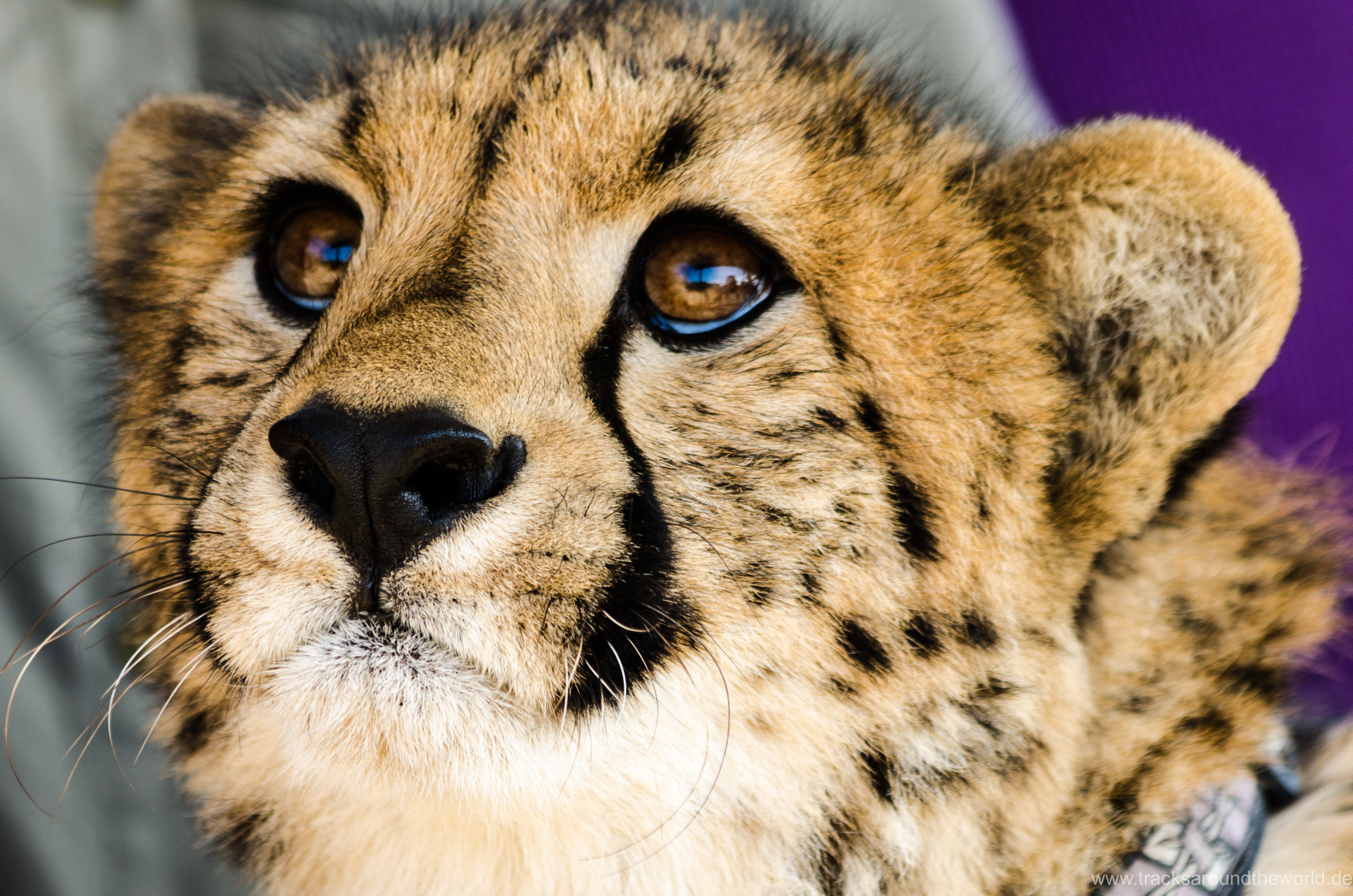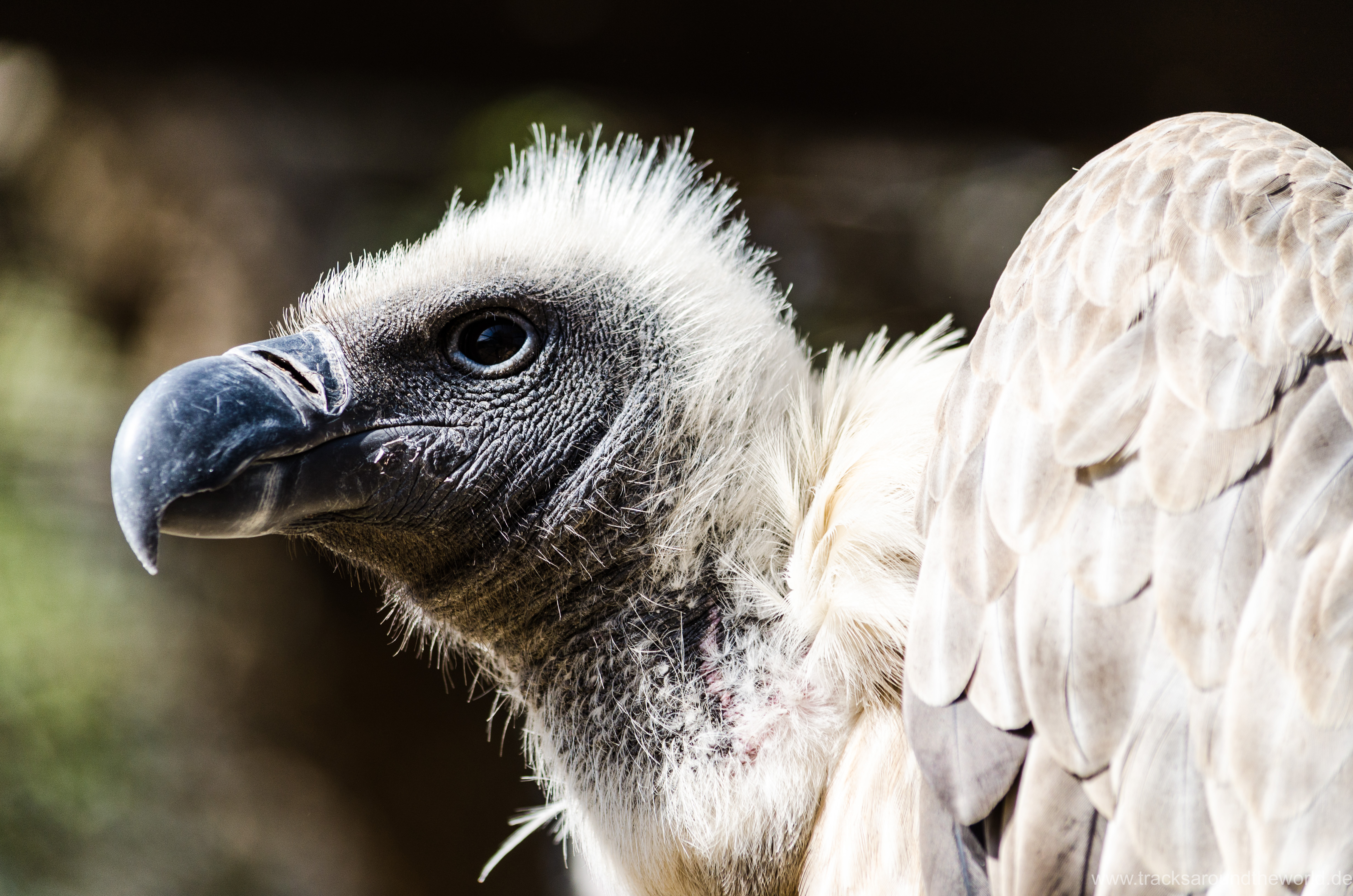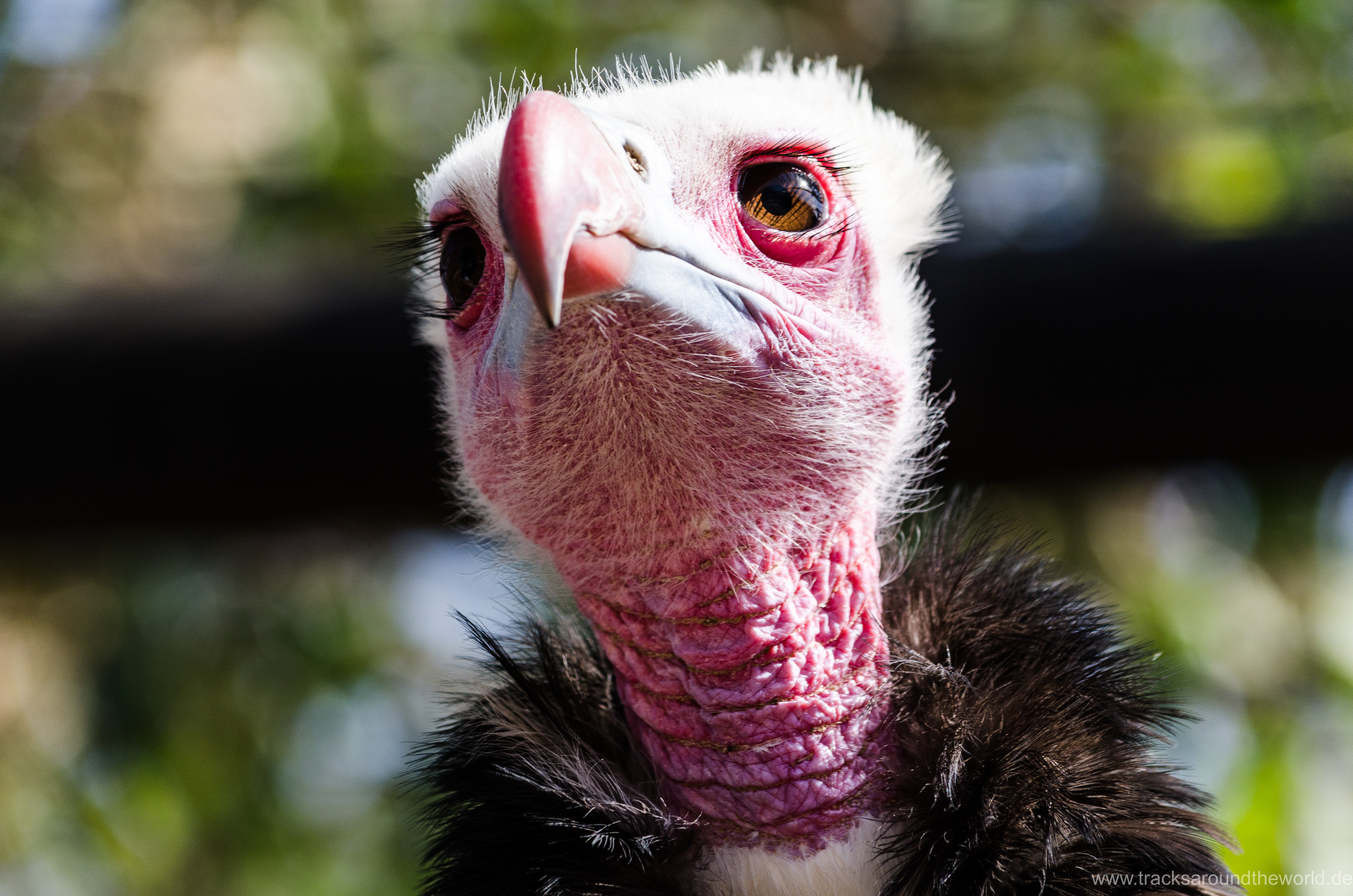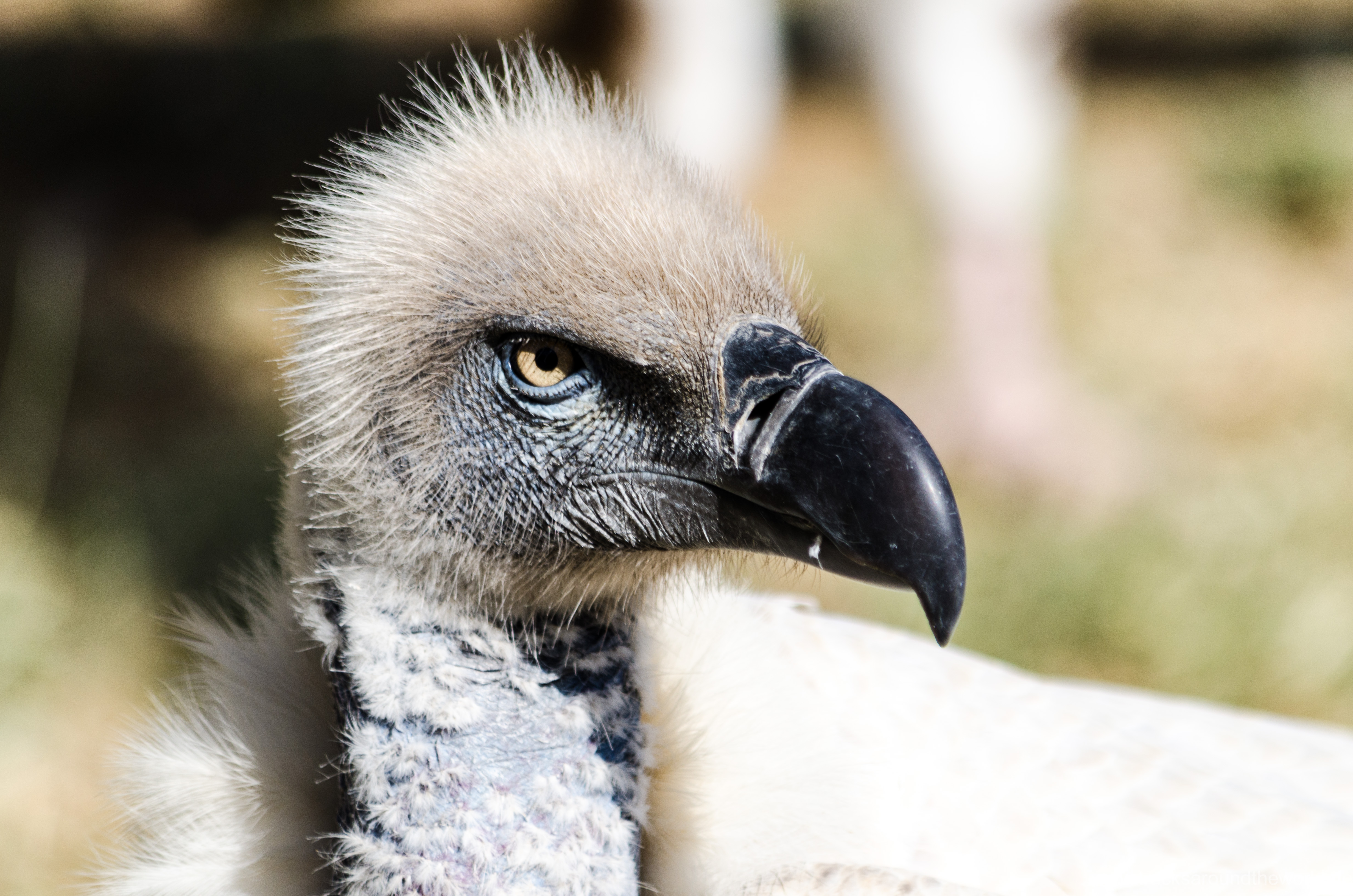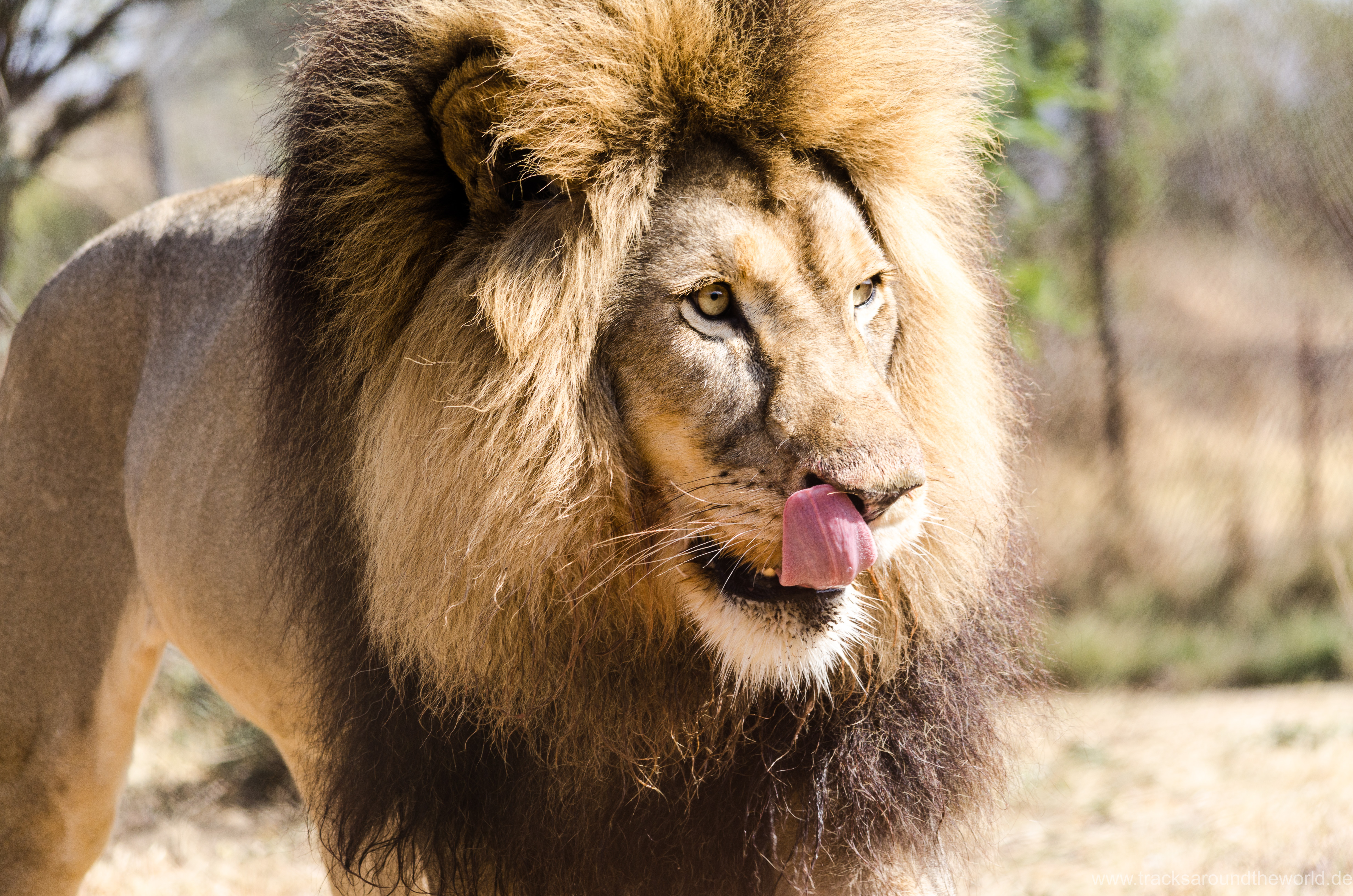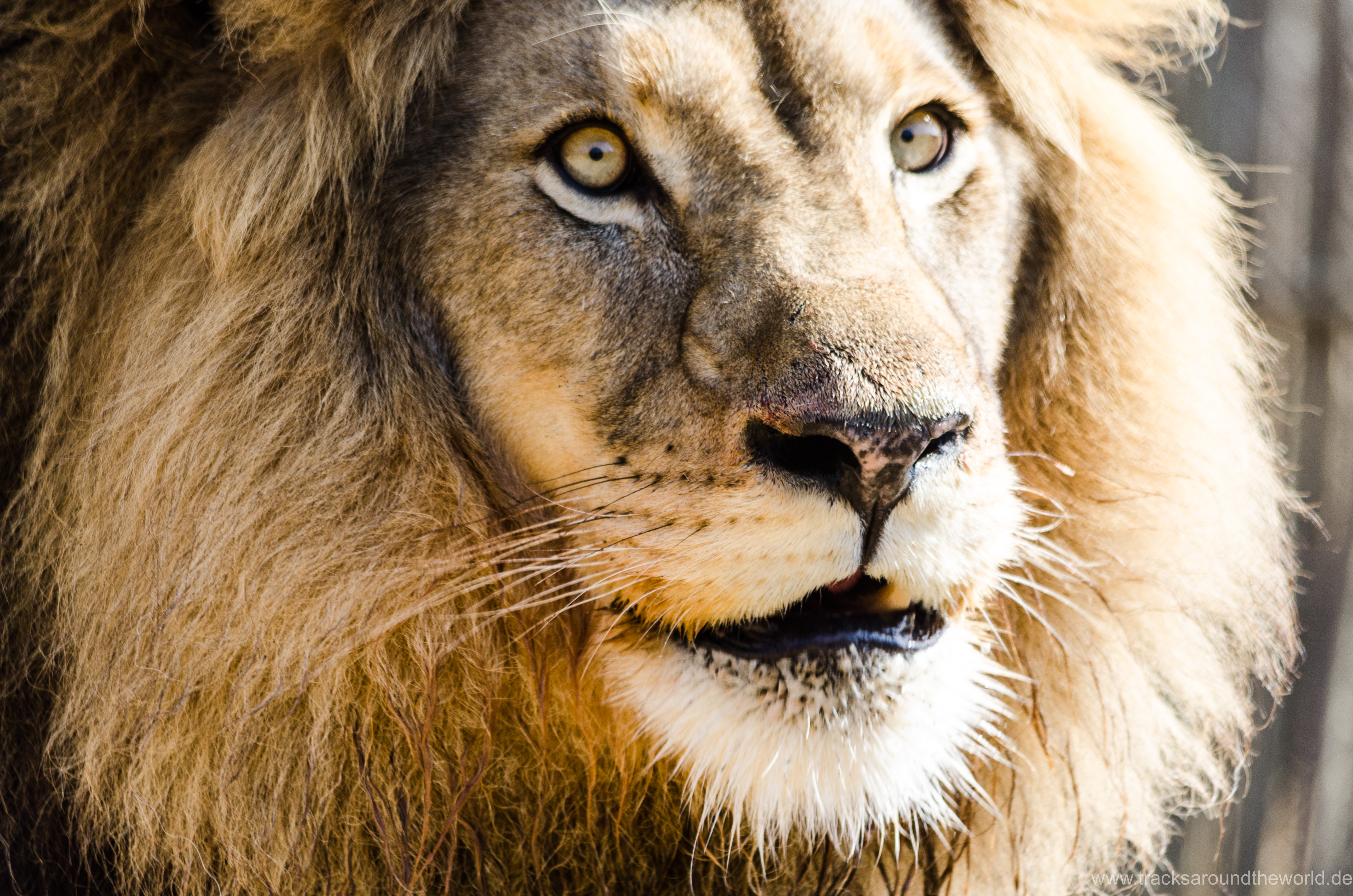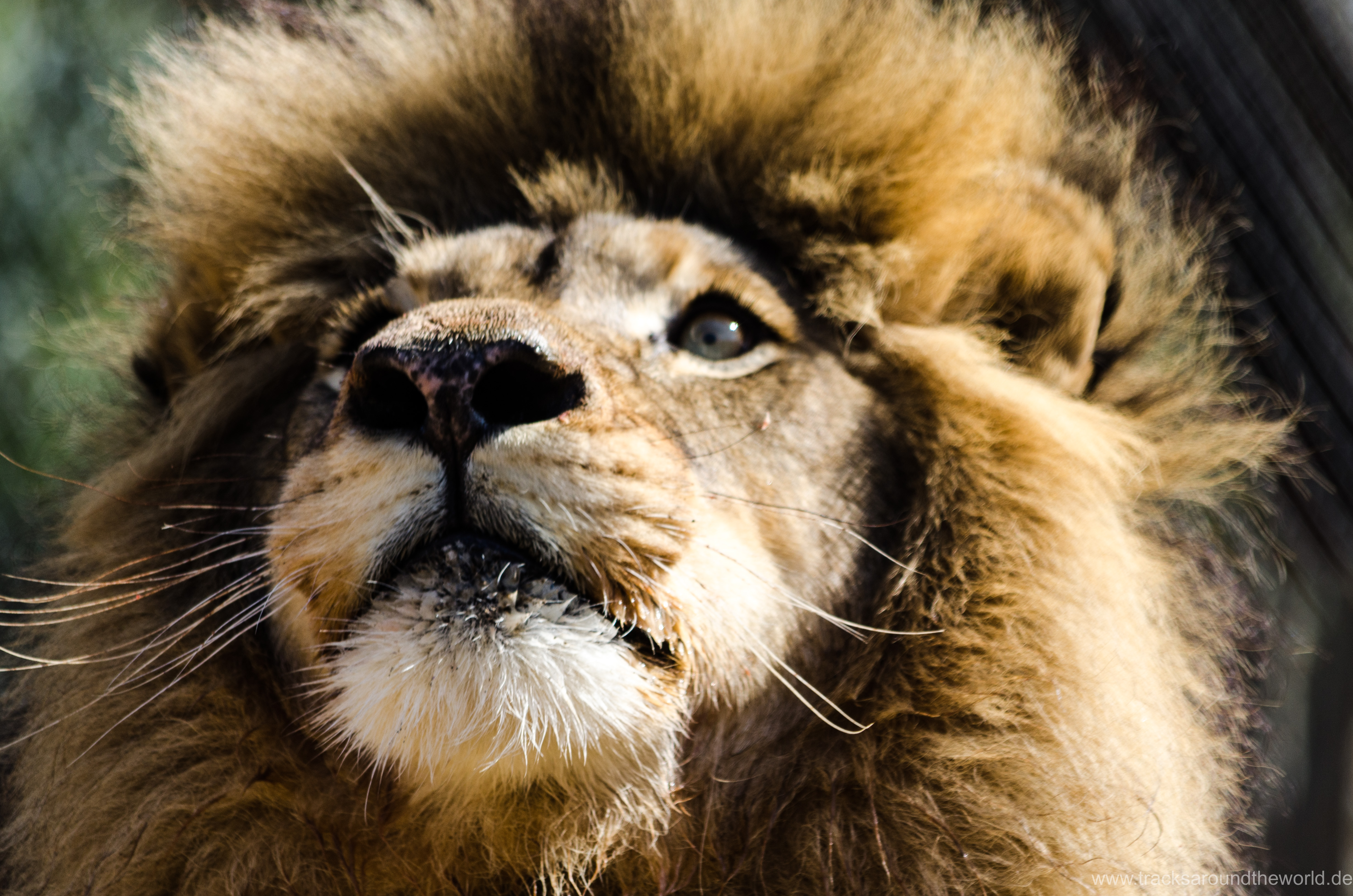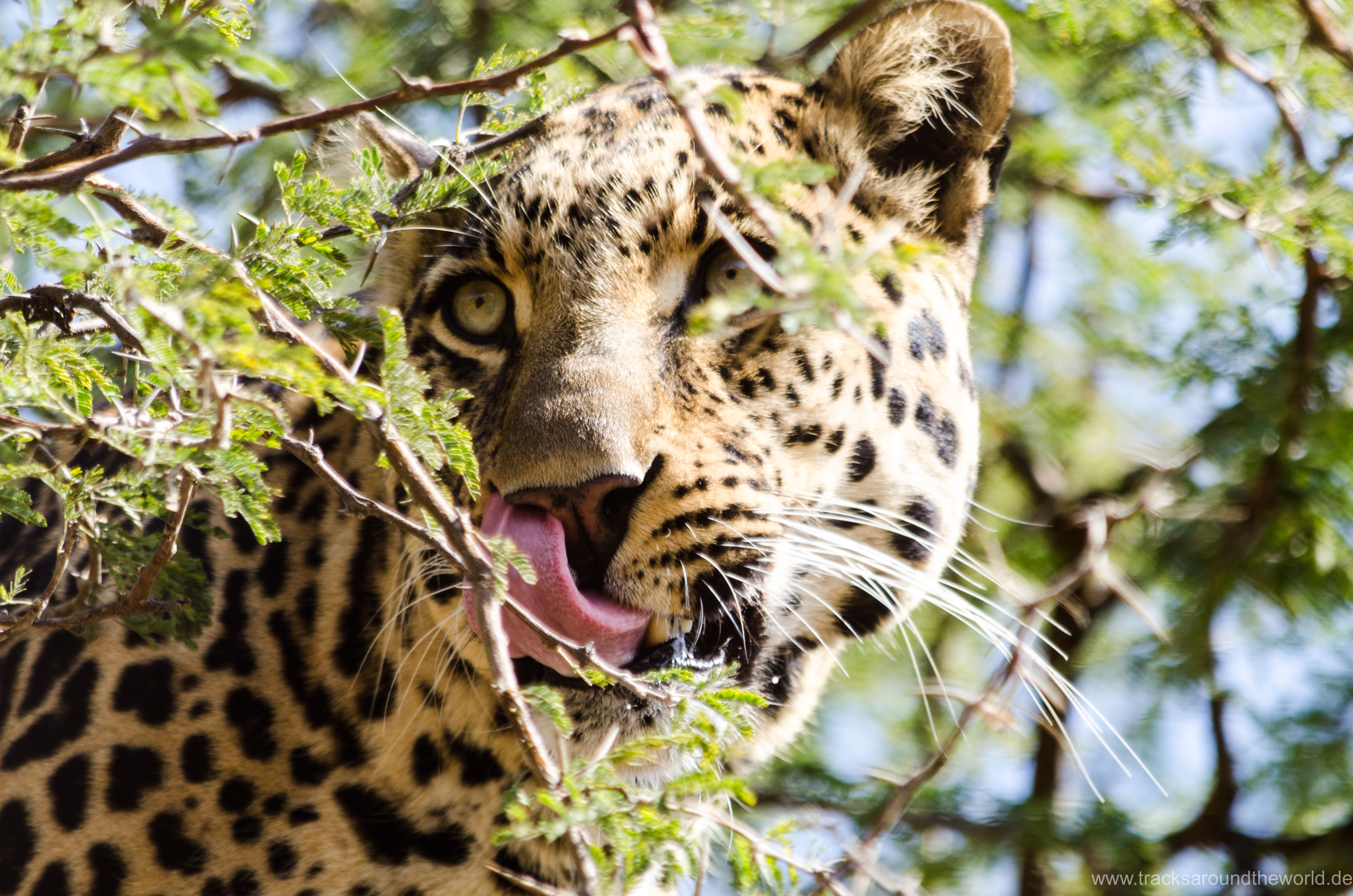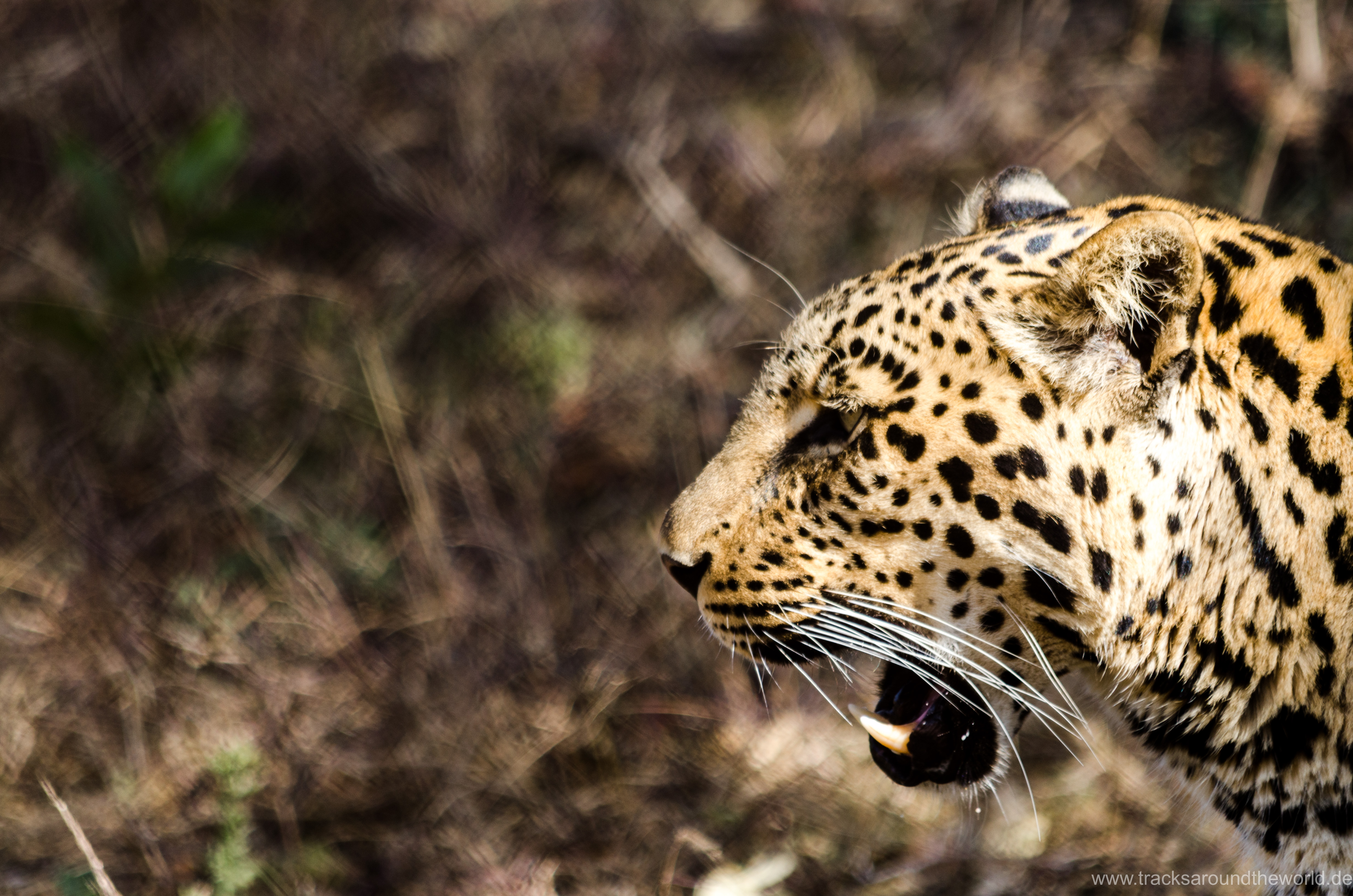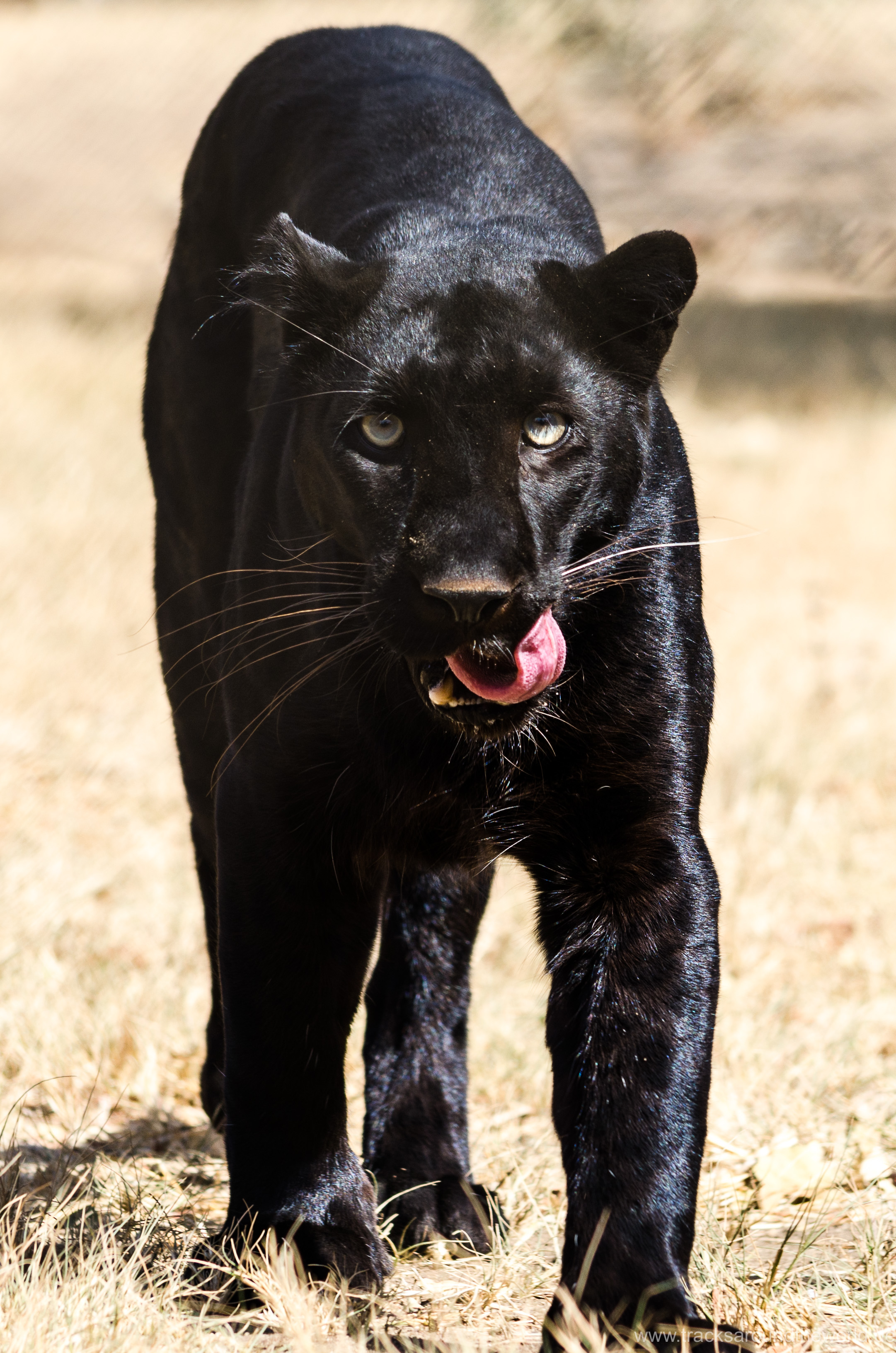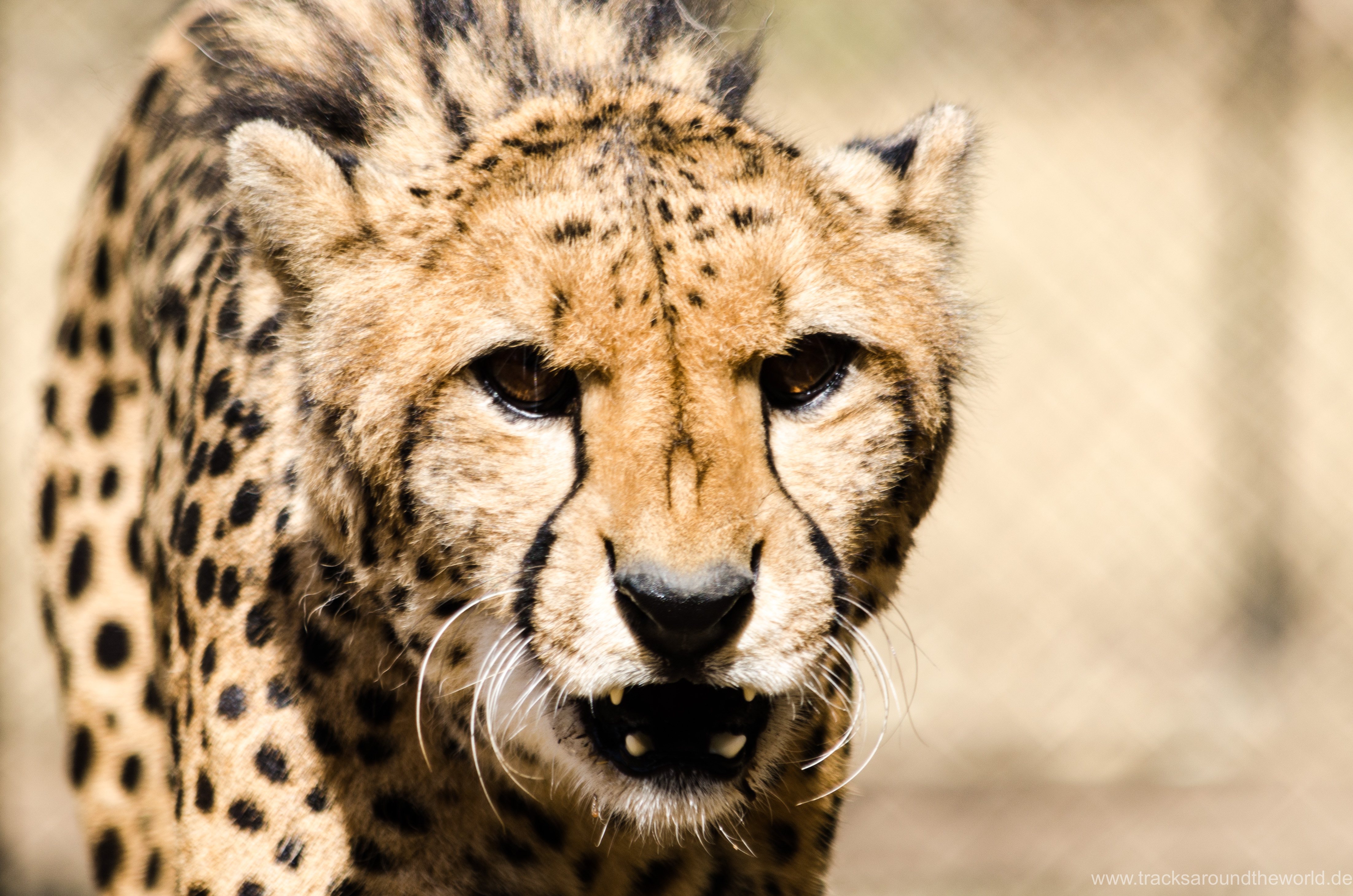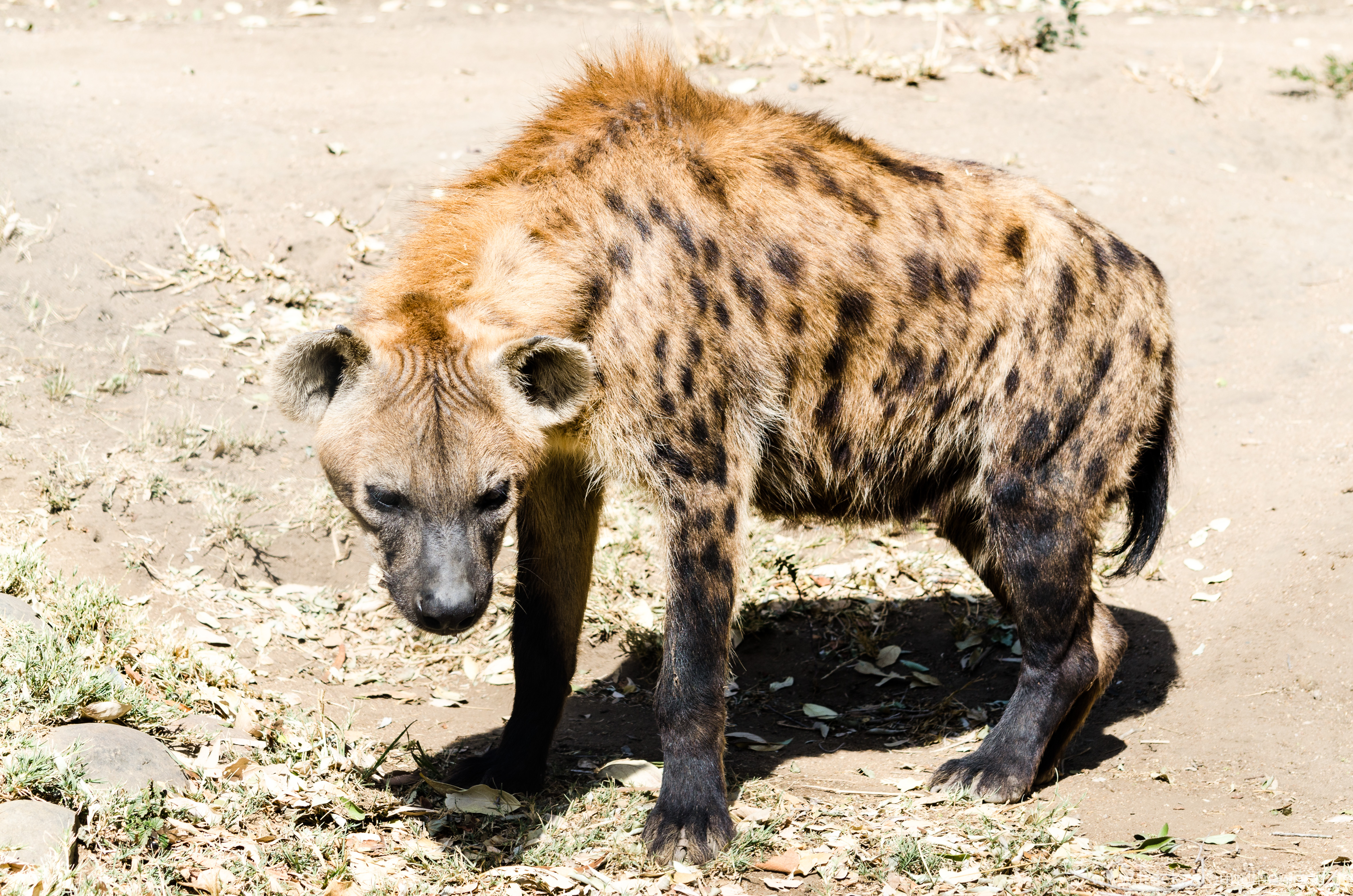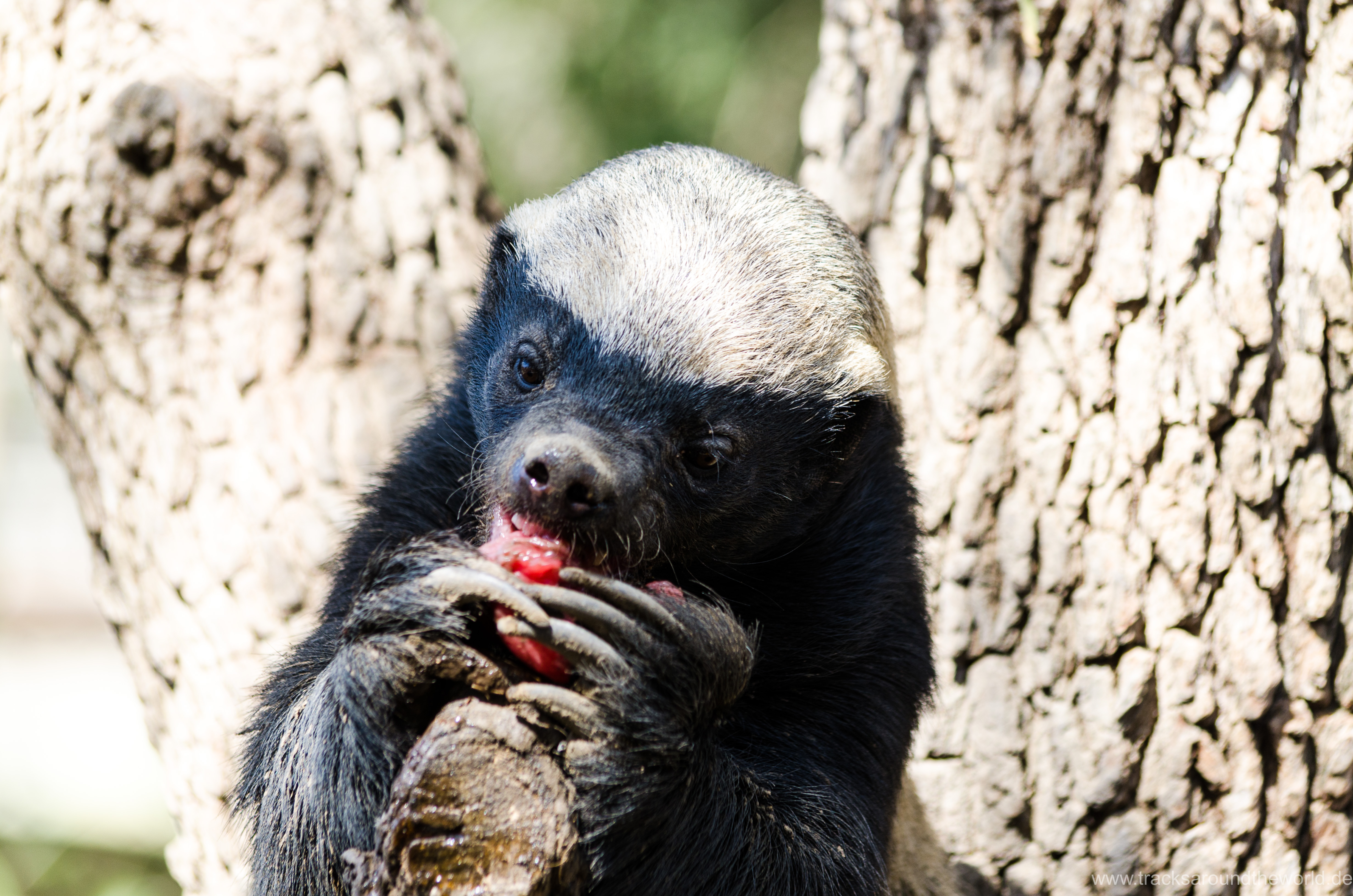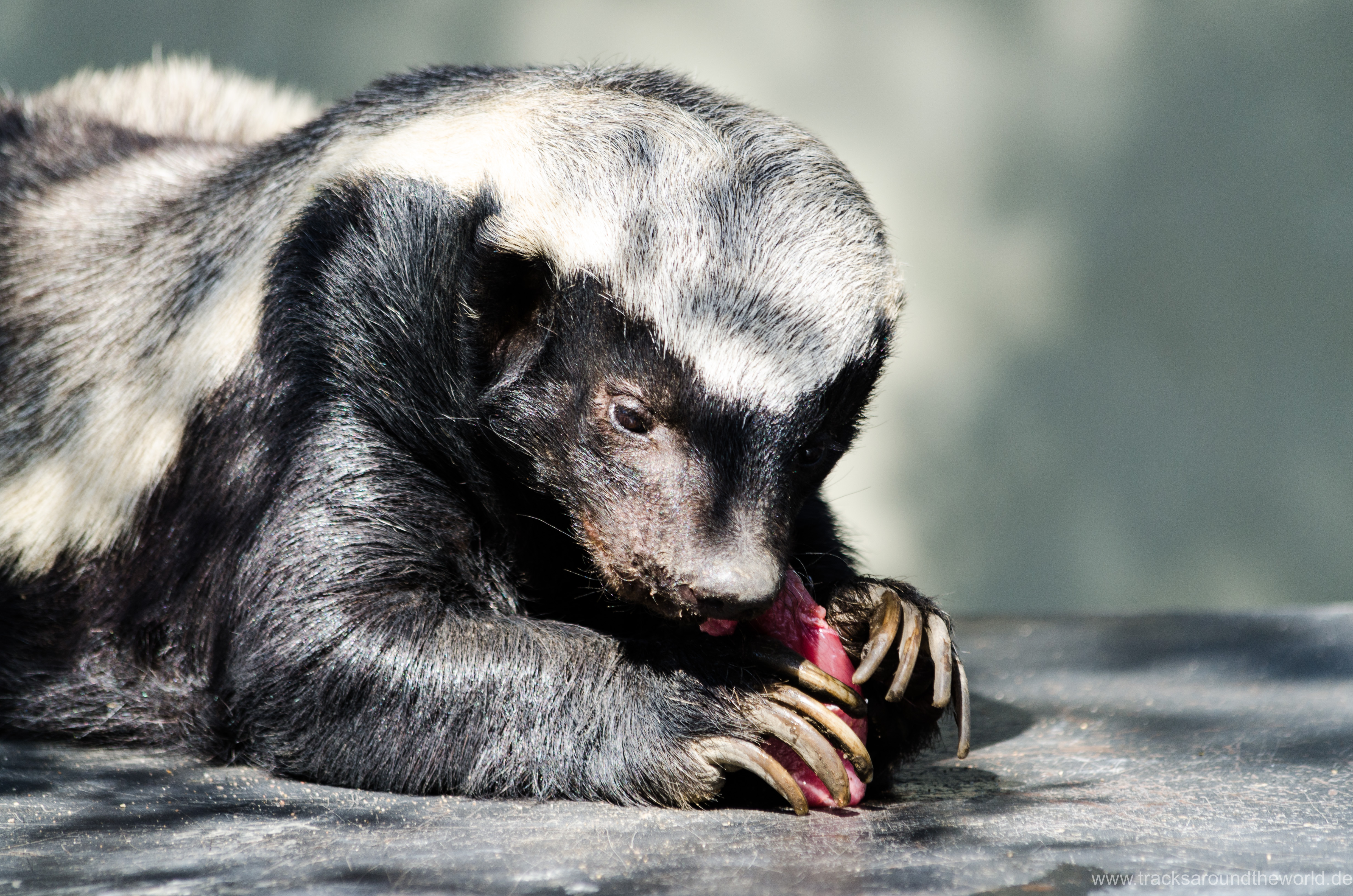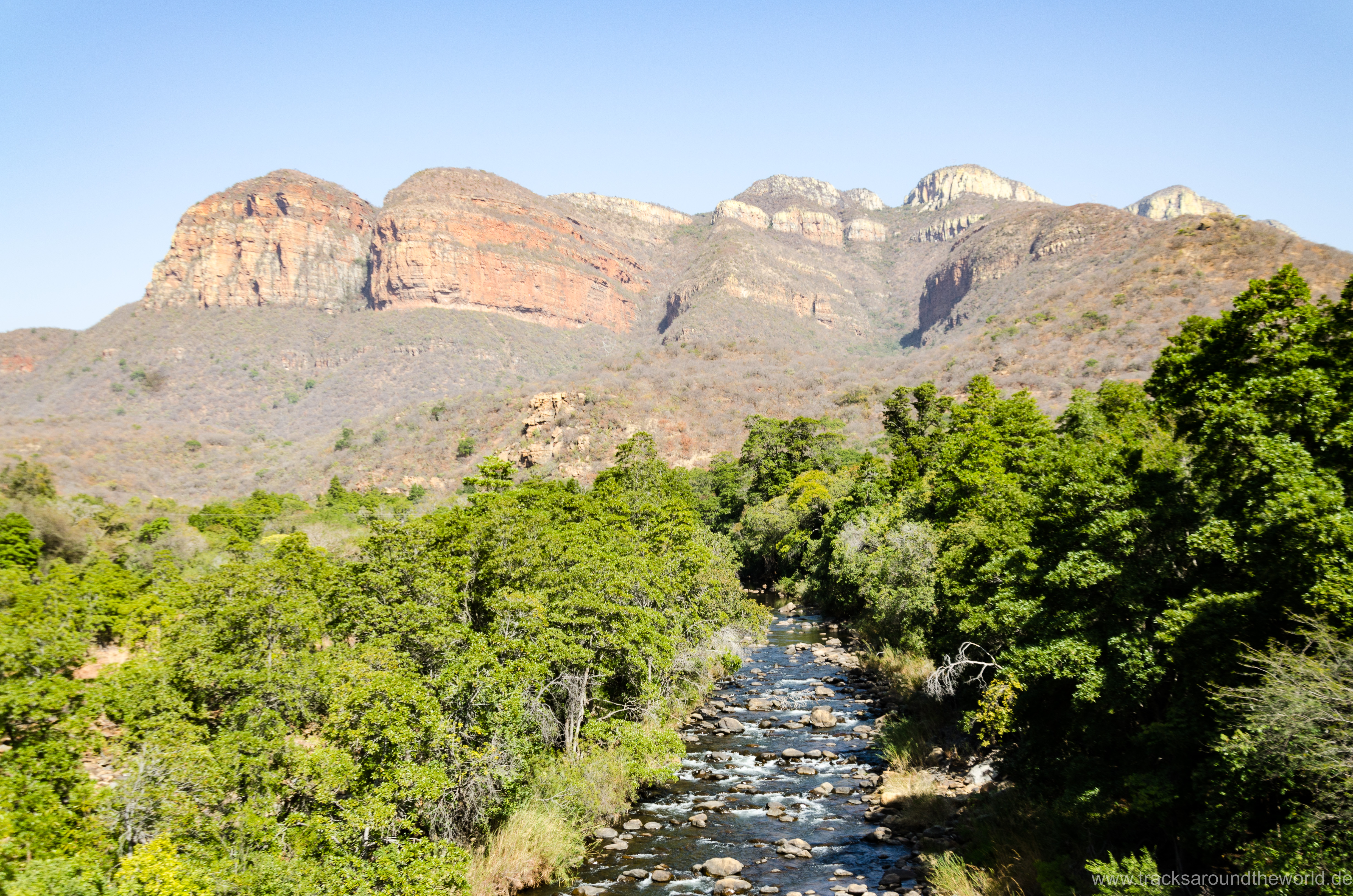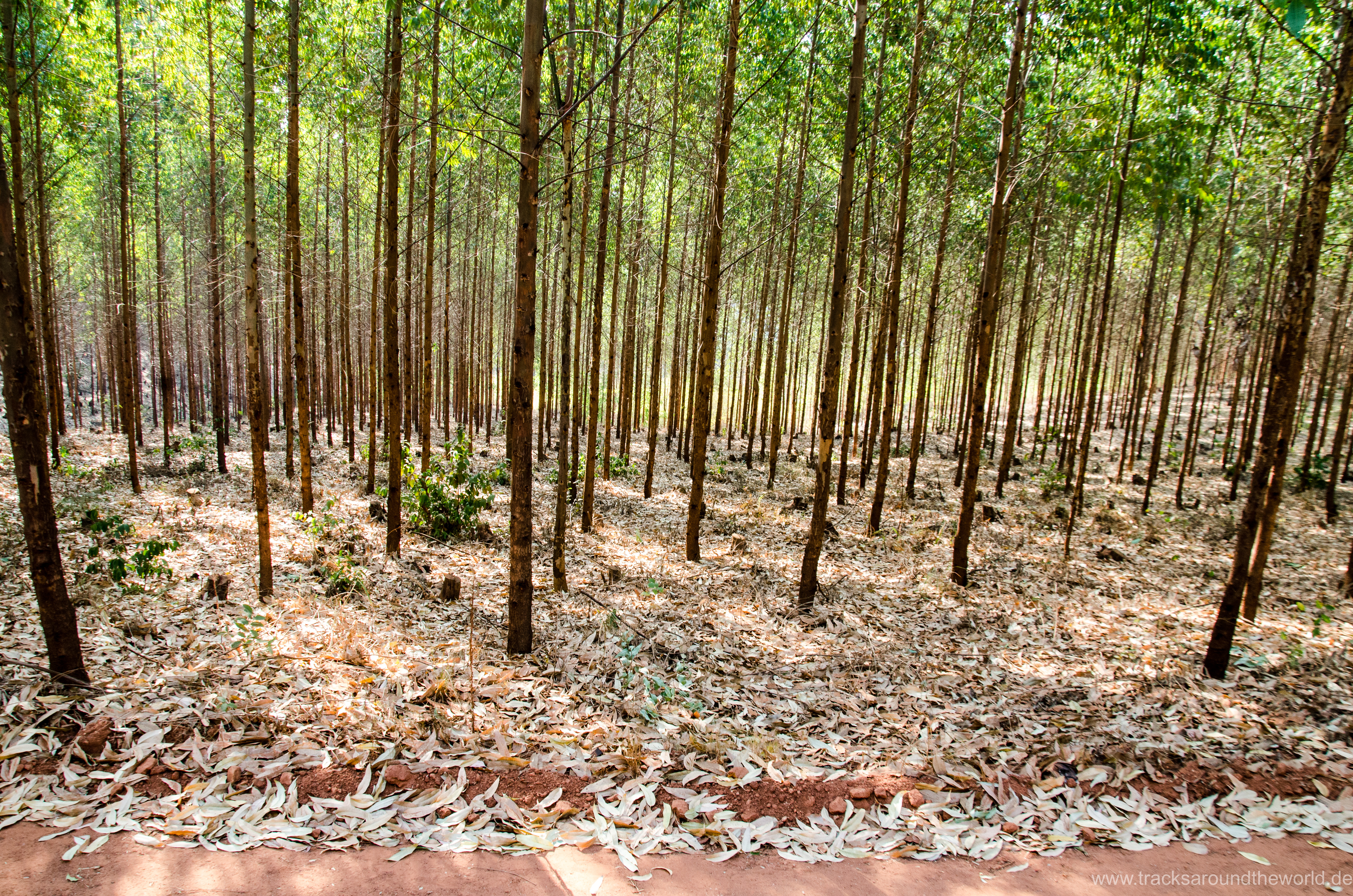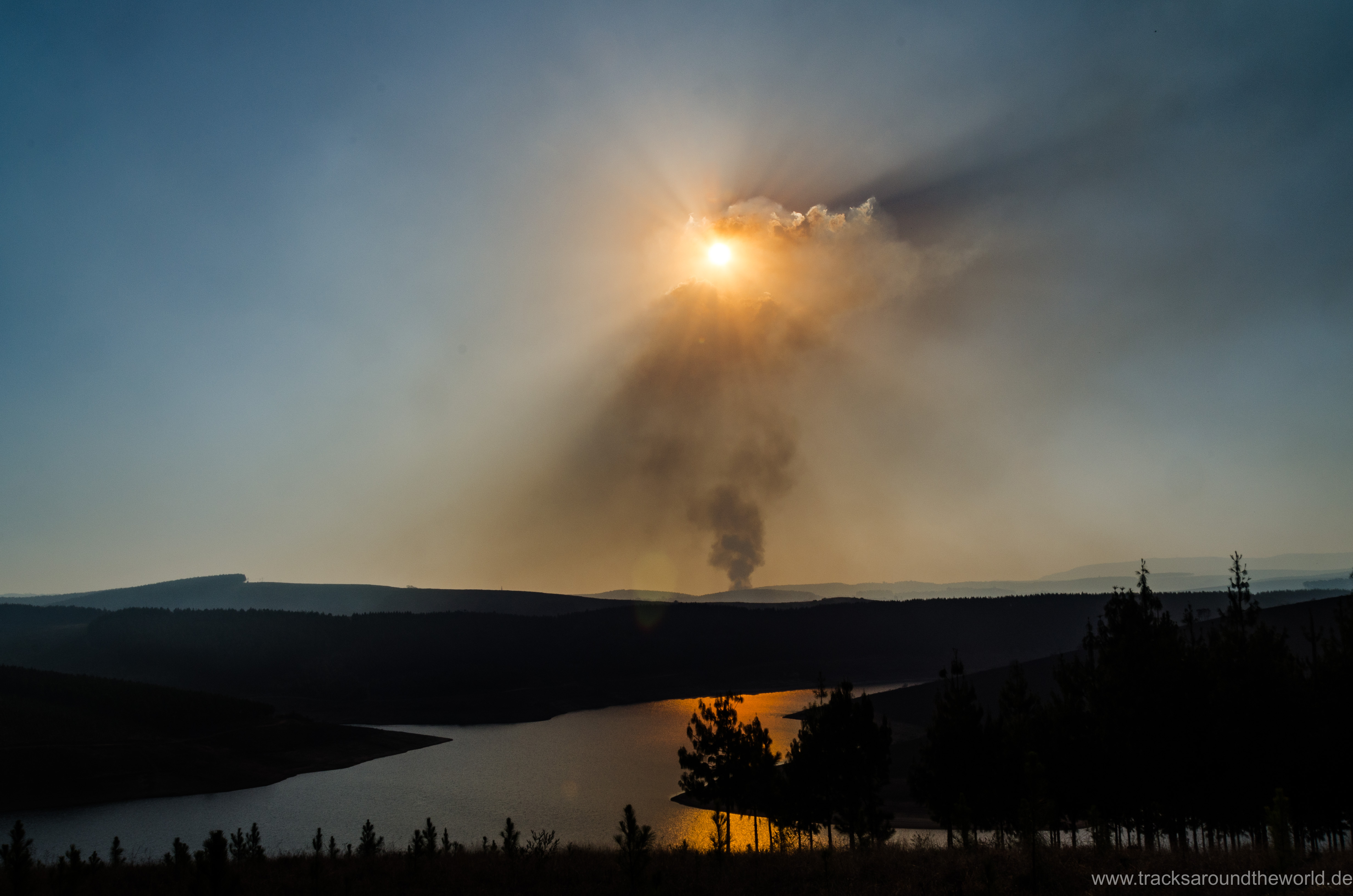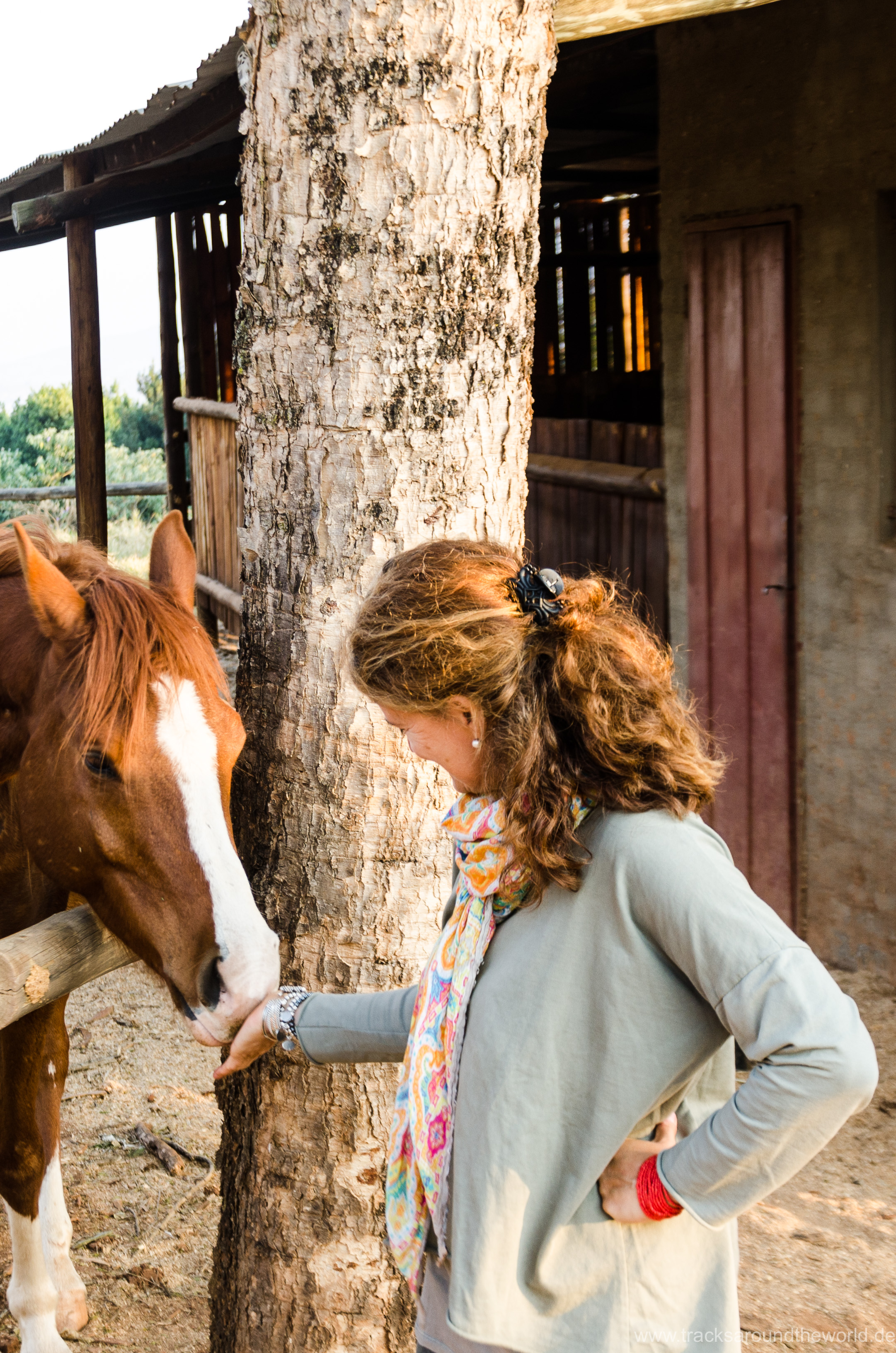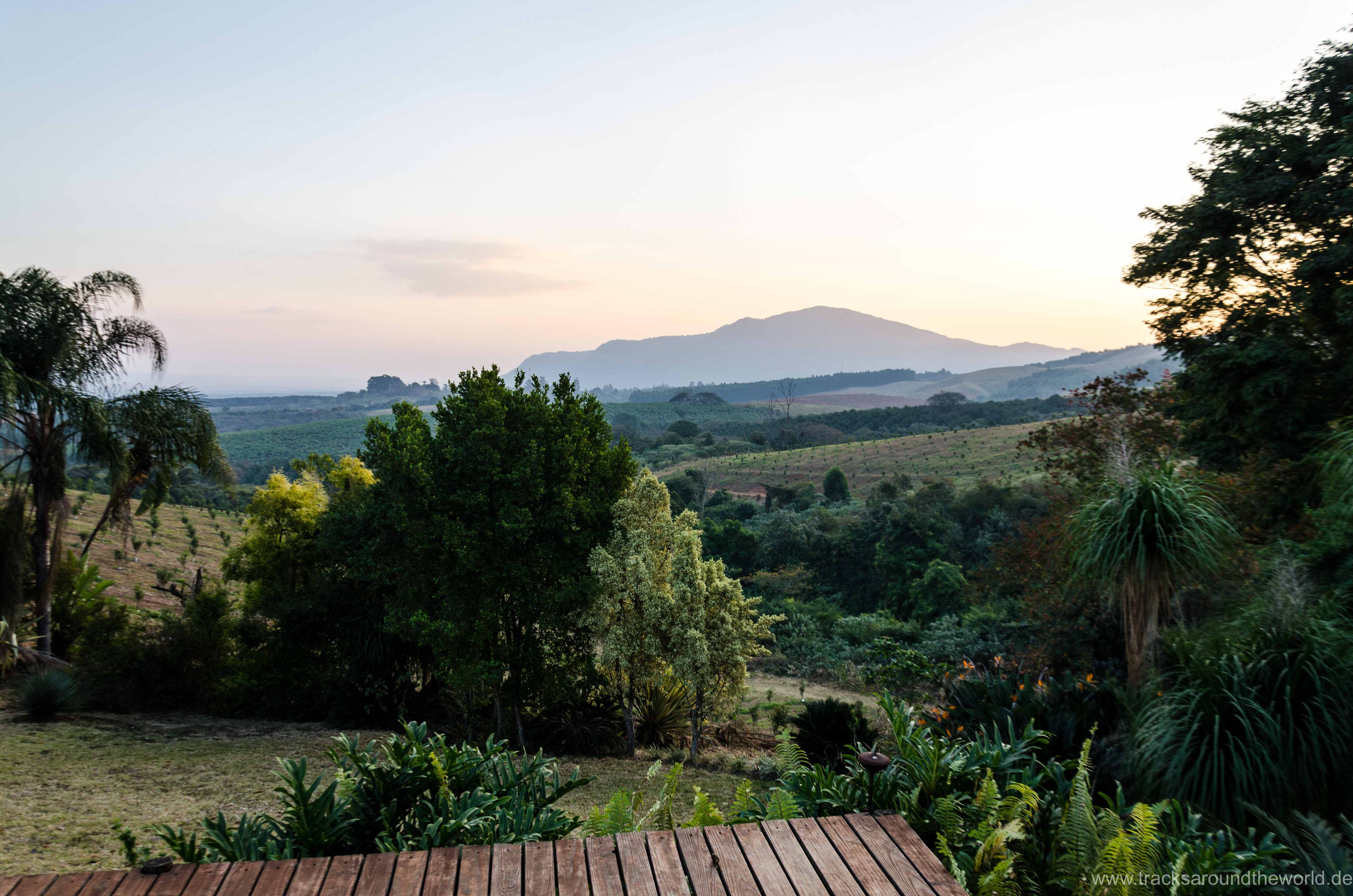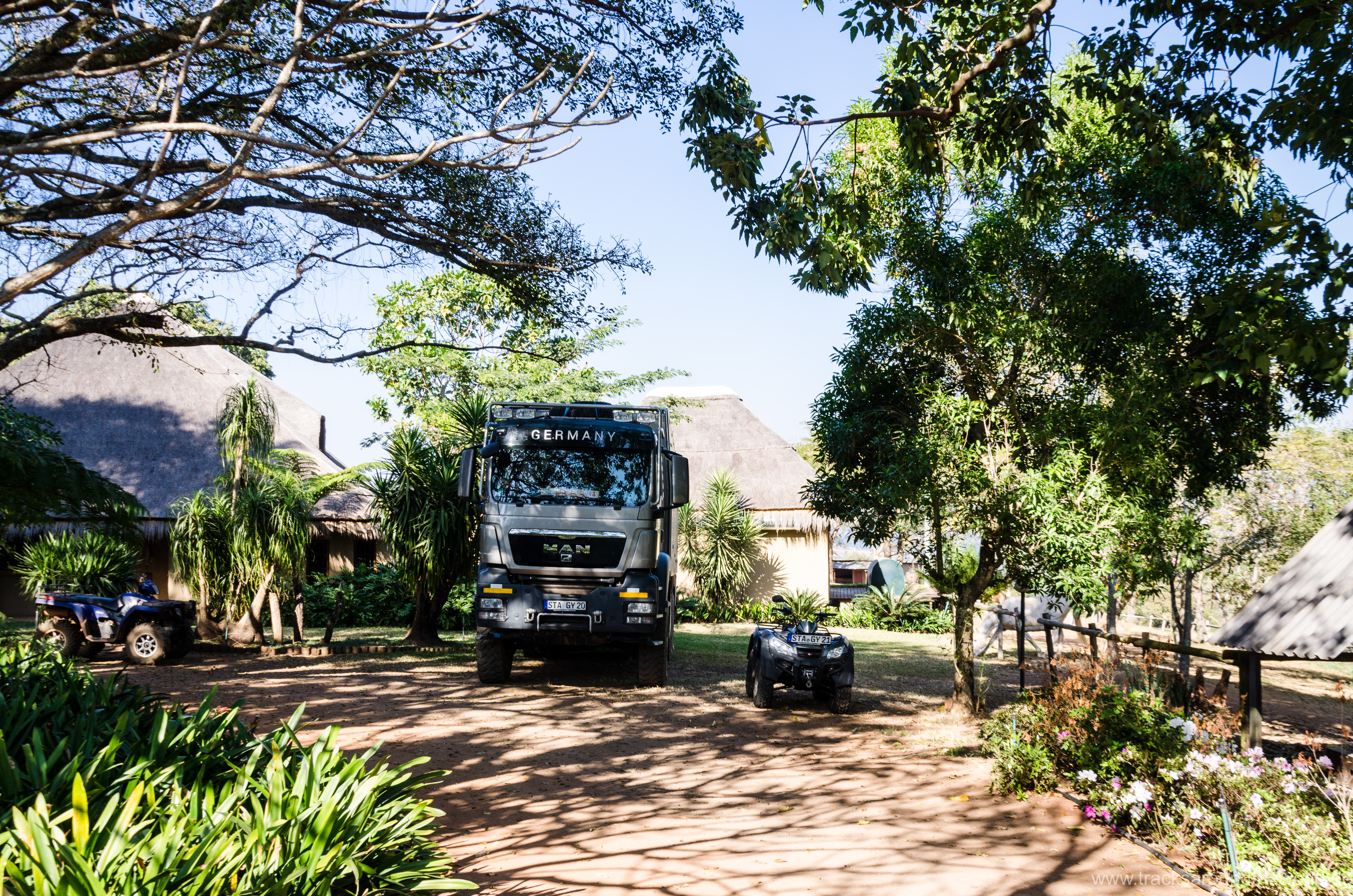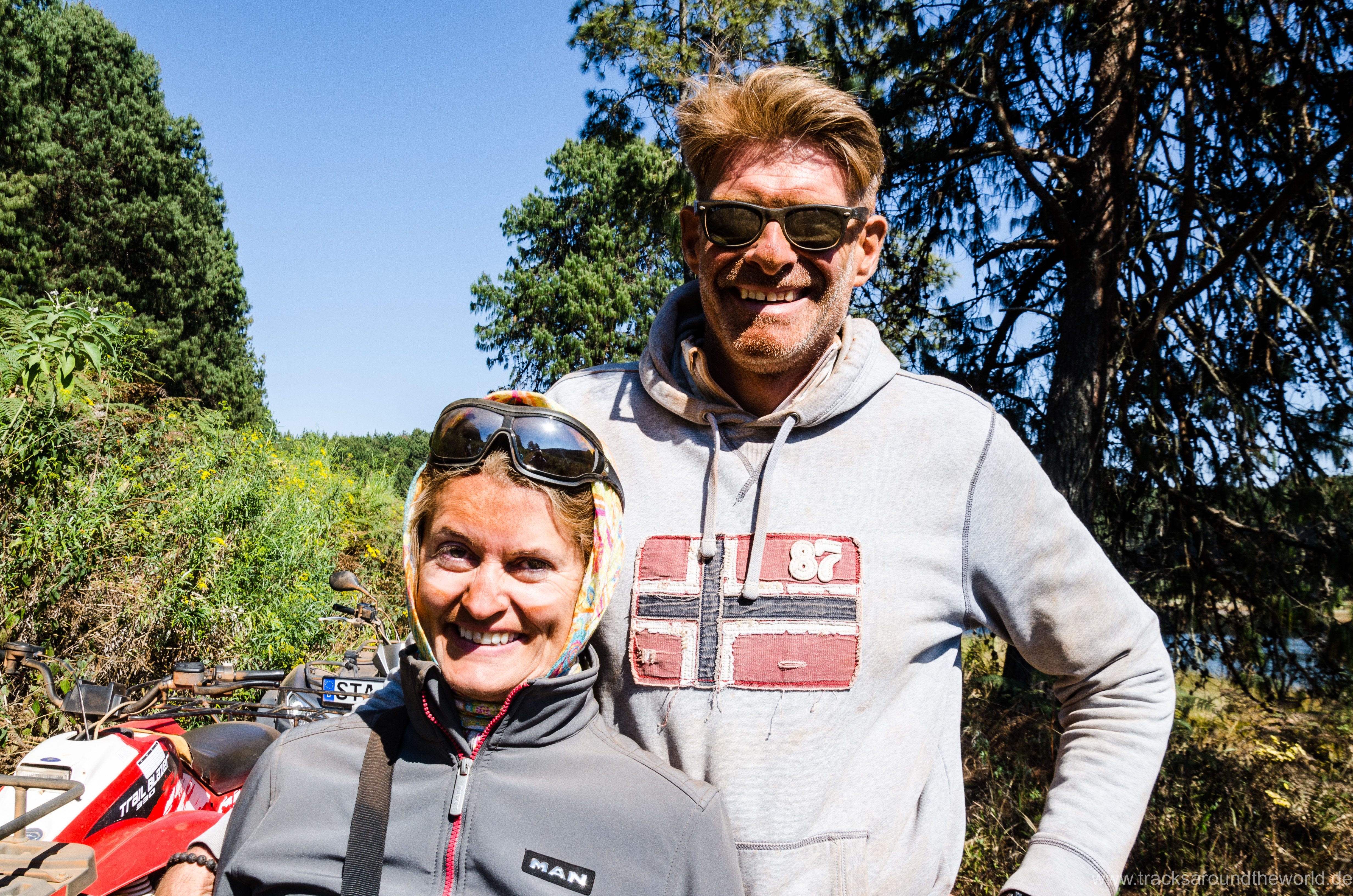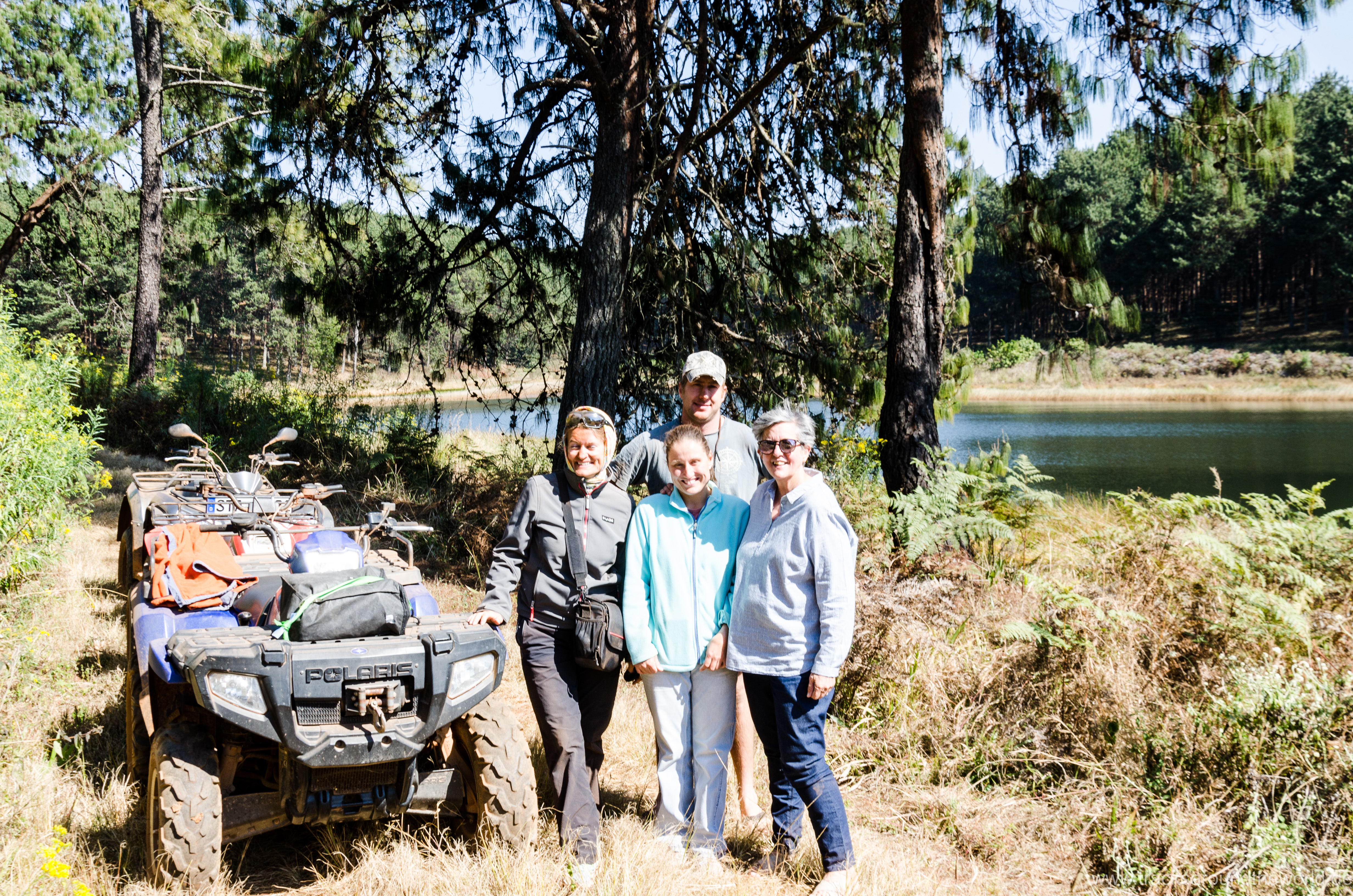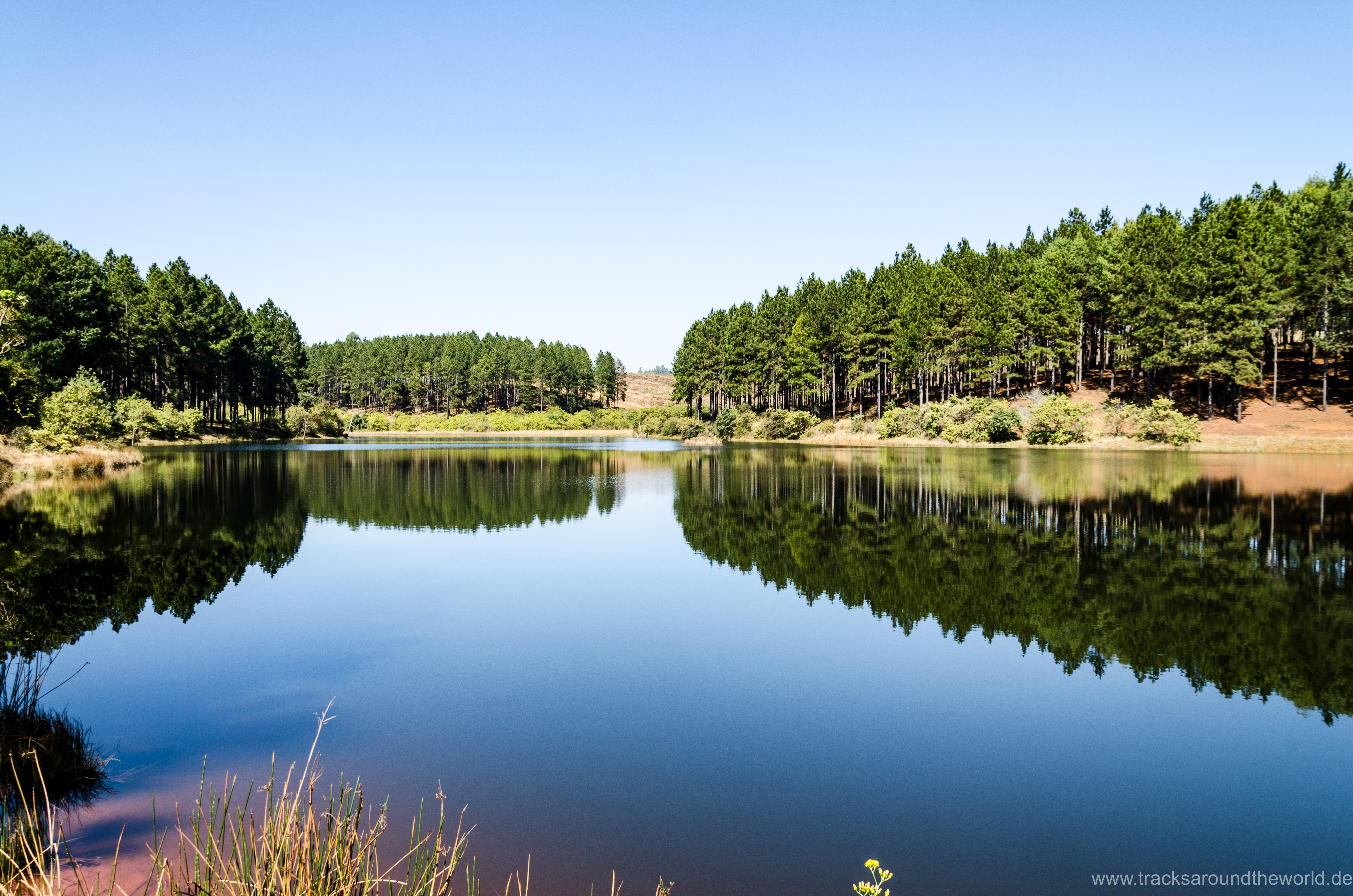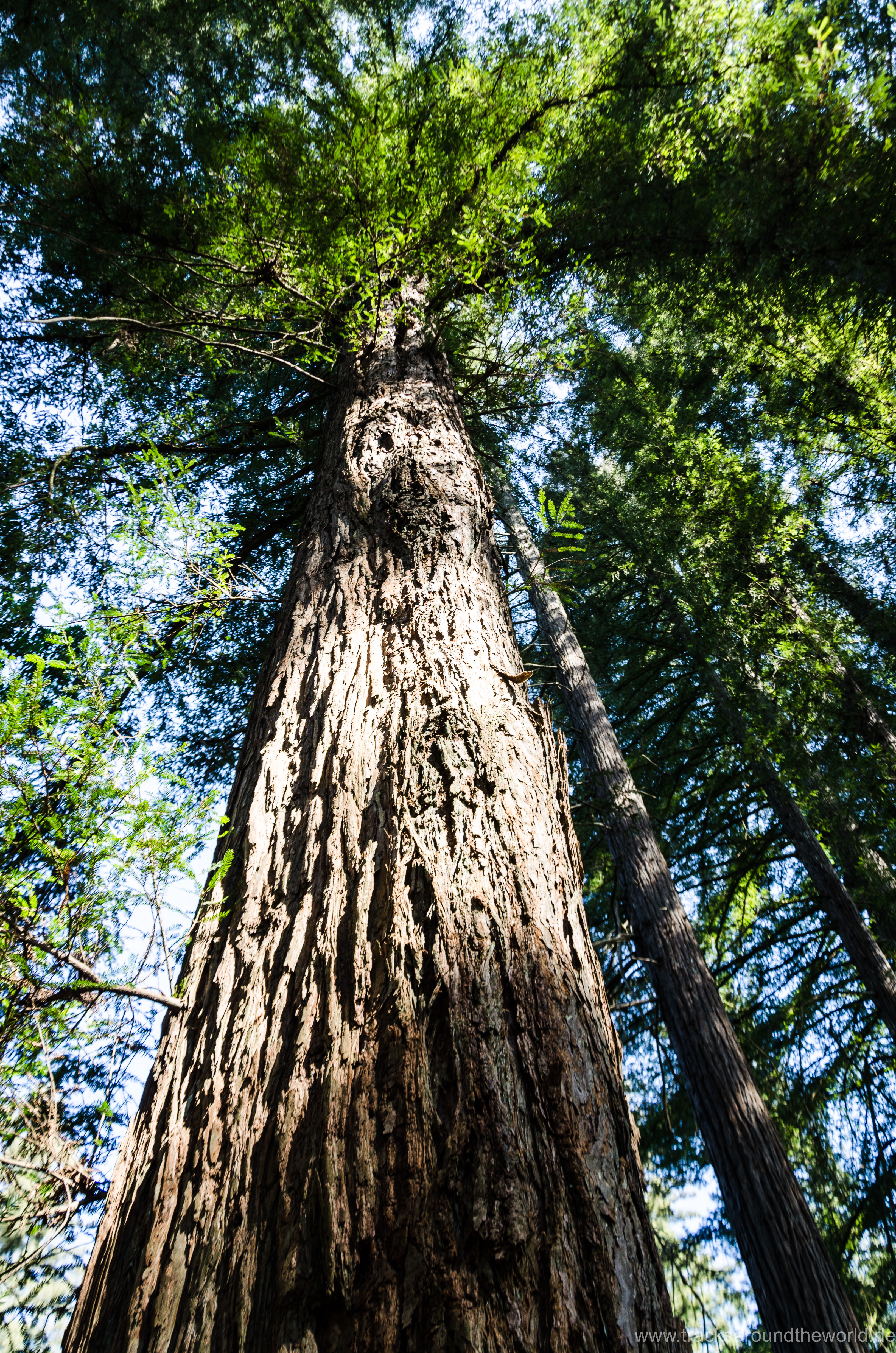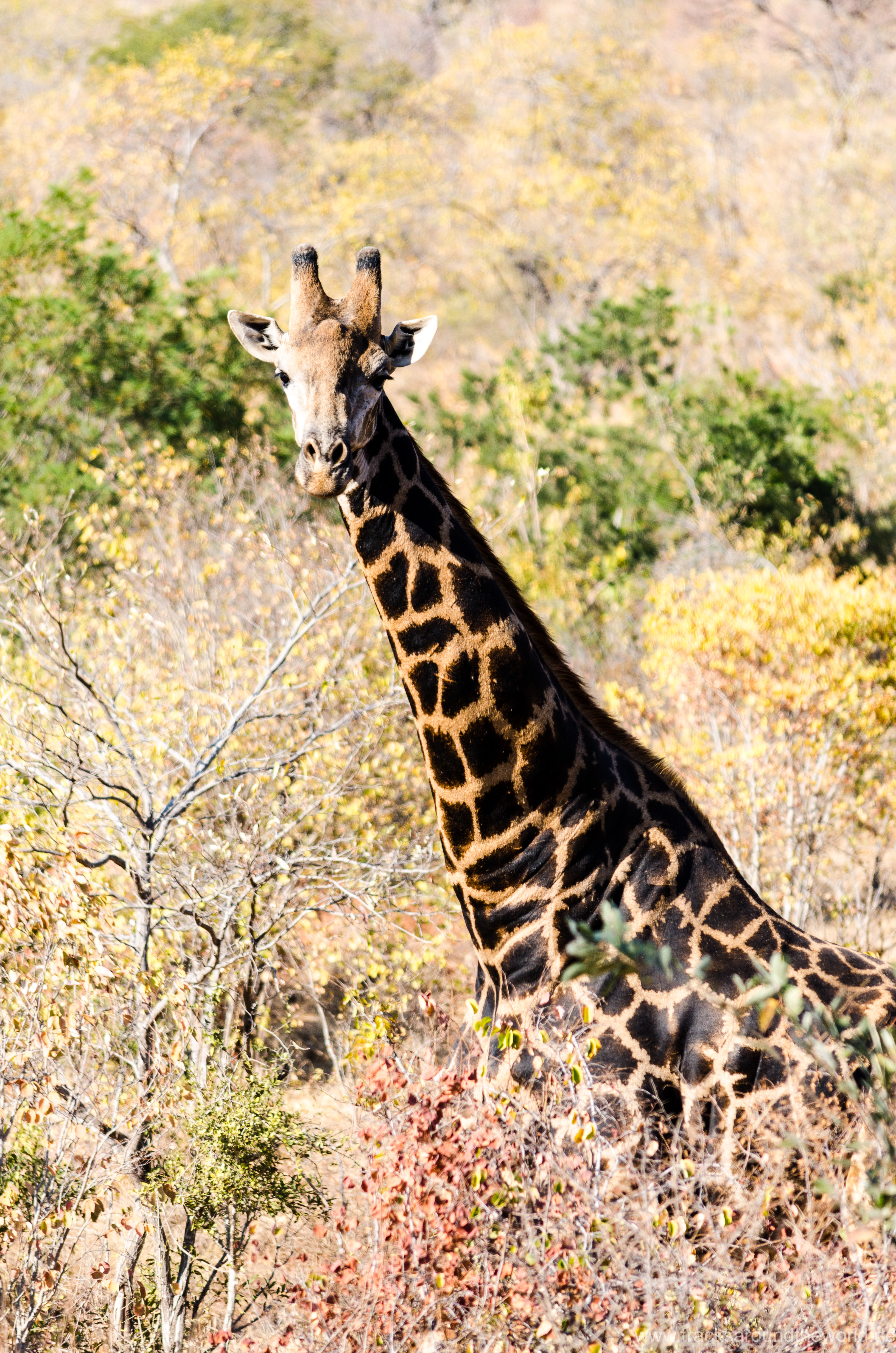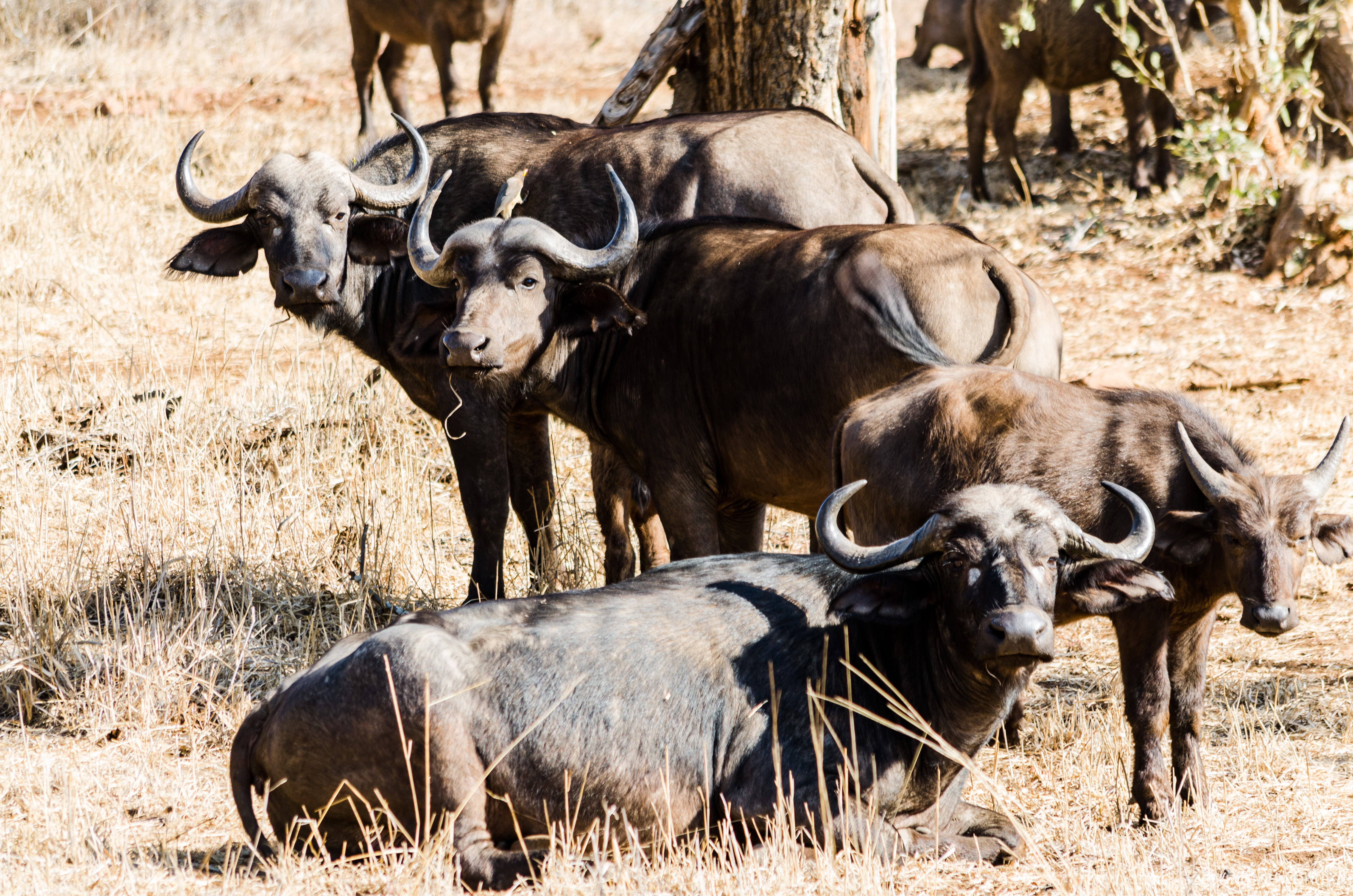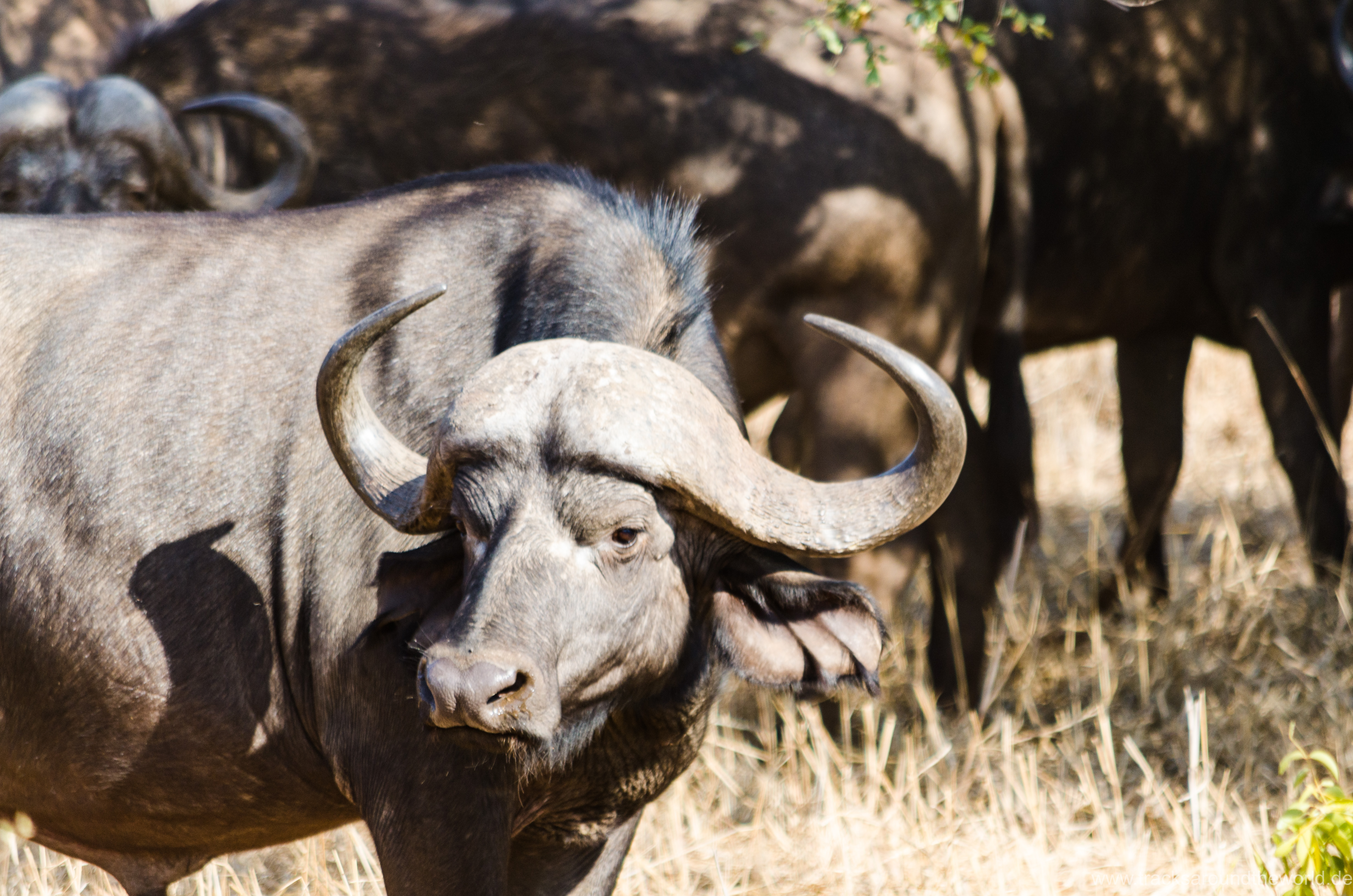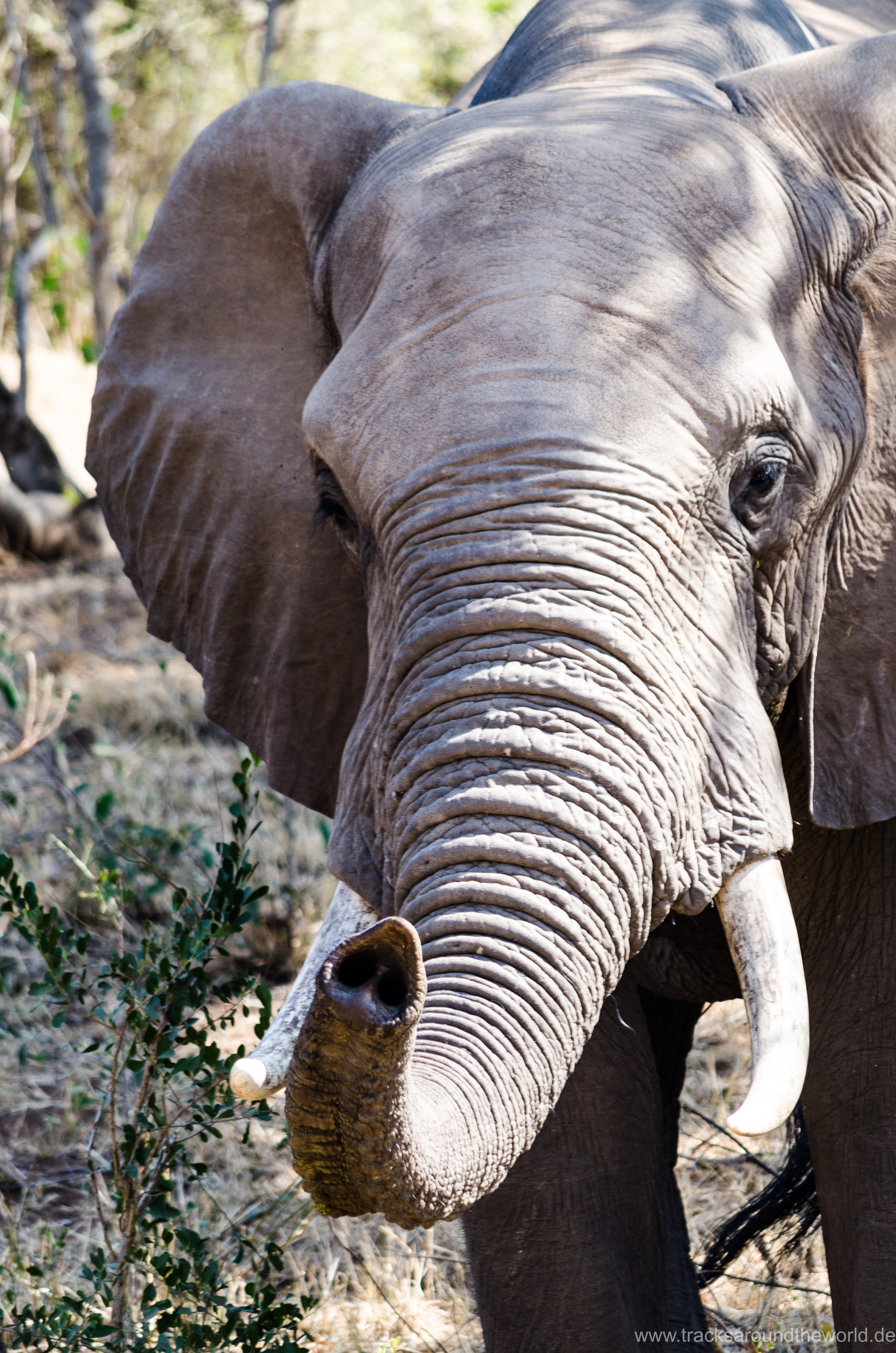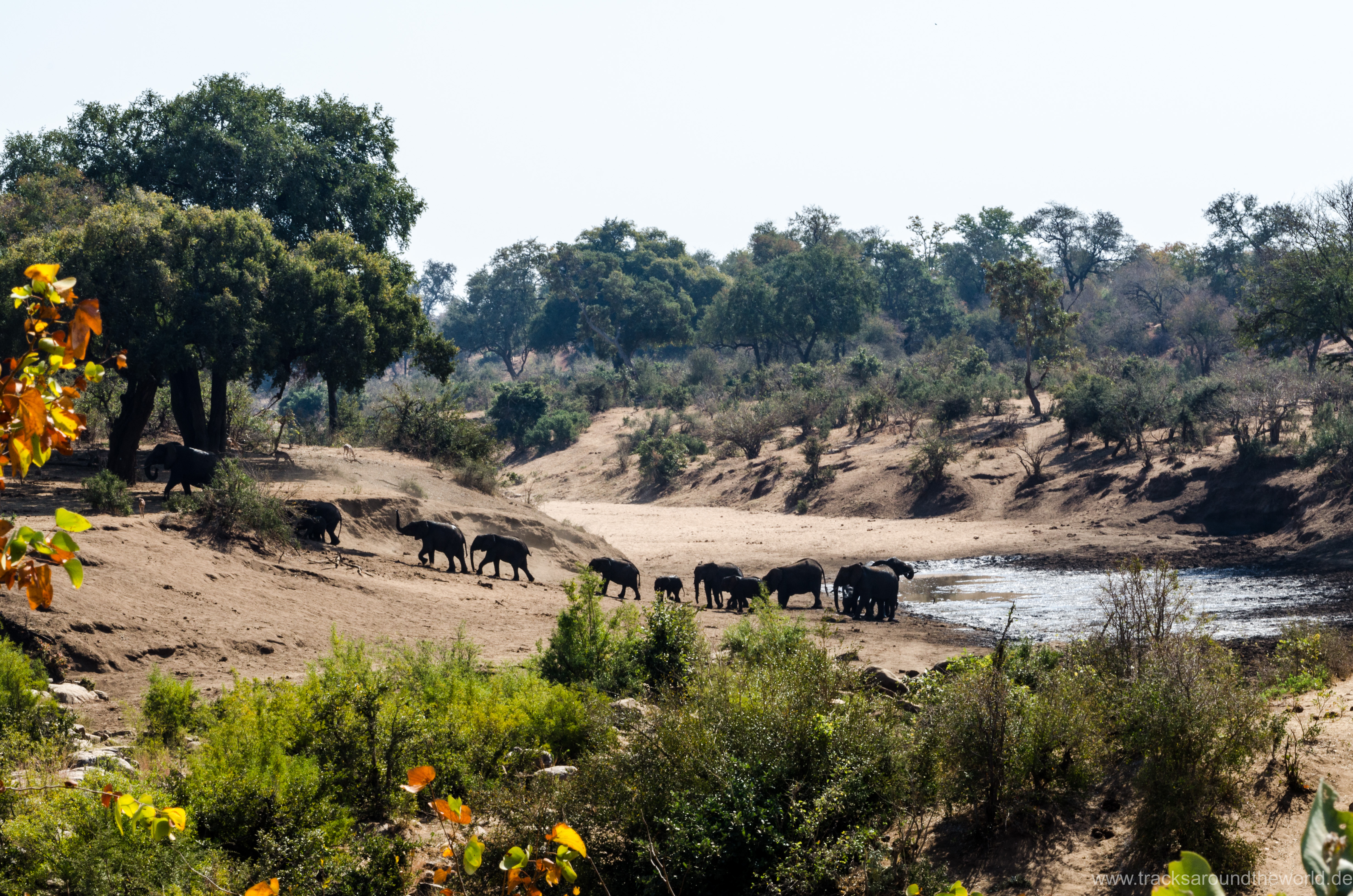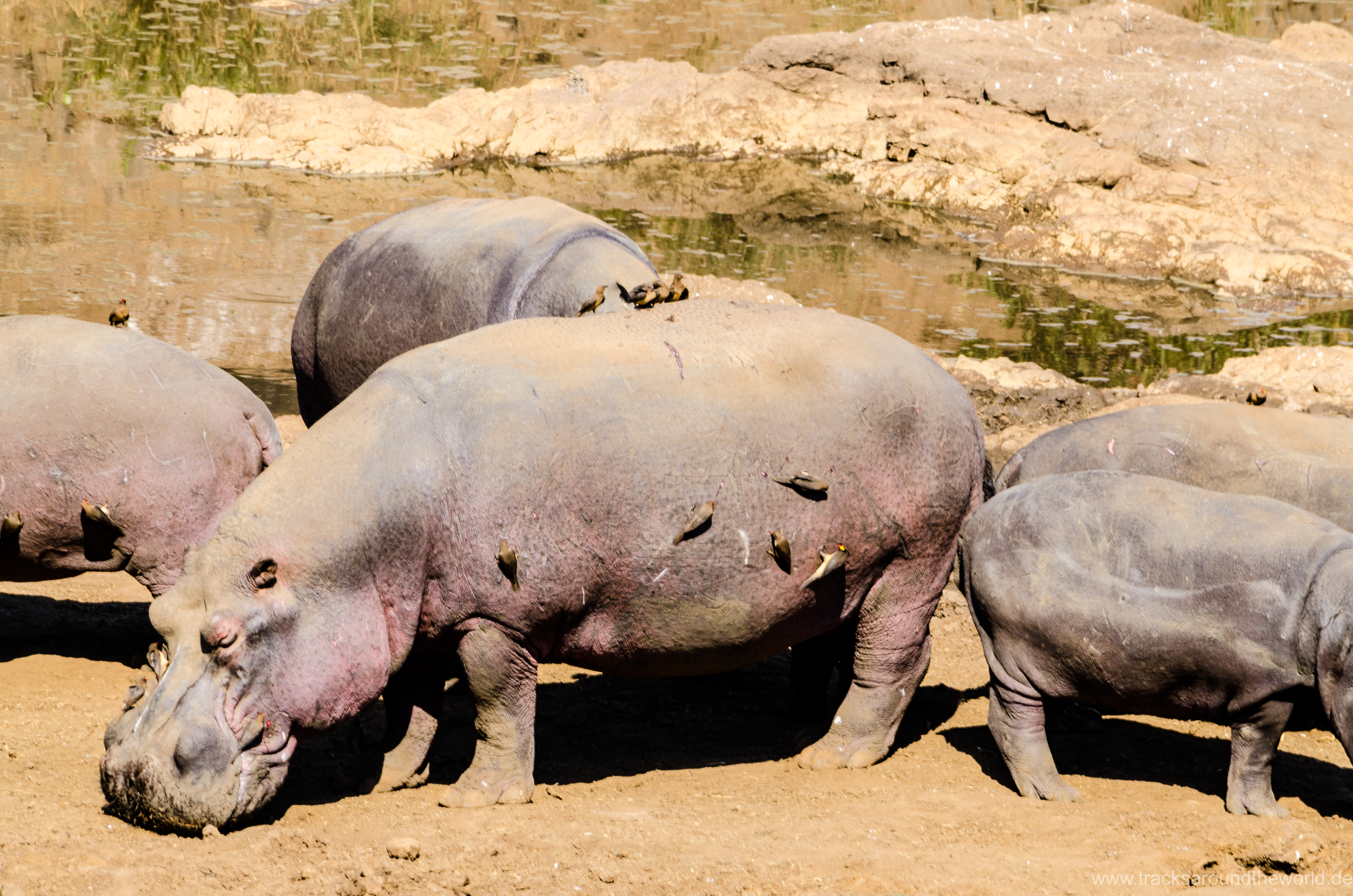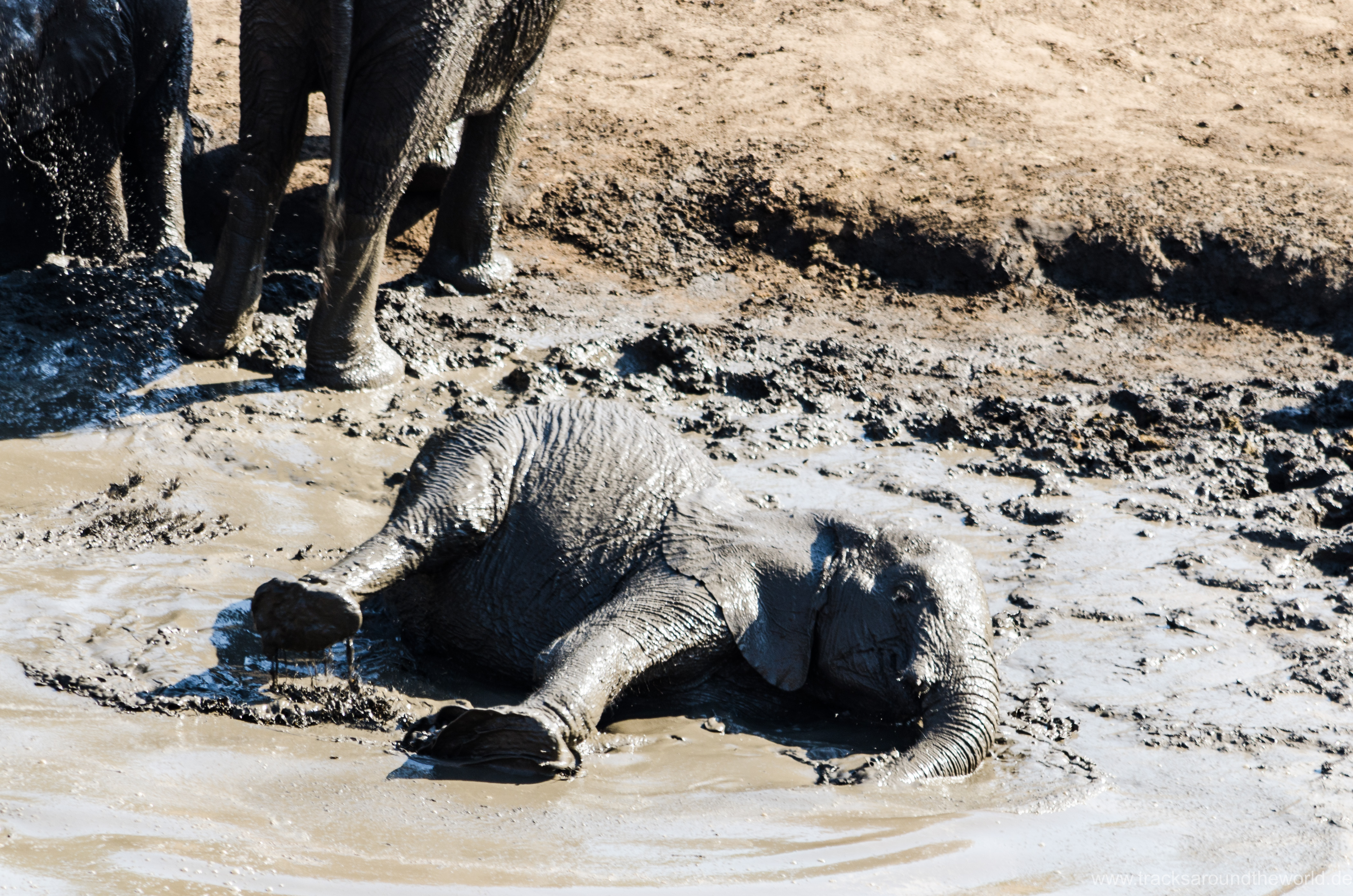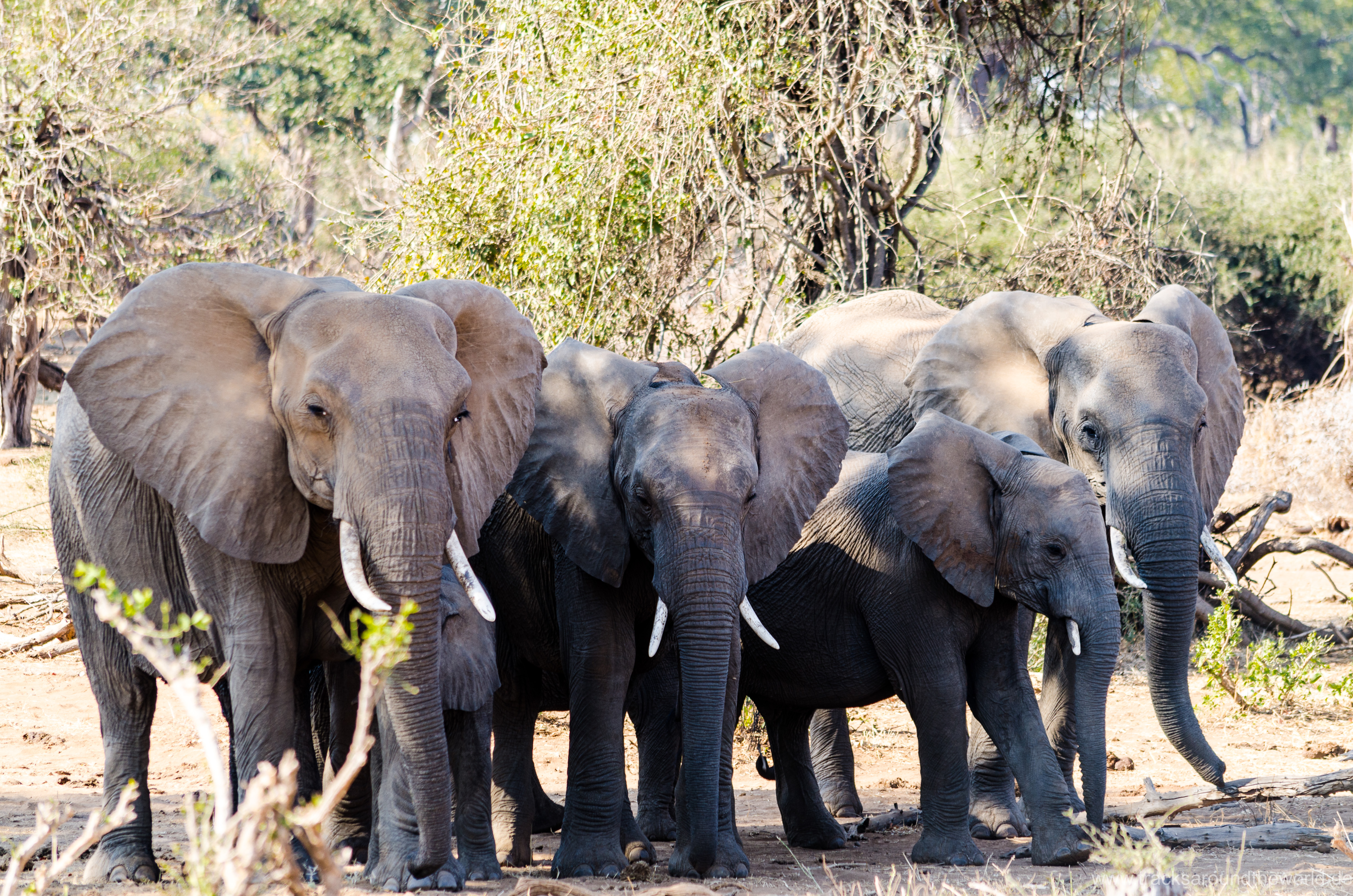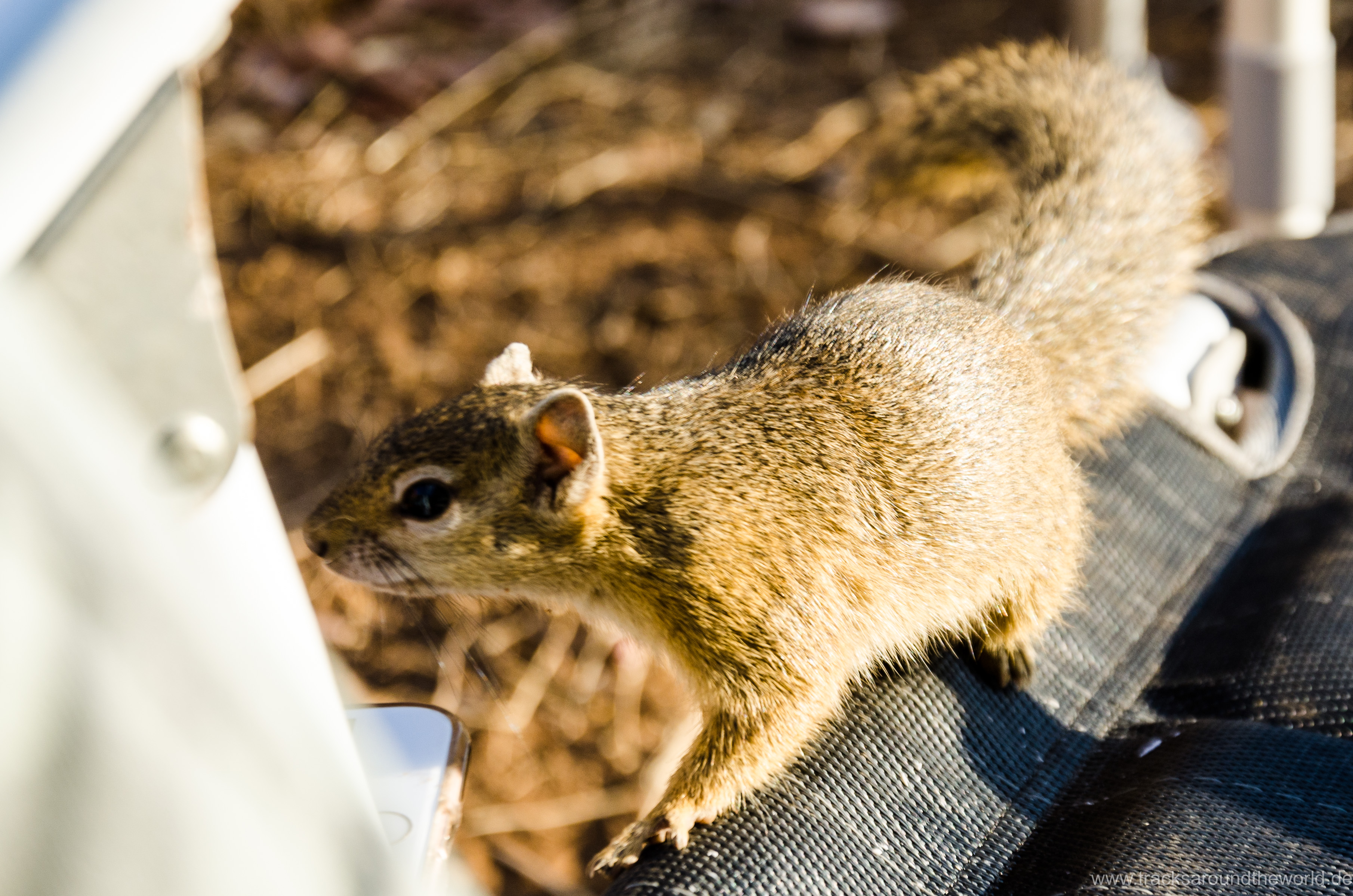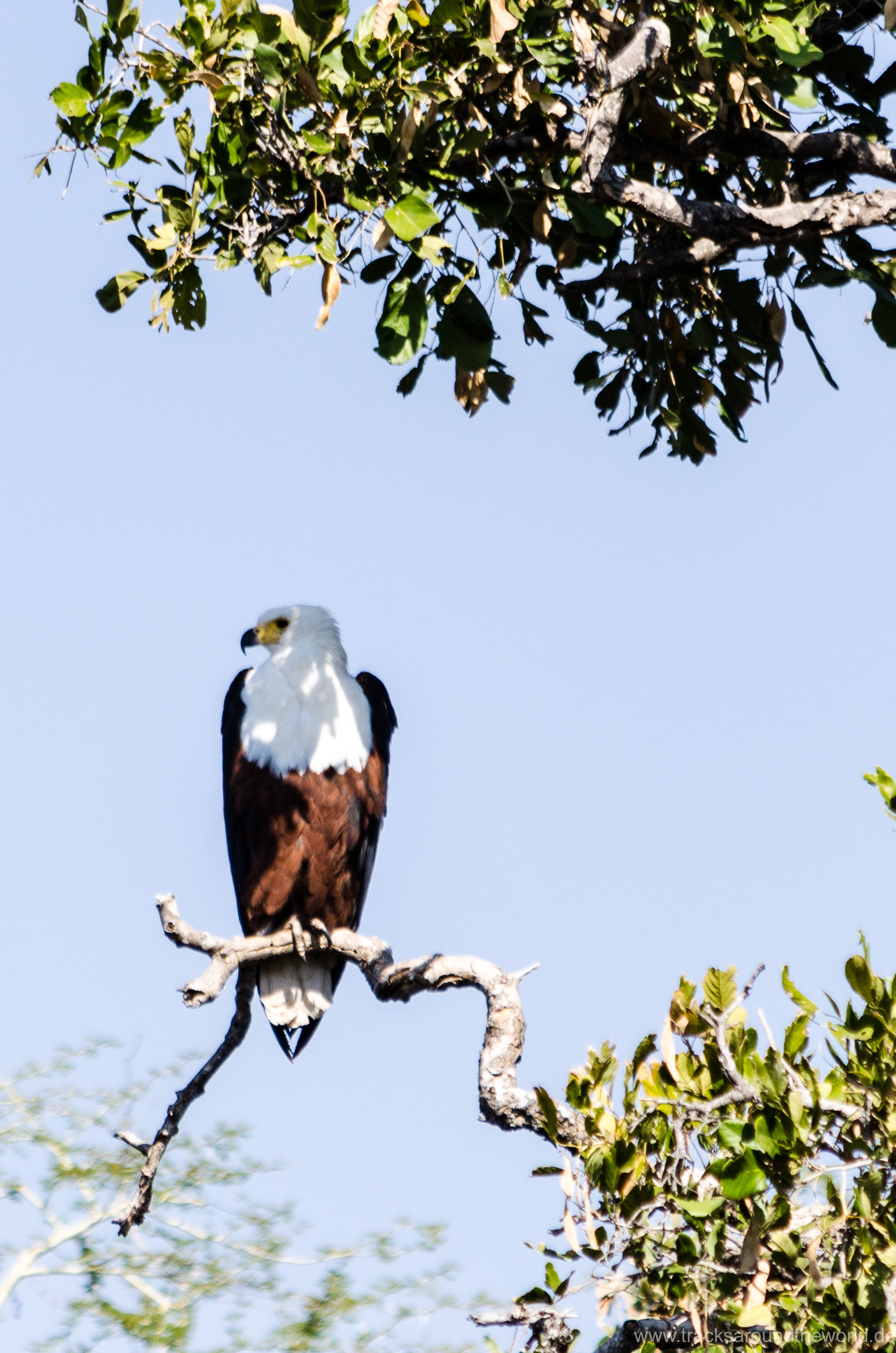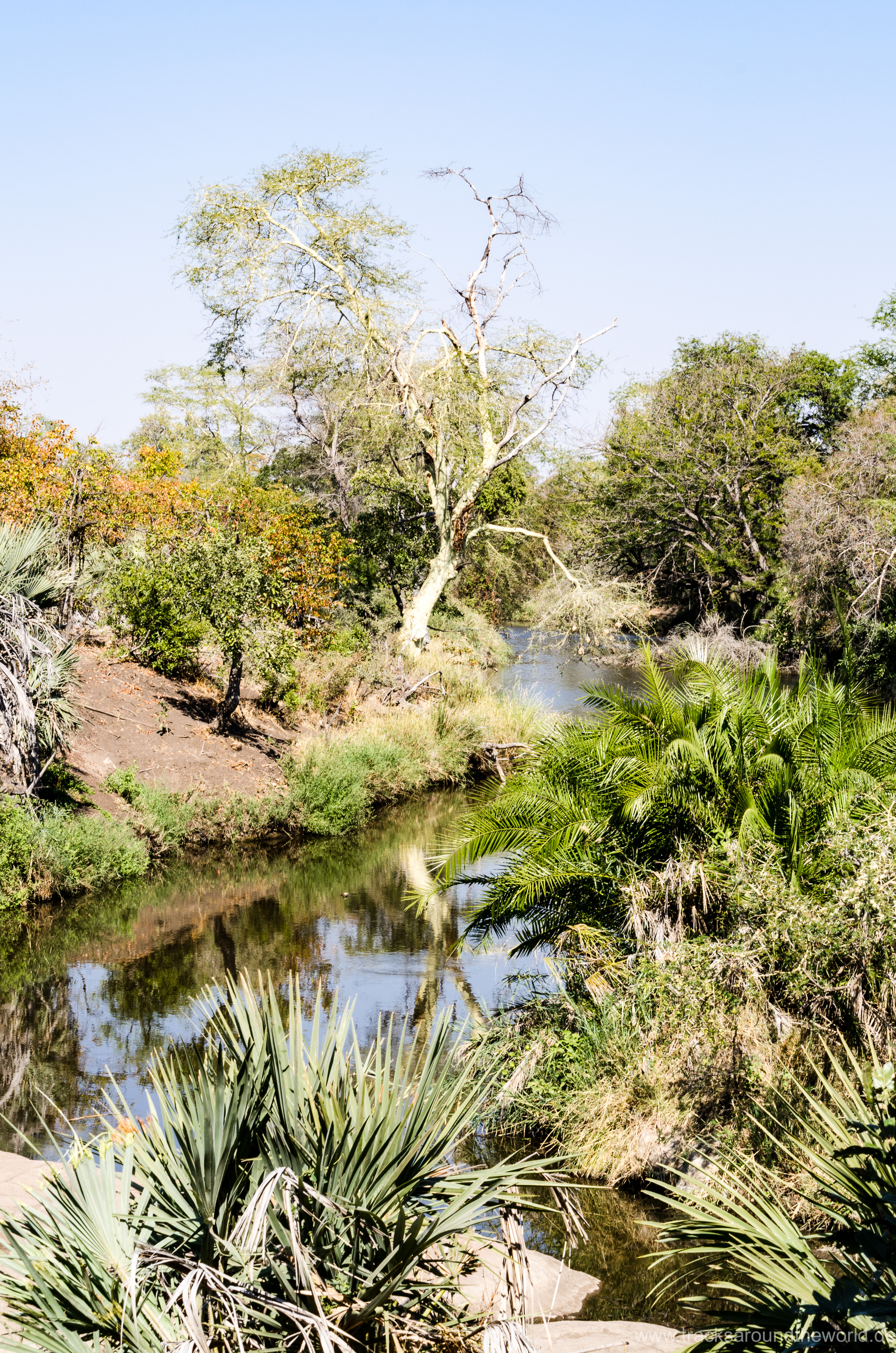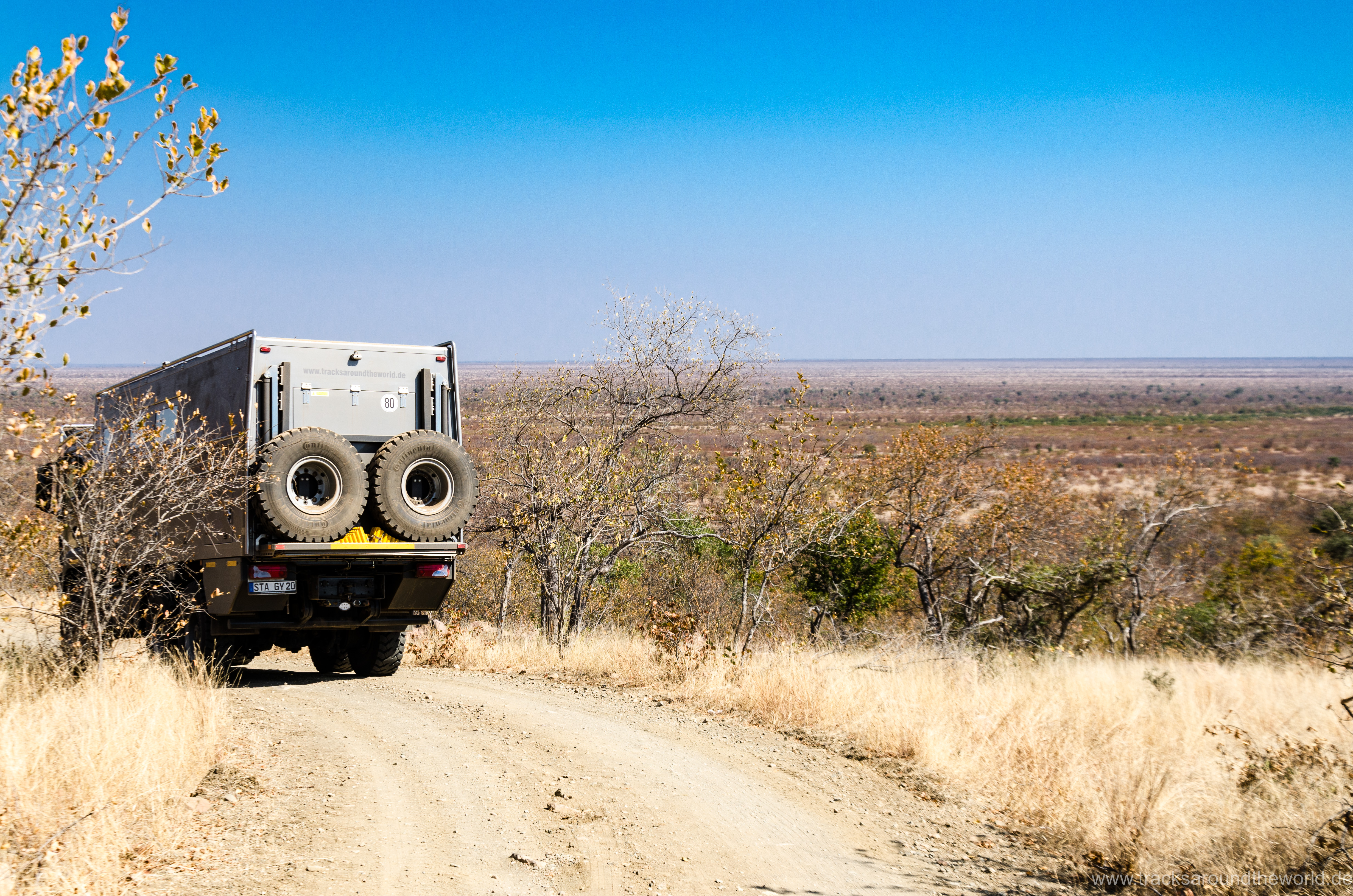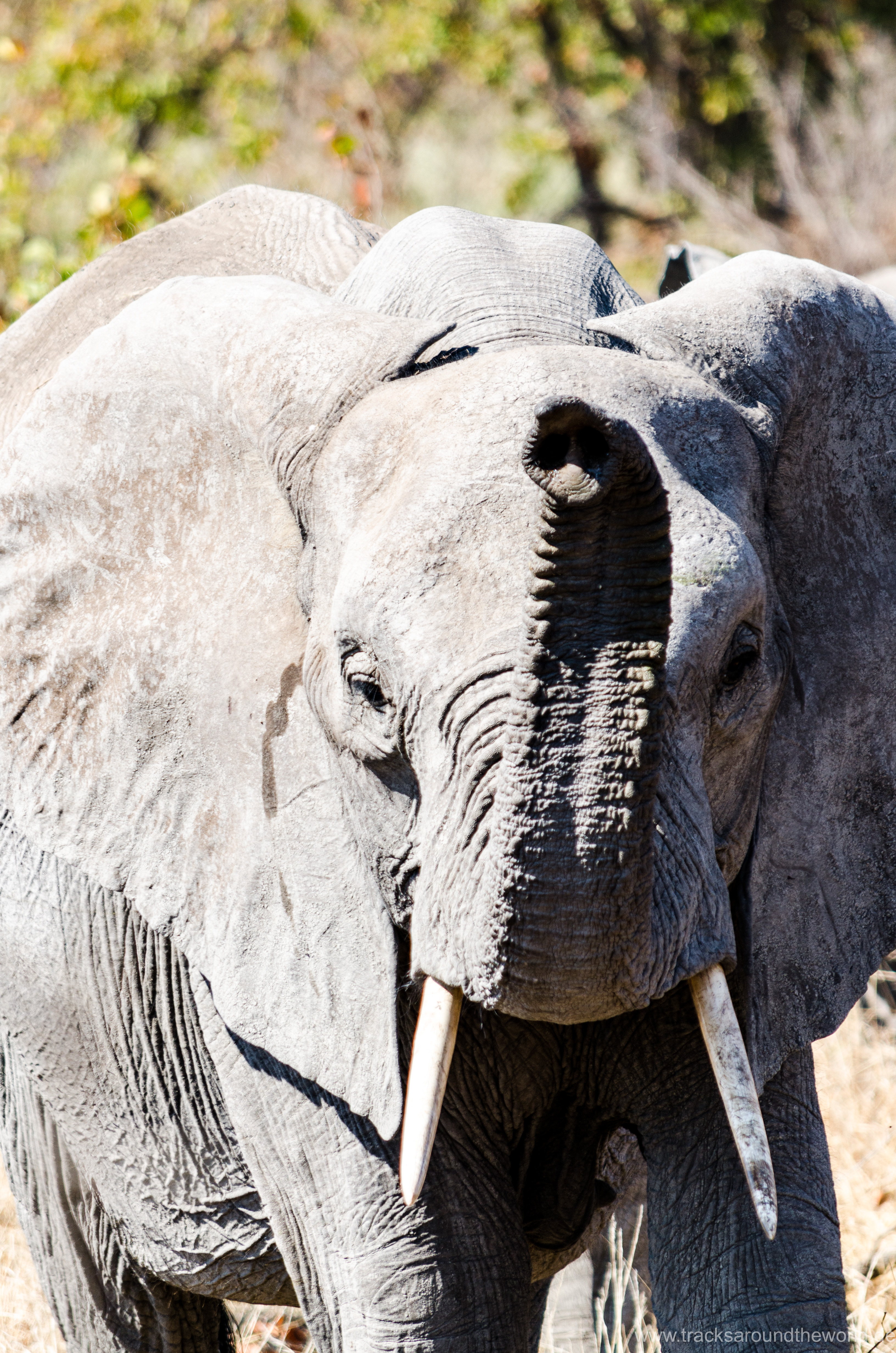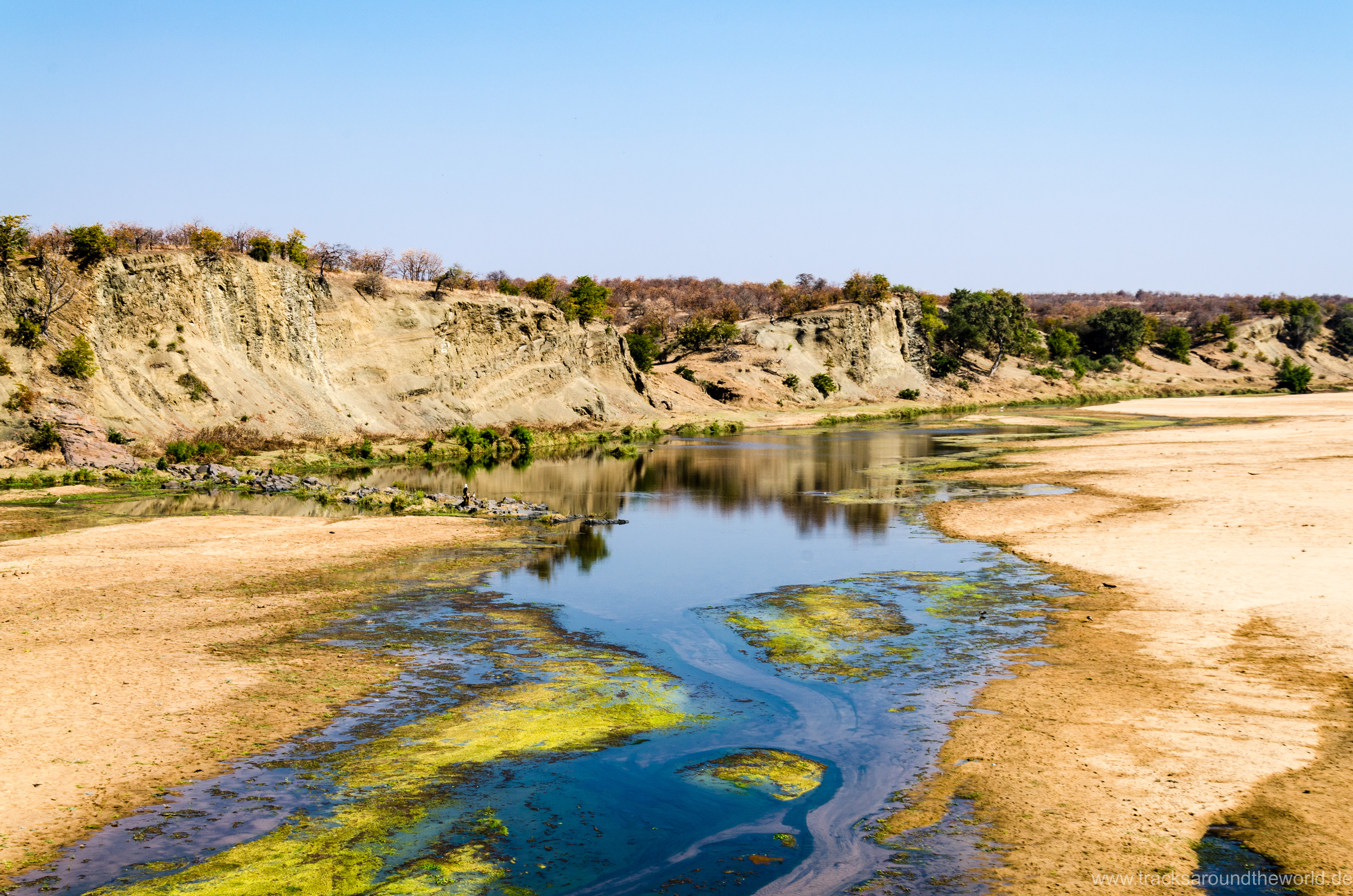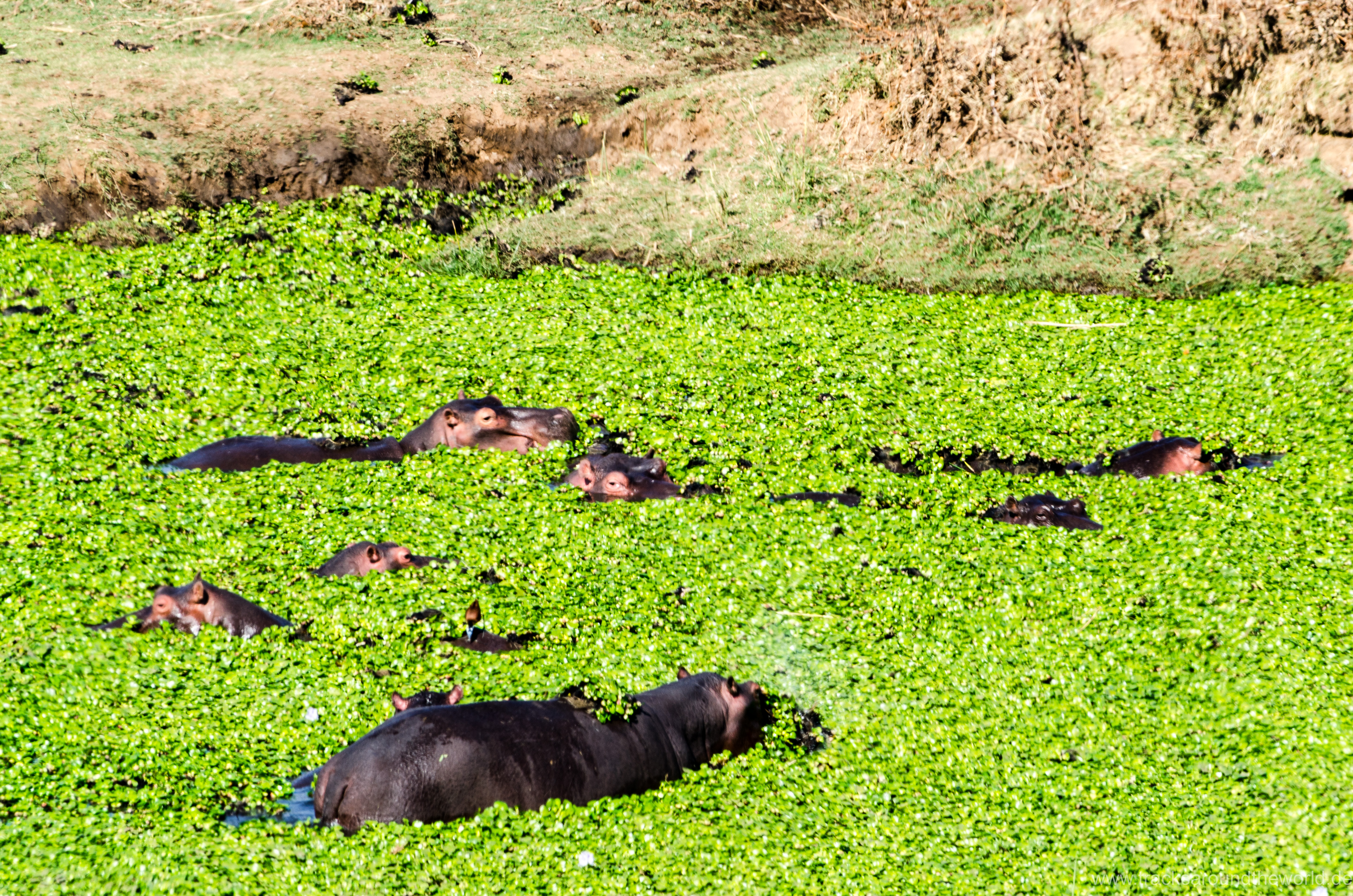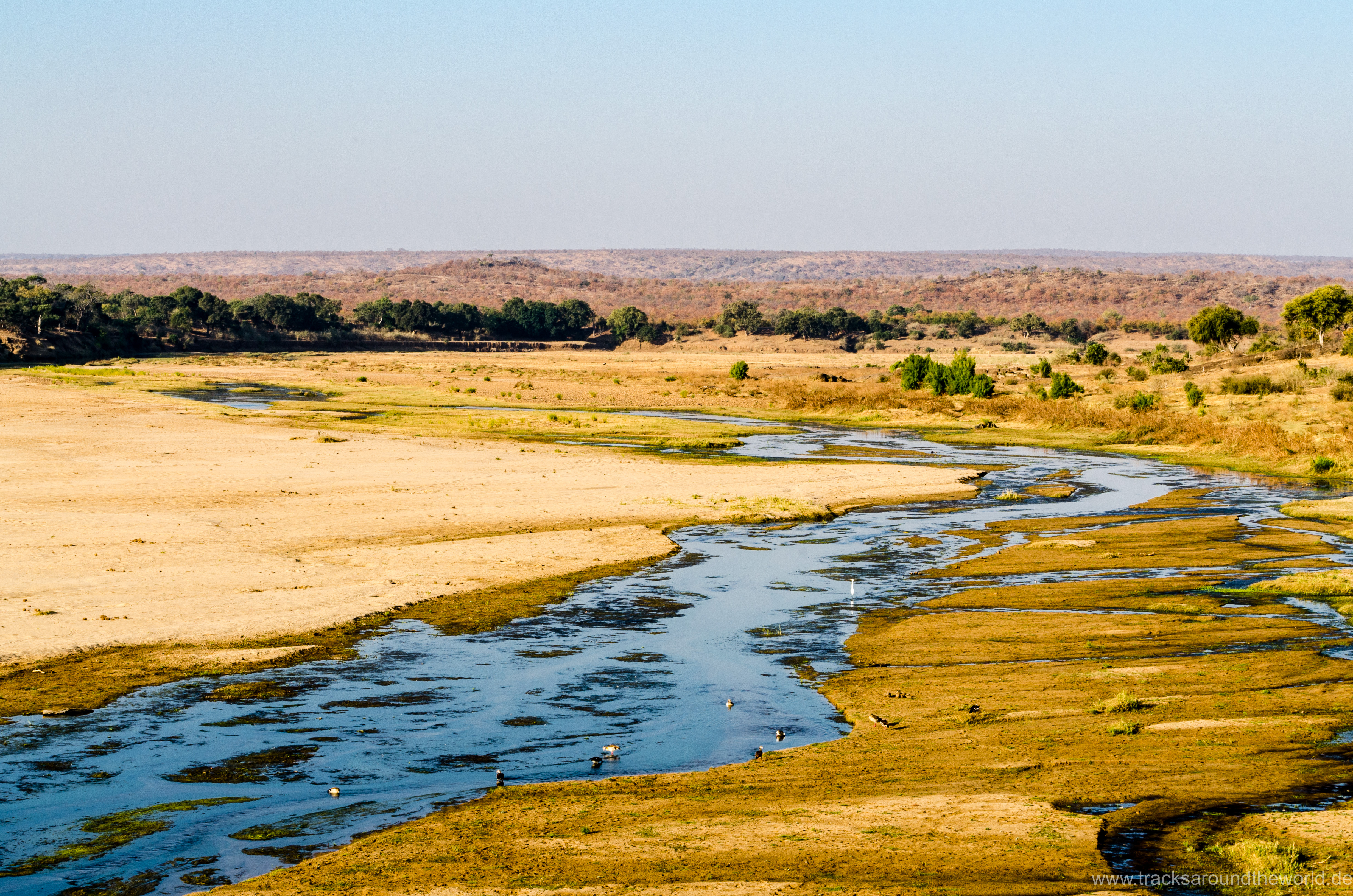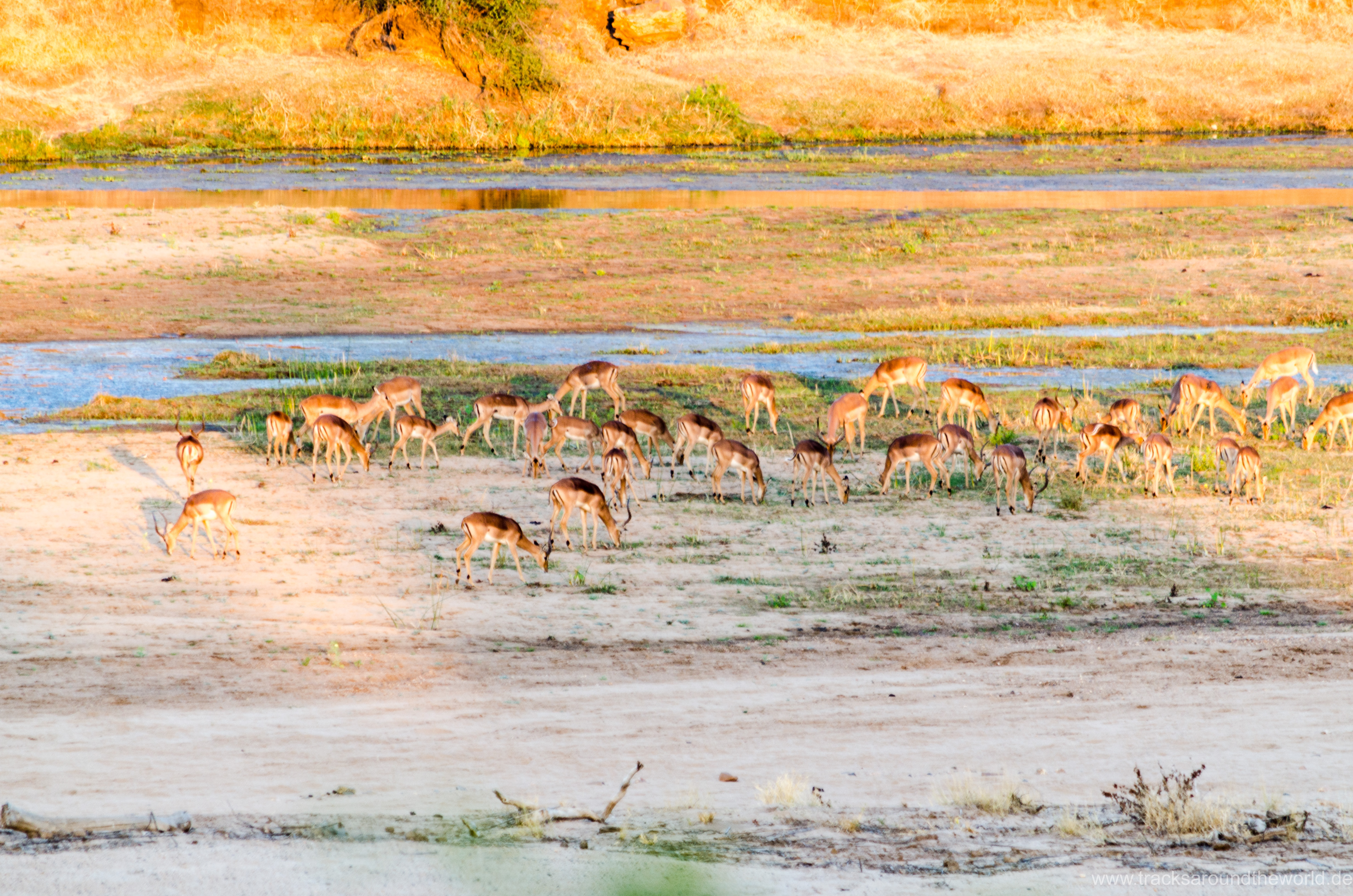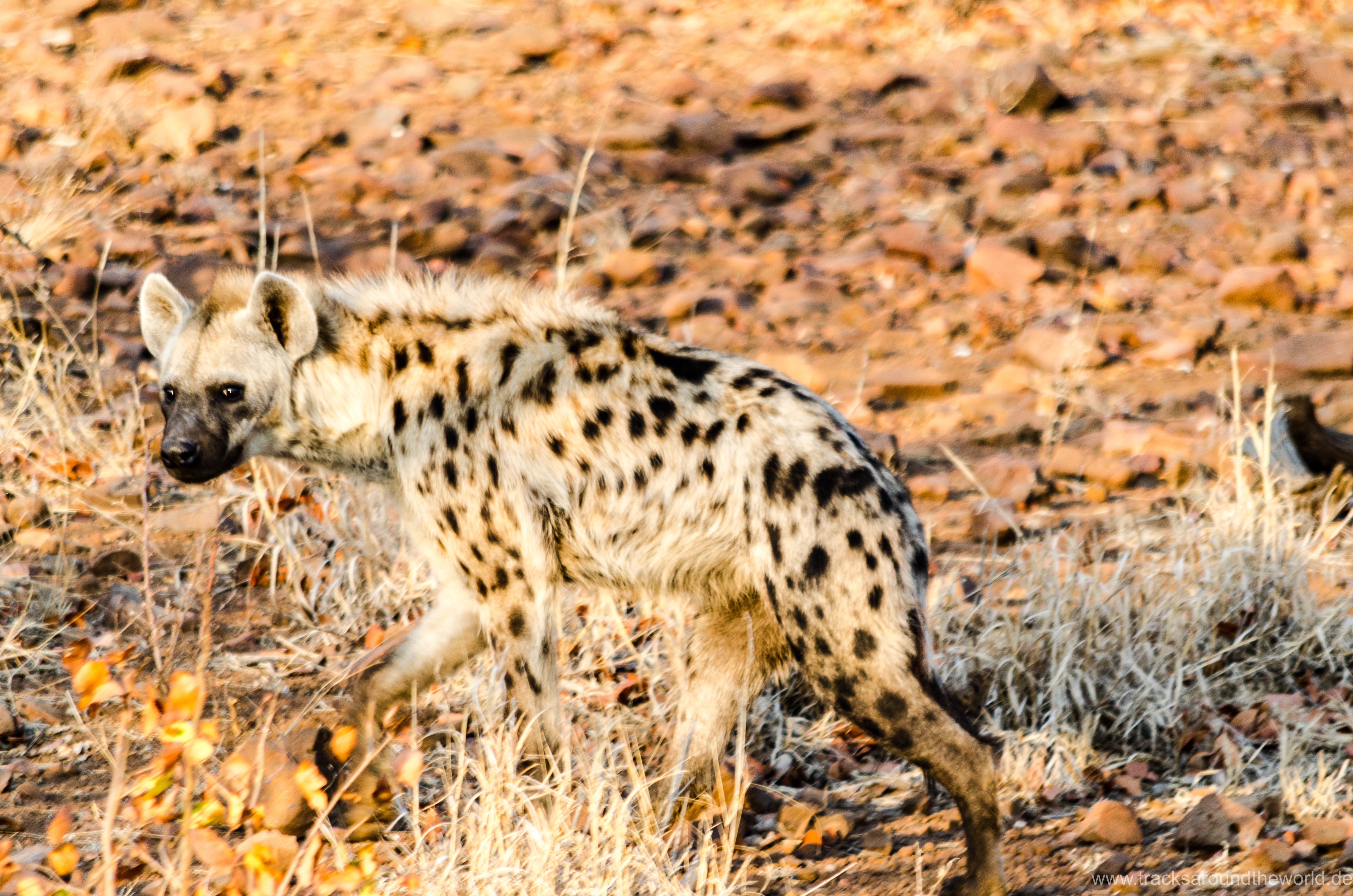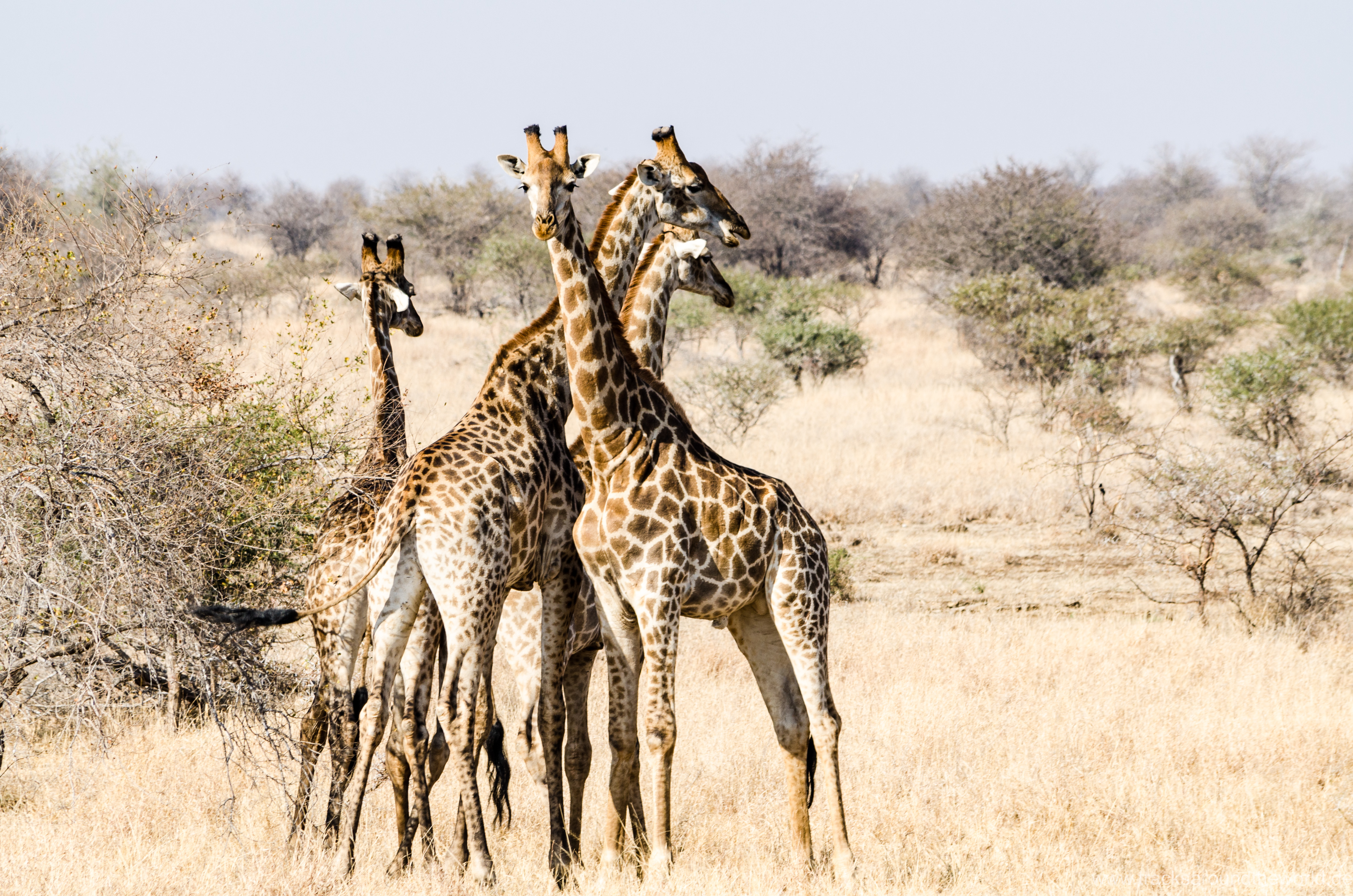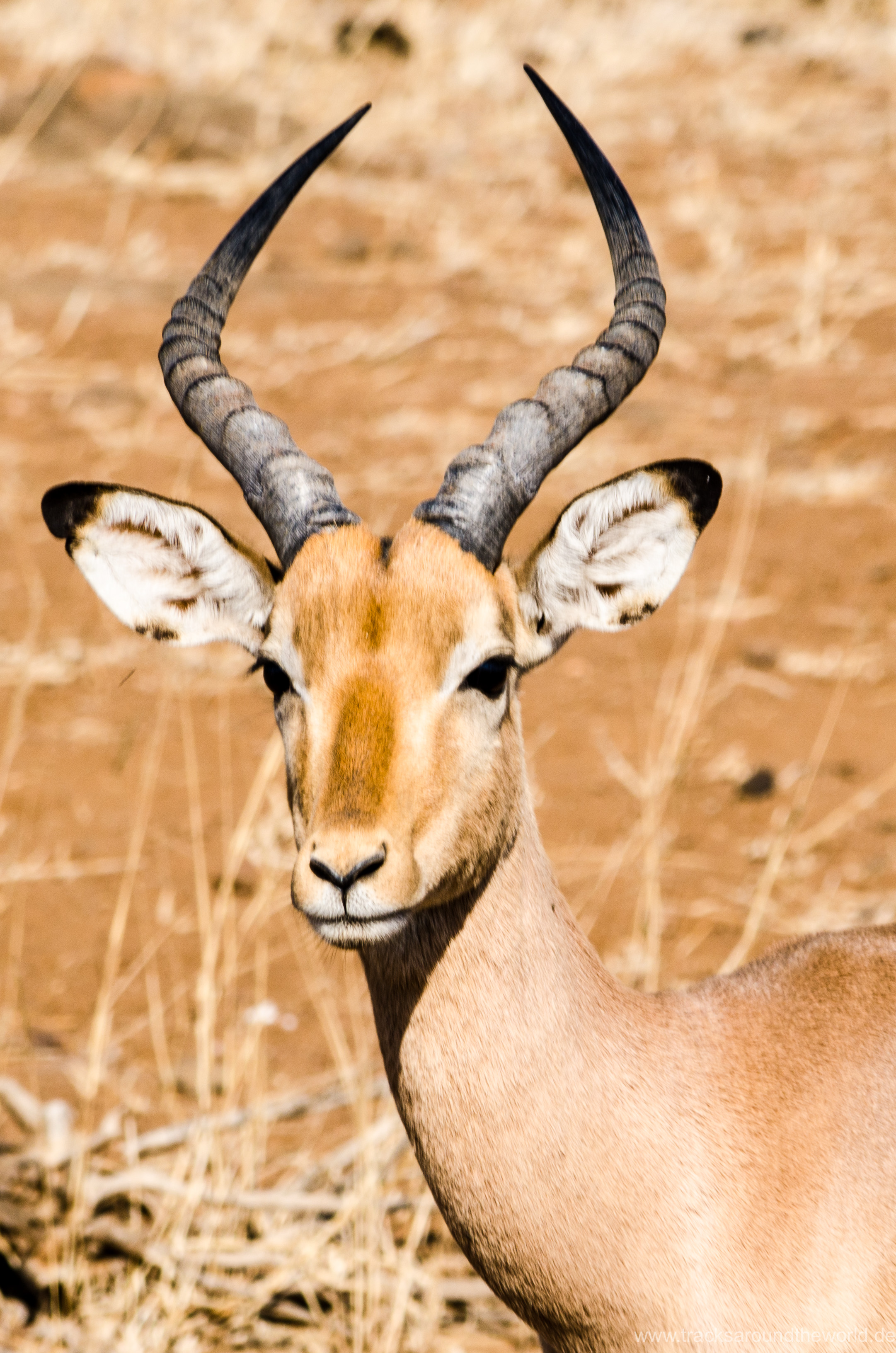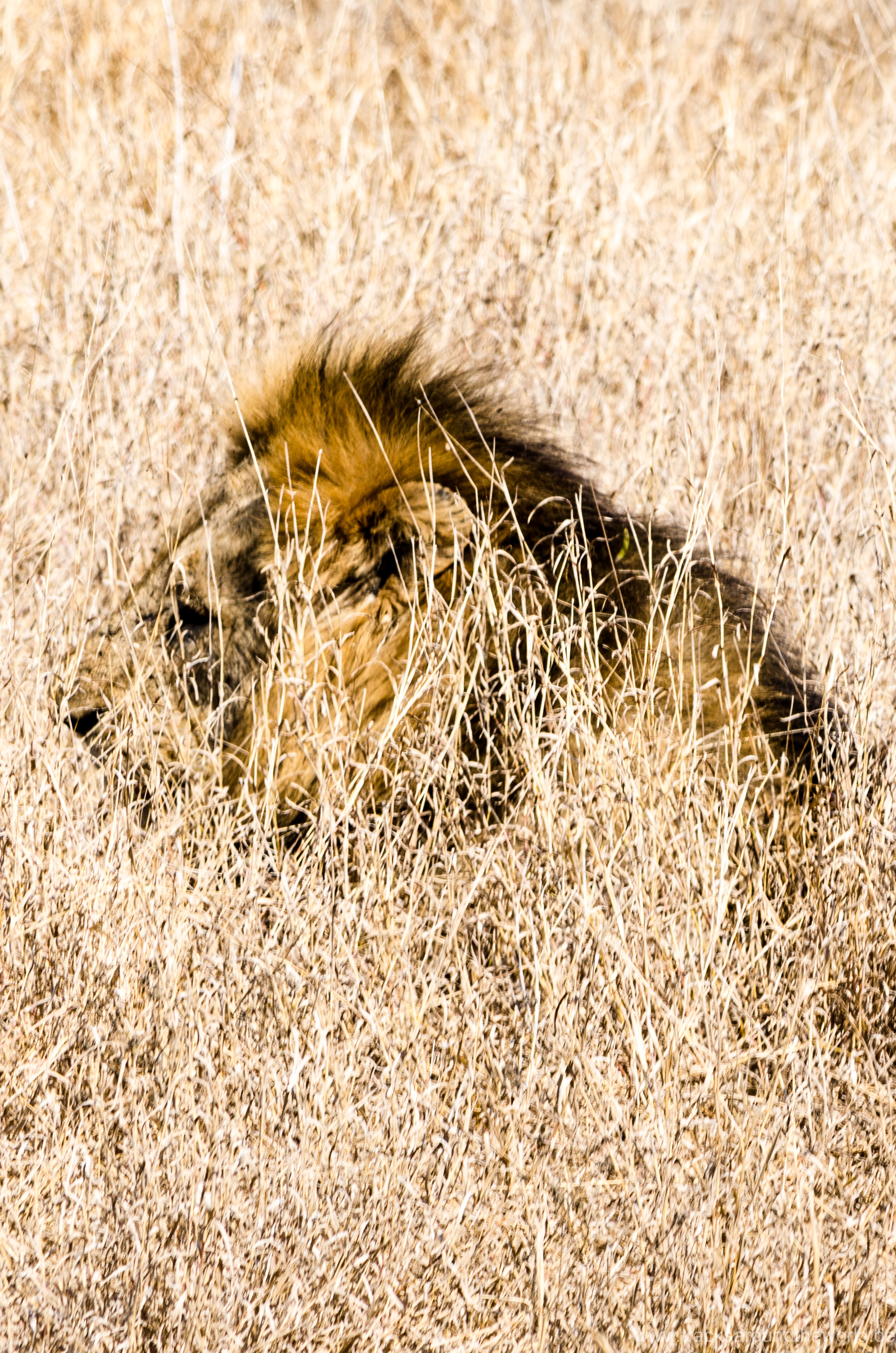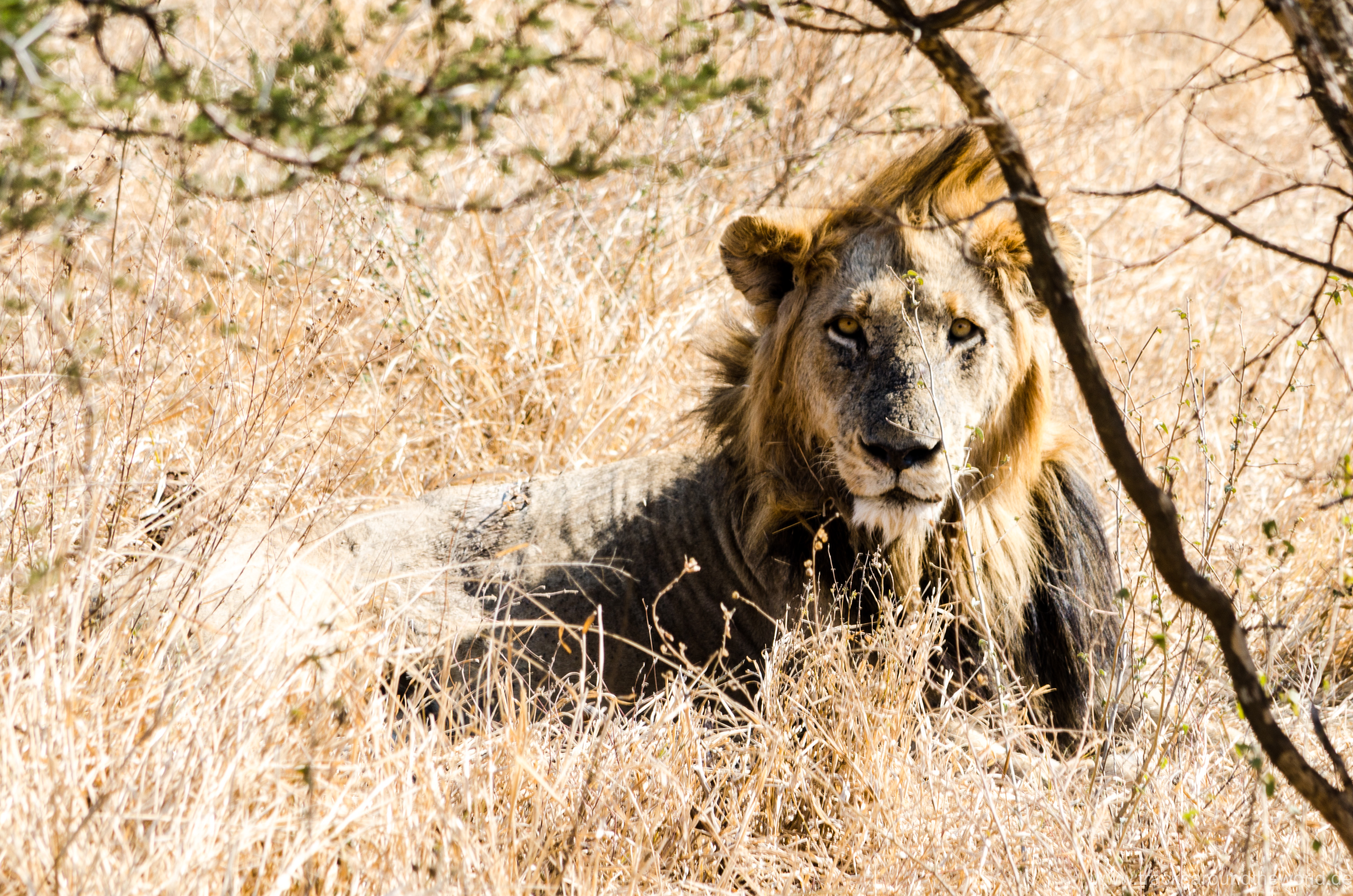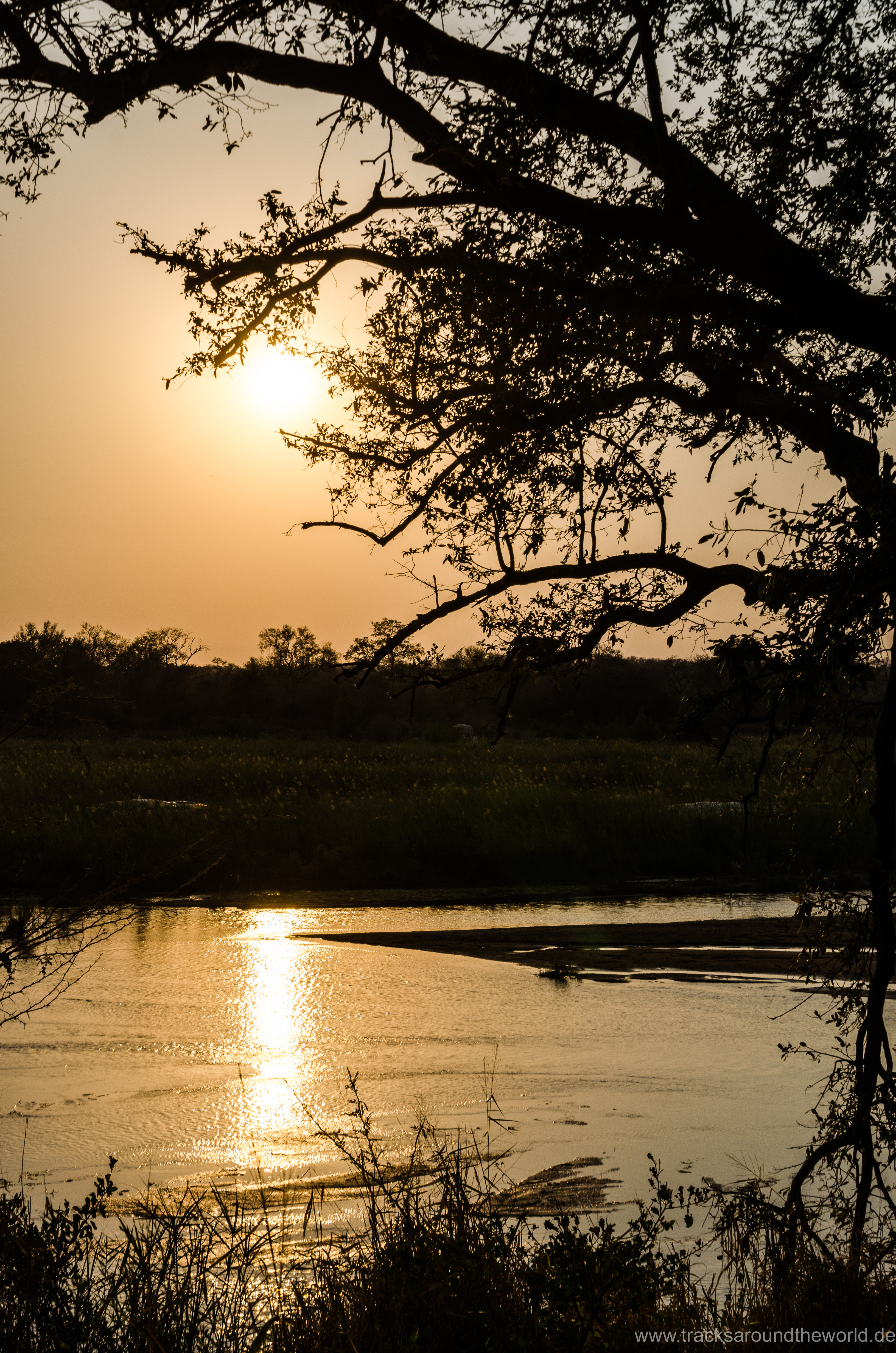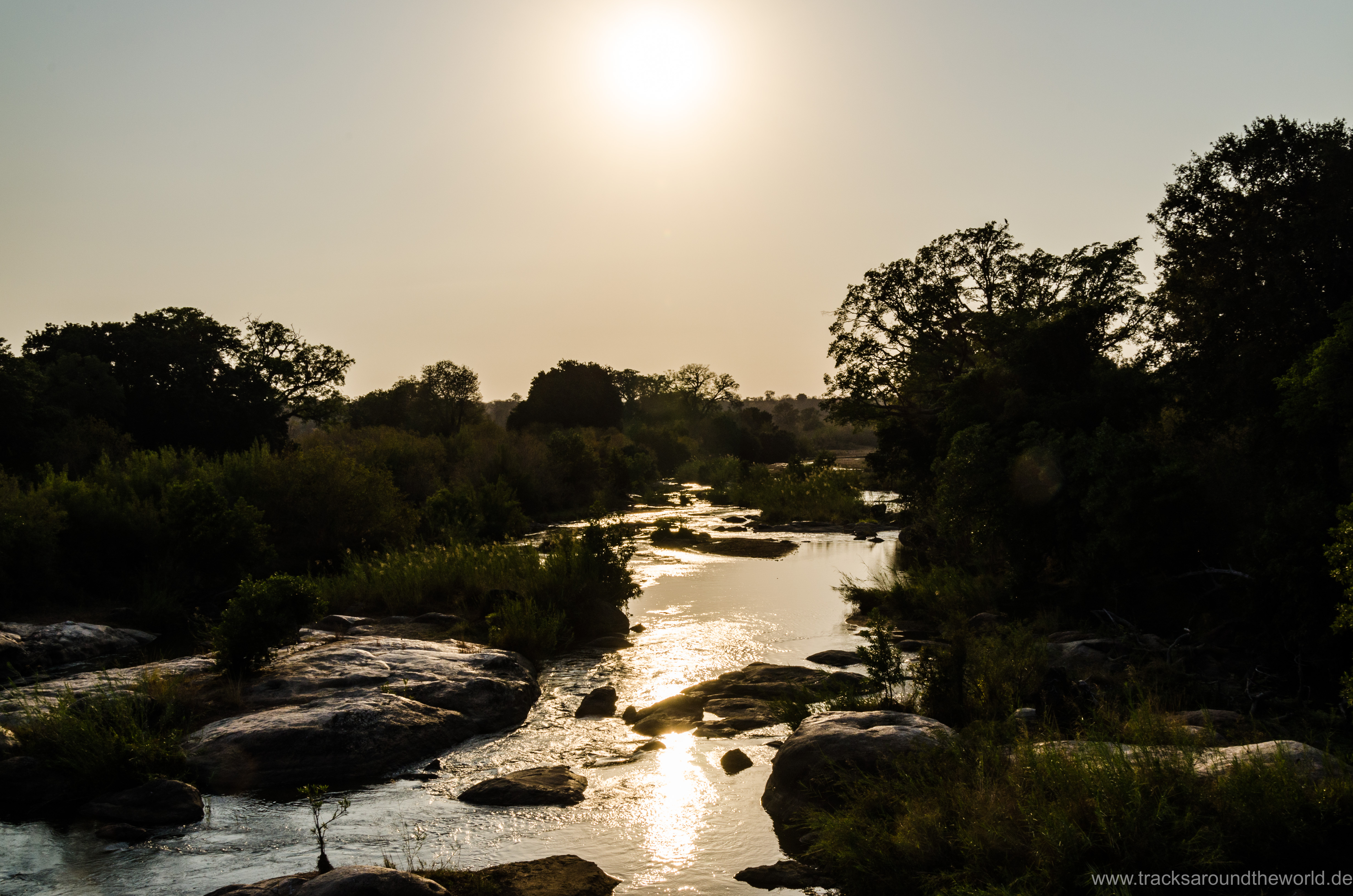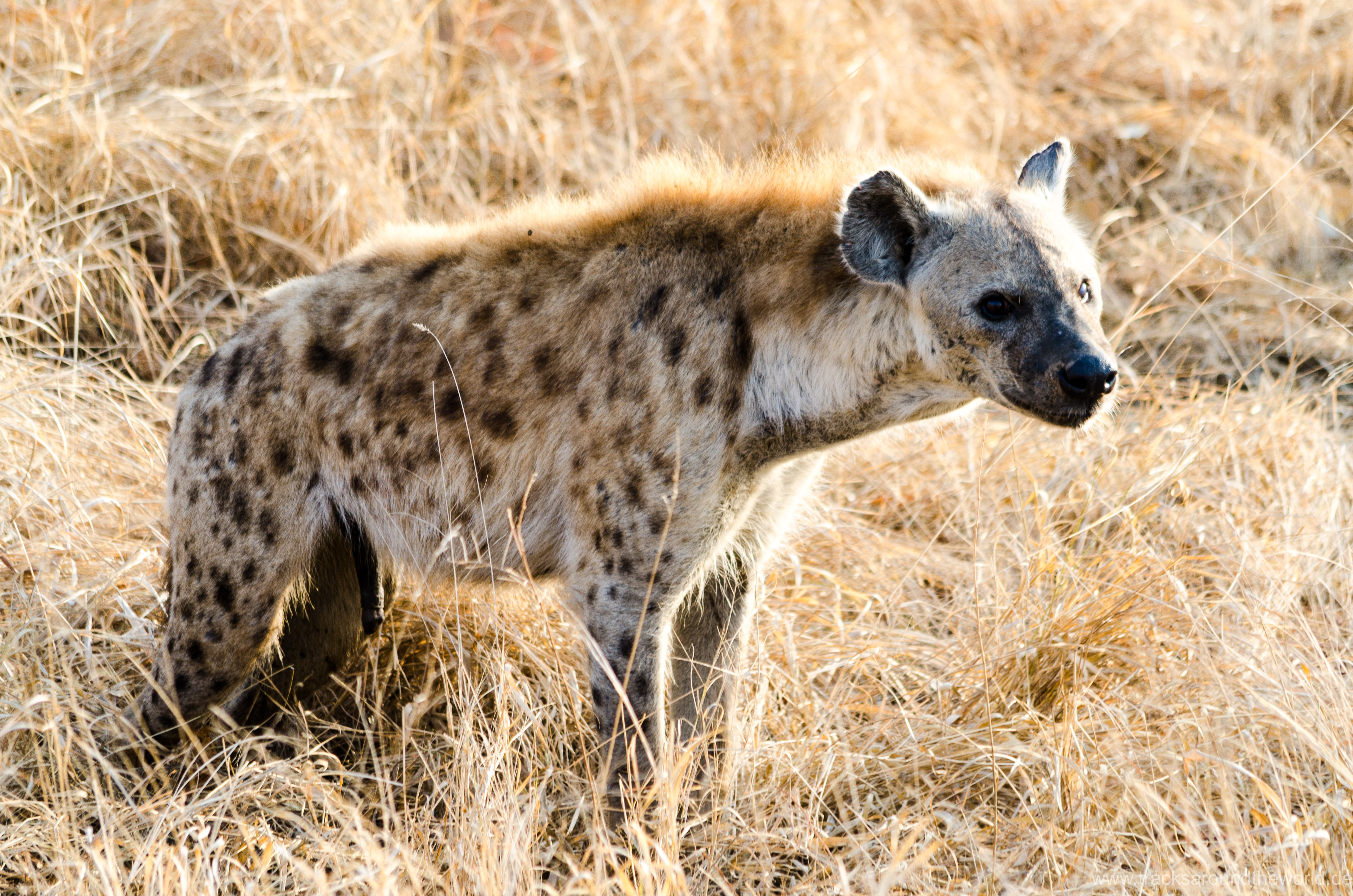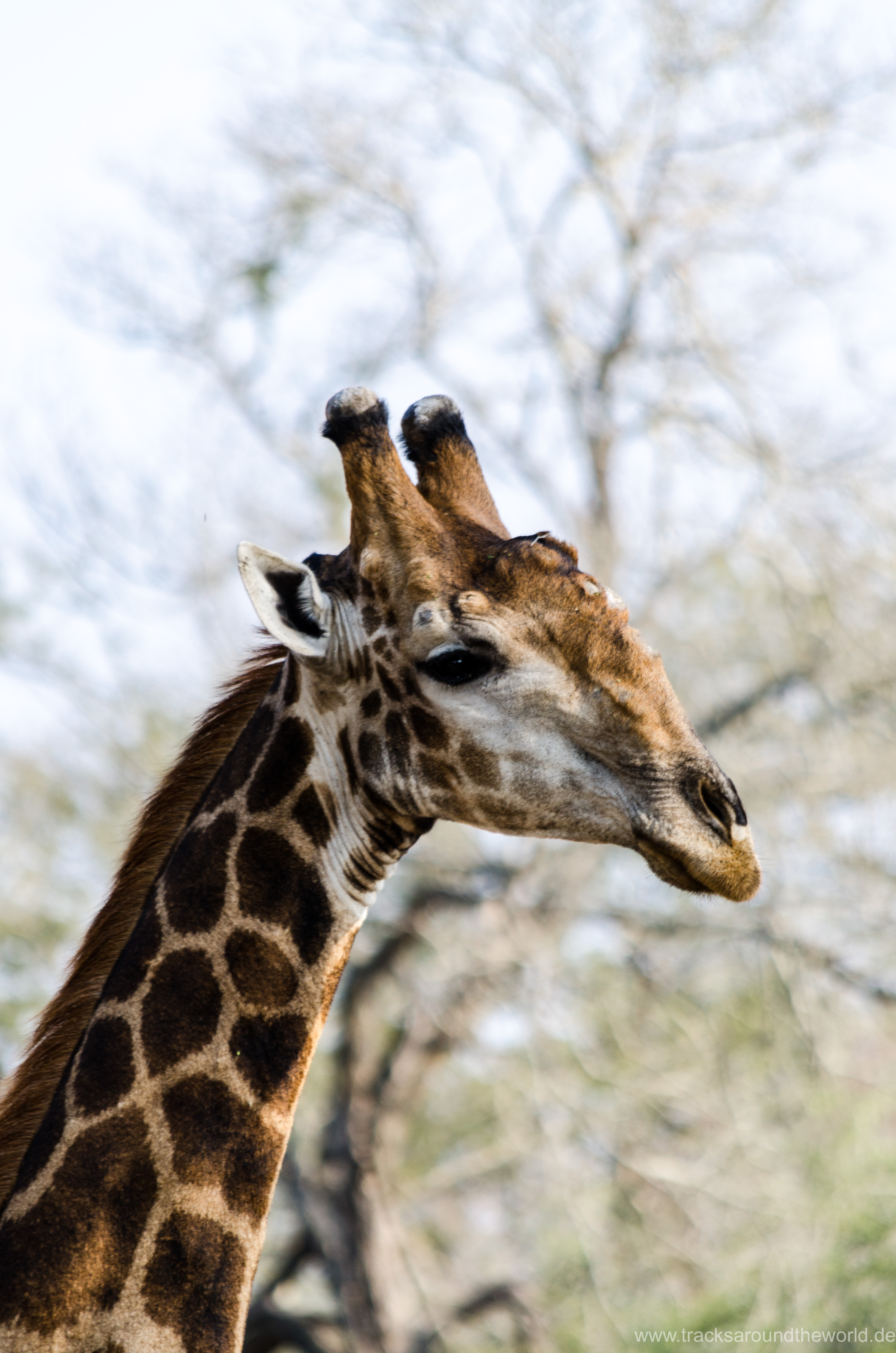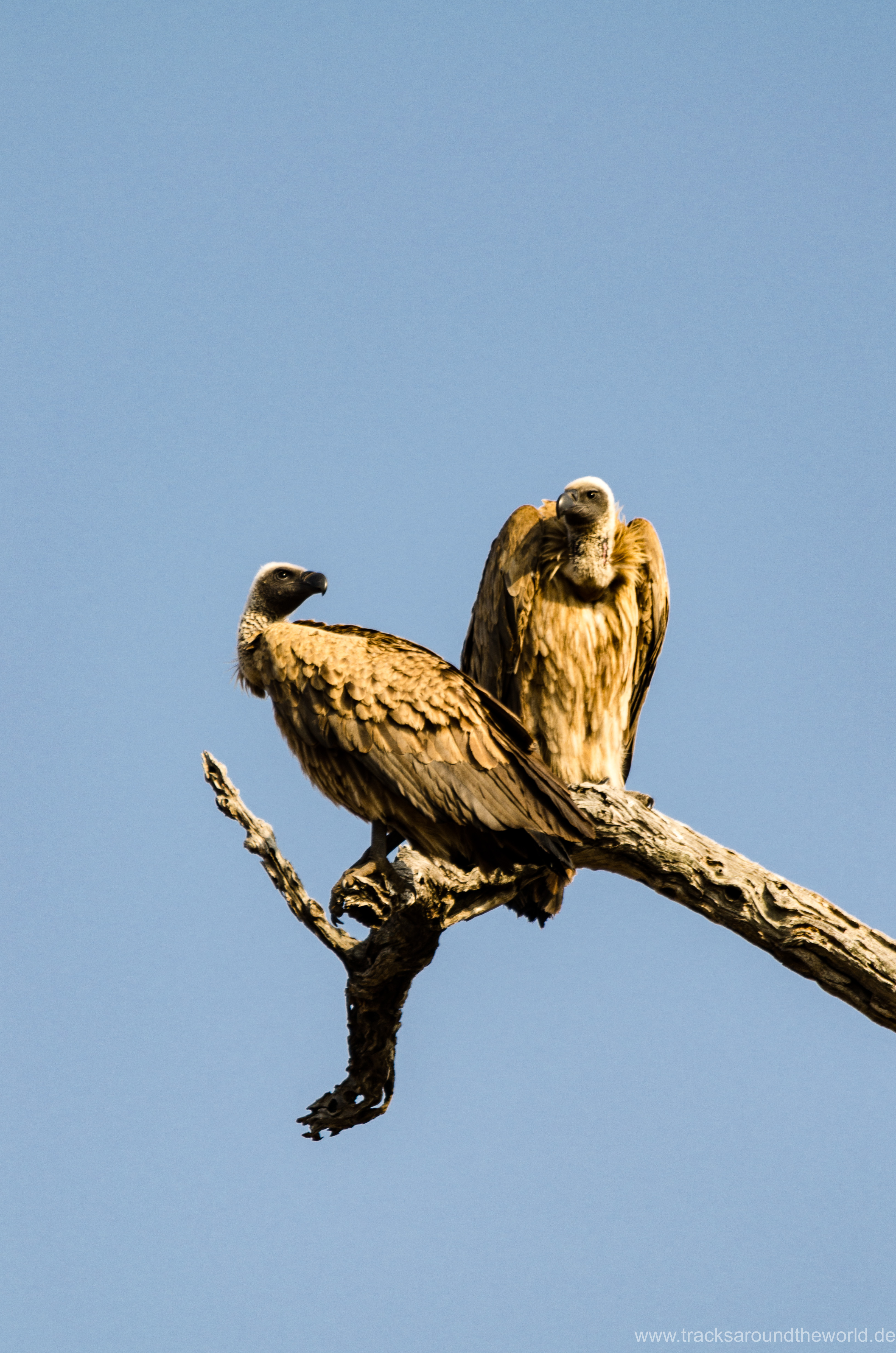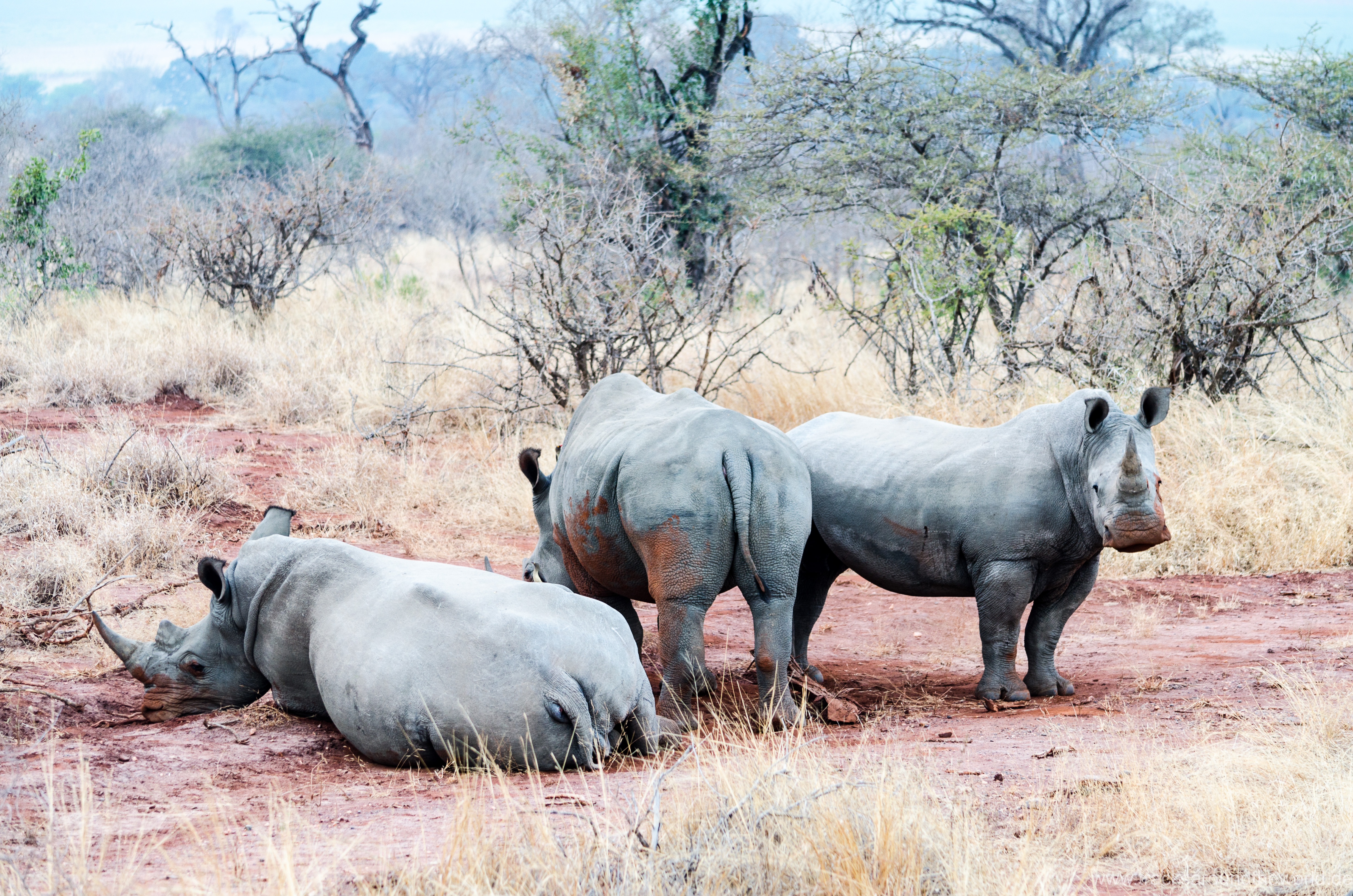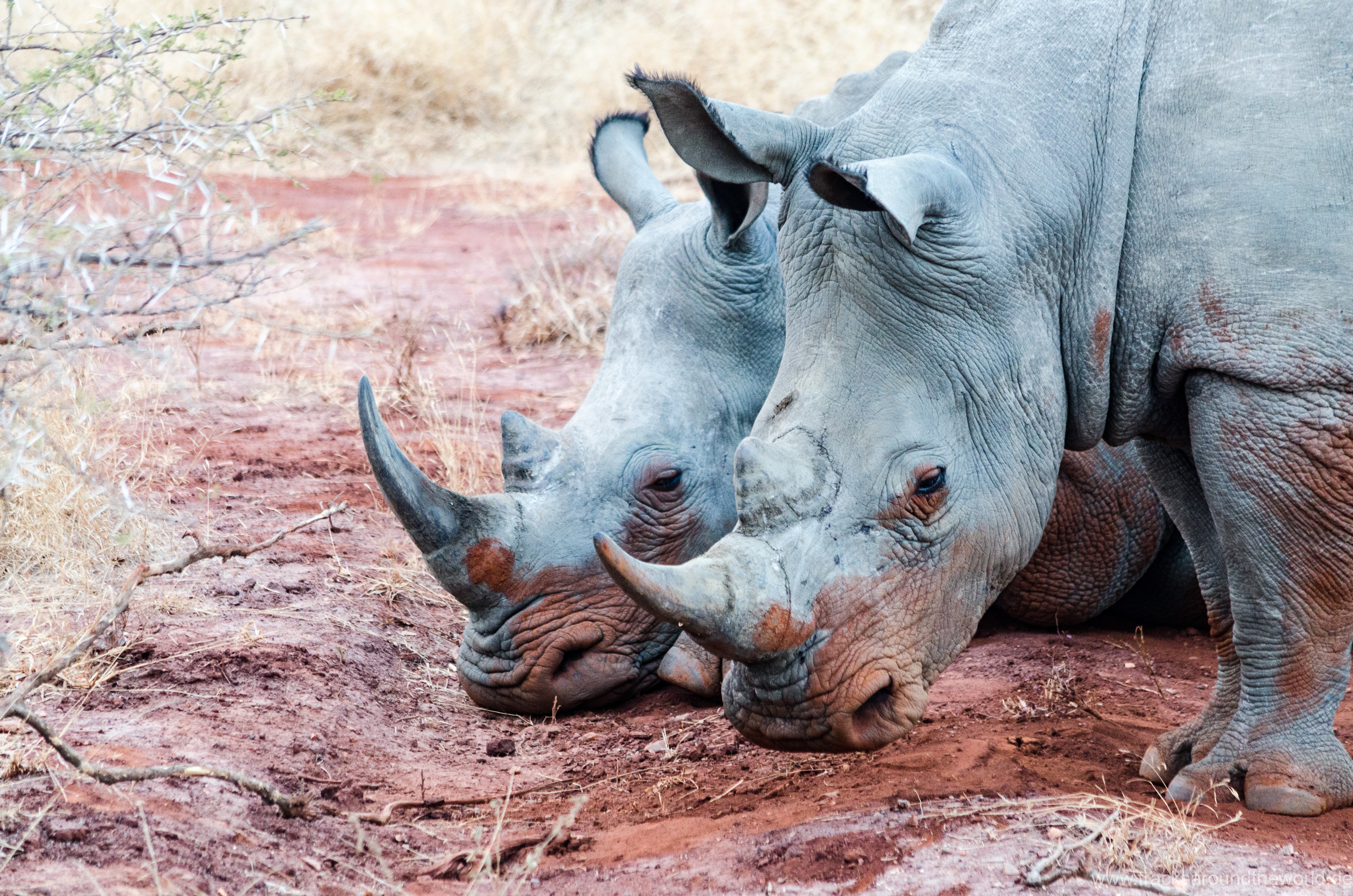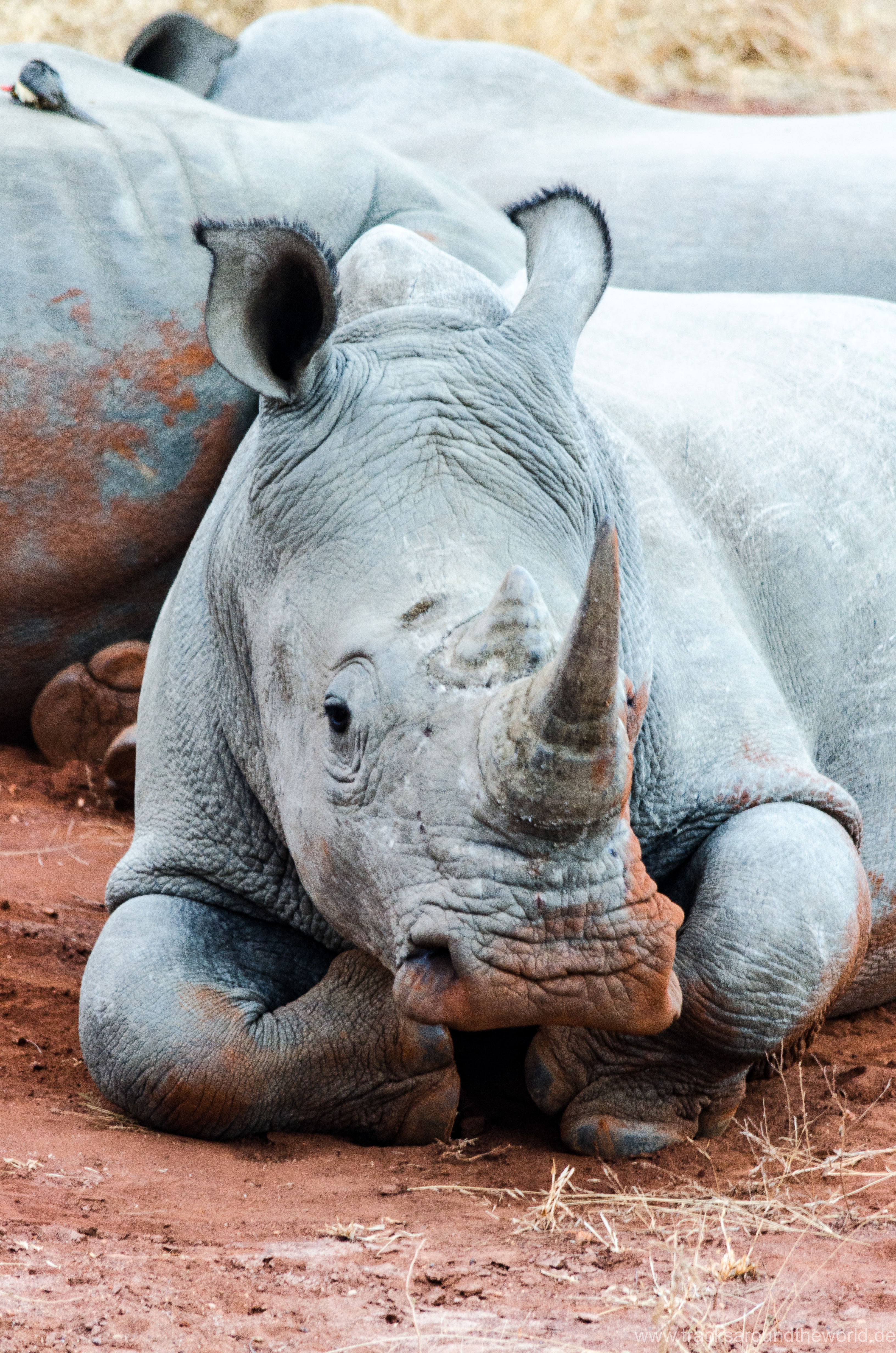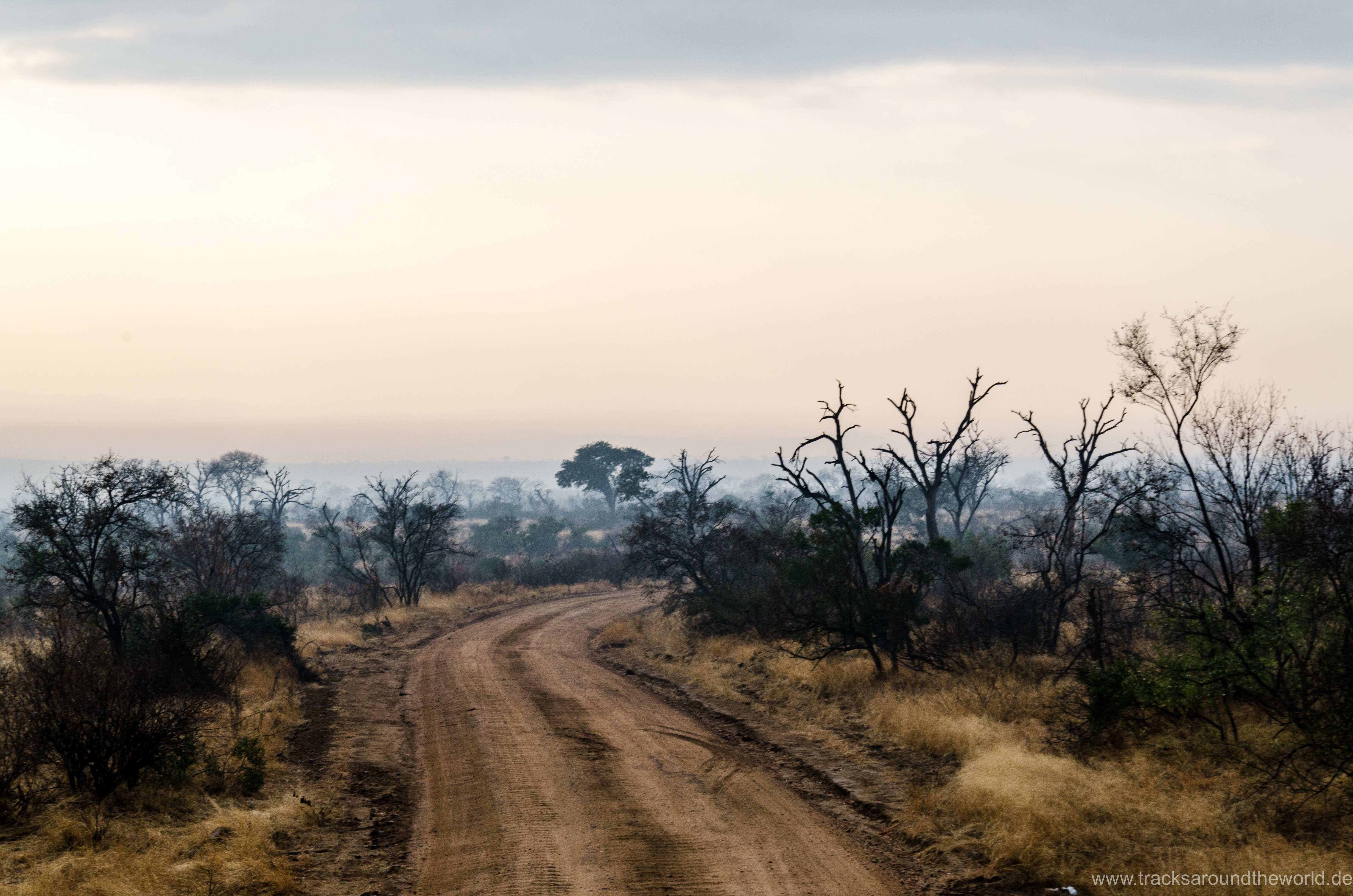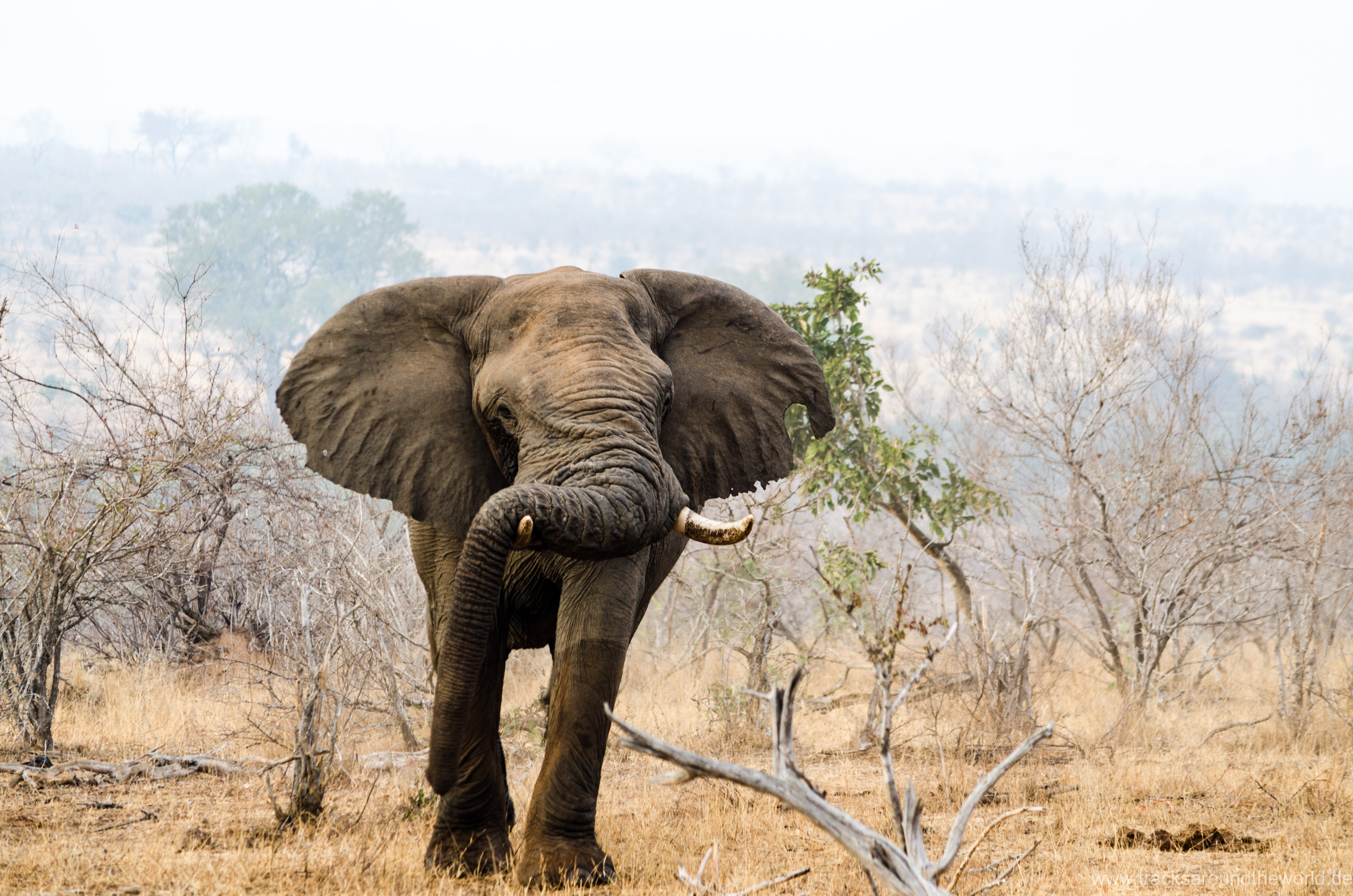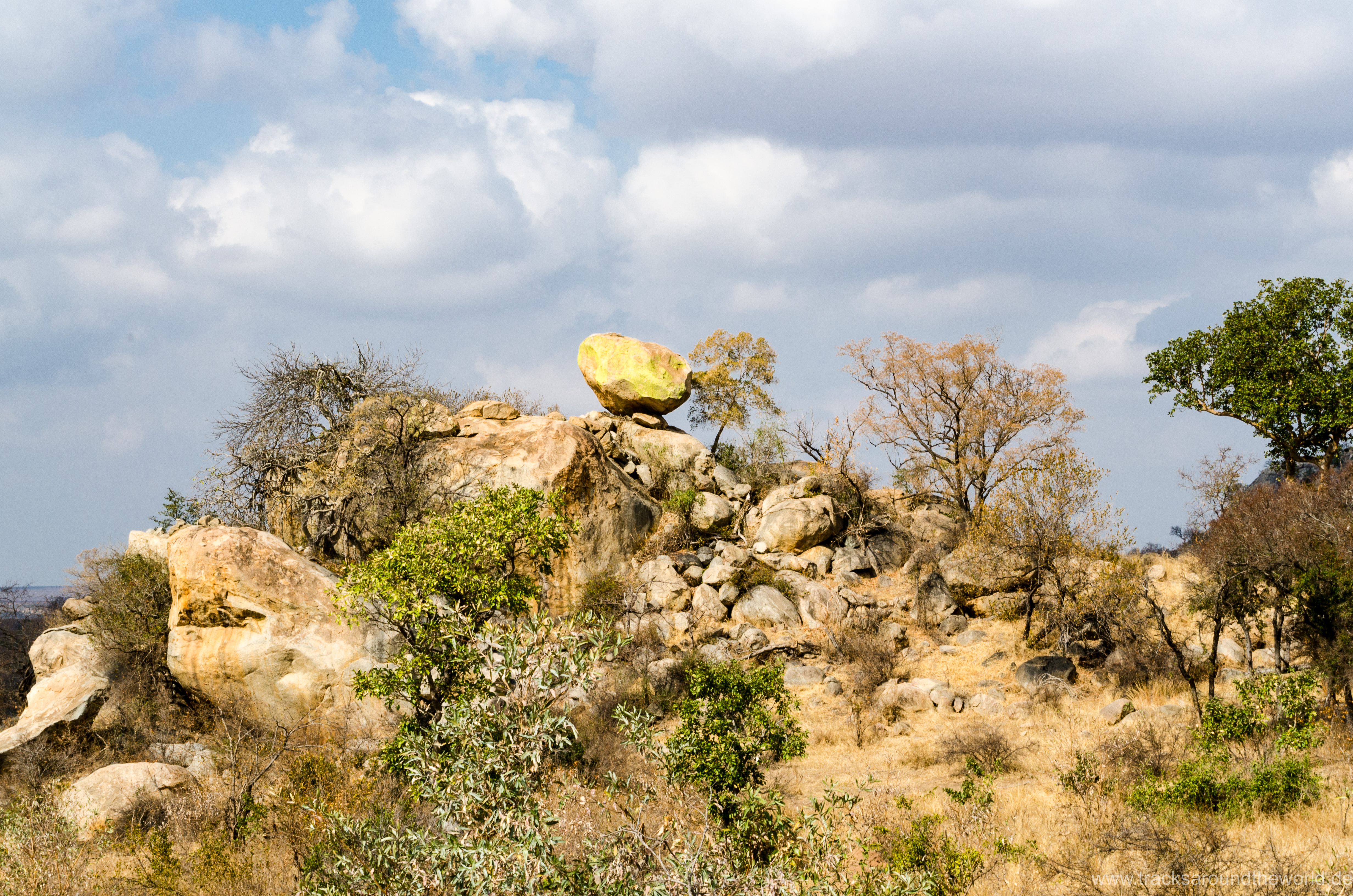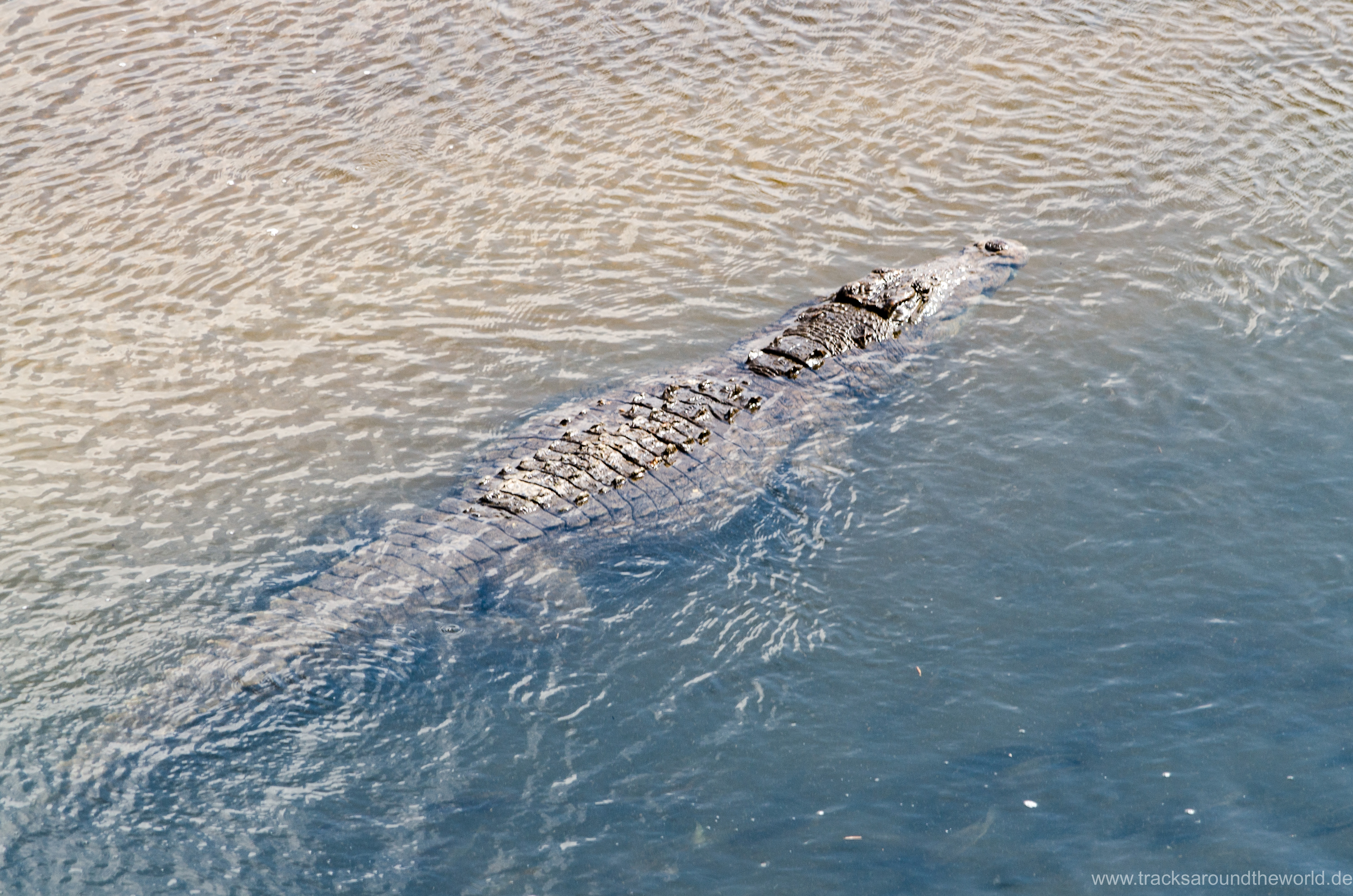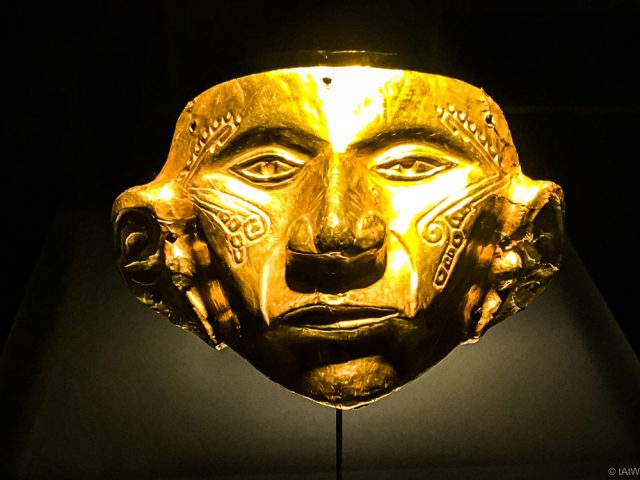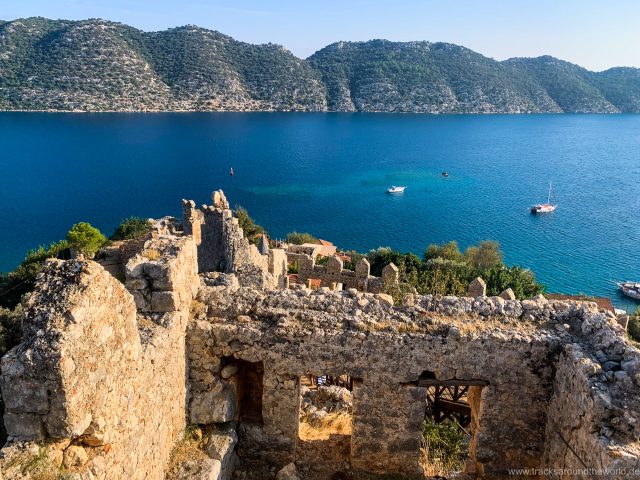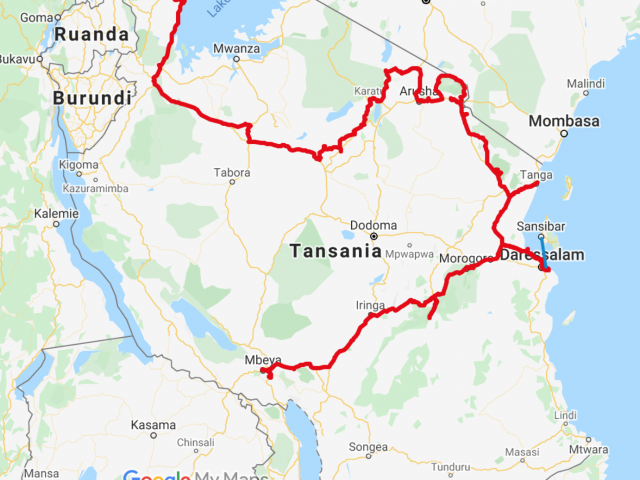South Africa welcomes us with high wire fences (even the orchards are hermetically sealed, otherwise they steal … not just the fruit, but all the trees, the houses are fenced for security anyway), dense traffic and much civilization. After Zimbabwe and Mozambique, we are a bit disillusioned at first, but we had expected this somehow. The advantage of this is that once again we can fill up our supplies without sacrificing and Shujaa gets a long overdue car wash – even with high-pressure cleaners.
Then it goes along the “Panorama Route” into the mountains, the so-called Transvaal Drakensberg Mountains: Forestry wherever the eye views, long ridges (the native Black Forest from Germany sends greetings), always great crystal-clear lakes and waterfalls which partially fall down to the 1,000 meters lower Lowveld. In the distance you can see the Kruger NP in the haze. In the village of Sabie we spend two nights curing our cold brought back from diving in Mozambique and thoroughly clean Shujaa: while Karin cleans the interior, I use my polishing attachment for my drilling machine to polish out the scratching of the cabin from the last 3 months. Unfortunately, the polishing attachment flies away again and again through the rotation …. Consequently, I cannot get around a hand polish.
The Long Tom Pass is South Africa’s second highest pass at 2,150 meters (not a real challenge for Shujaa and us, after our South America altitude training with over 5,000 meters above sea level) and the Blyde River Canyon is considered with a depth of 700 meters to be the third deepest canyon in the world. Although the holiday season of the South Africans is over, all viewpoints are still very touristy. So, we have the opportunity to adapt to what we will be expecting at Kruger N.P. Before that, however, we continue north to the province of Limpopo off the beaten track and we find the Ebenezer Dam south of Tzaneen as well as in the Soutpansbergen still completely untouched, beautiful nature with great wild camping opportunities. There we also visit Erika and Melanie (we were already spent a few nights in the Tuli Block in Botswana in their great Private Game Reserve) on their Macademia-Nut farm, have great conversations and learn a lot of interesting things about the great challenges of the country. As part of a full-day quad bike tour, we explore the beautiful lakes and rivers in the mountains. Even imported from California, huge redwood trees are here.
The Kruger N.P. we explore from the untouristic north to the much more touristy south. In just 5 days, we drive over 1,000 km in the park, take all the interesting “loops” and detours and avoid the busy tar roads as much as possible. The first two campgrounds in the lodges Shingwedzi and Letaba are better than expected and we always find a quiet spot for Shujaa. Outside the holiday season, however, the South African retirees settle down on the campgrounds their temporary home for a couple of weeks with awning, artificial turf and complete long-term camping infrastructure. We, on the other hand, leave the camps at 6:00 am for the morning game drive and arrive shortly before sunset …. A completely different approach. The further south we come, the more touristy and packed it gets. In the Lower Sabie Camp, the dense campground with mini-pitches is completely unsuitable for Shujaa. That’s why we are going to a quiet spot in the lodge area and dream how great it would be to be able to do “wildcamping” in Kruger …. We had seen some great spots where no ranger could certainly find us. However, we do not want to take the risk of a high penalty in case they would spot us.
Driving along the park borders in the south of the park, we are also particularly aware of the difference between the (almost) untouched nature within the N.P. and the densely populated and agriculturally used lands directly adjoining the park boundaries. The high population growth and the resulting consequences is one of the main problems of the continent. And so the natural and typically African scenery is disappearing more and more completely from the map.
Our personal conclusion of Kruger: Great wildlife viewing, as we have seen the Big 5 several times. The park is perfect for self-drivers, even with big vehicles. The tourism is still o.k. in the north, and difficult to digest in the south.


